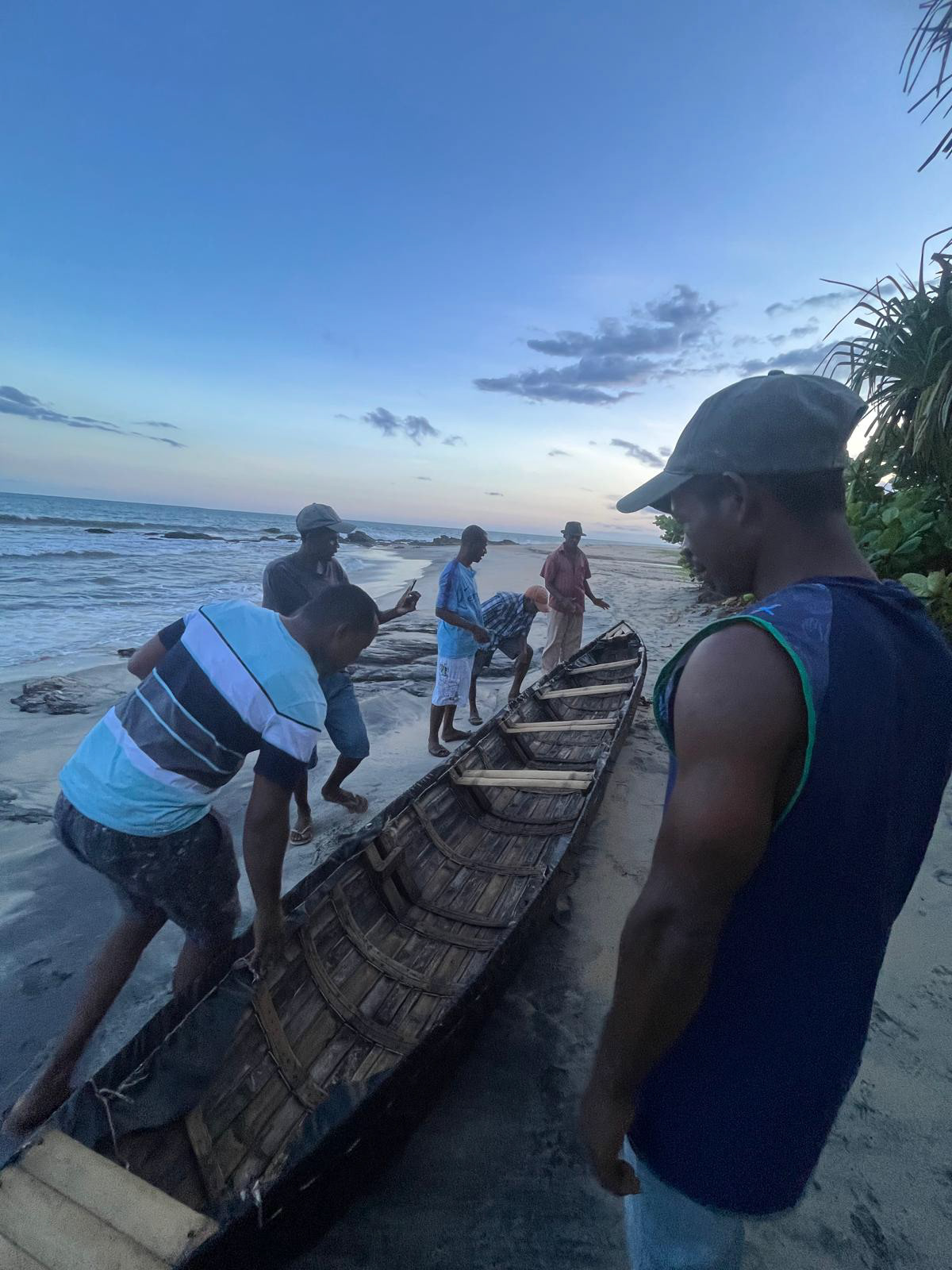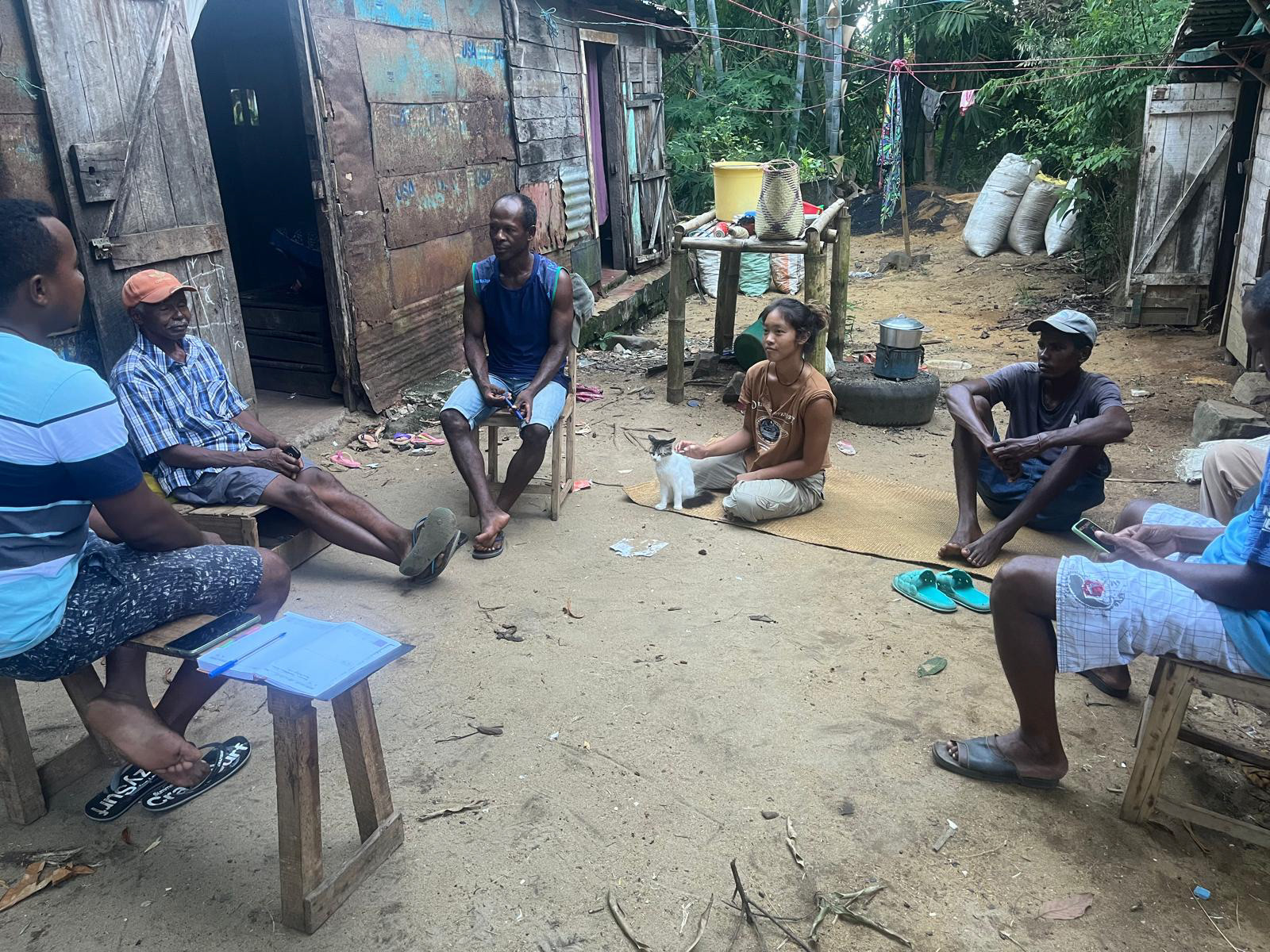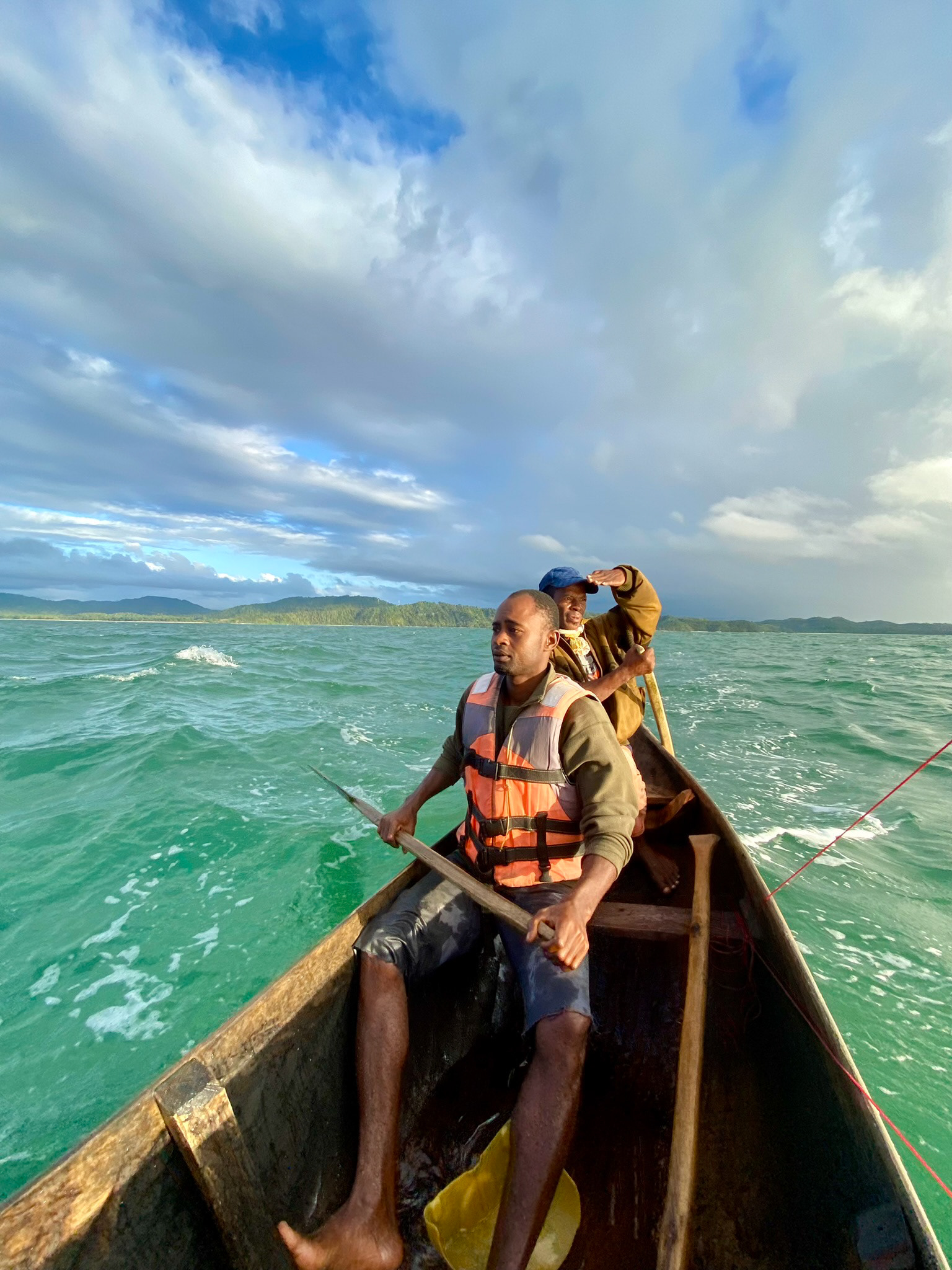
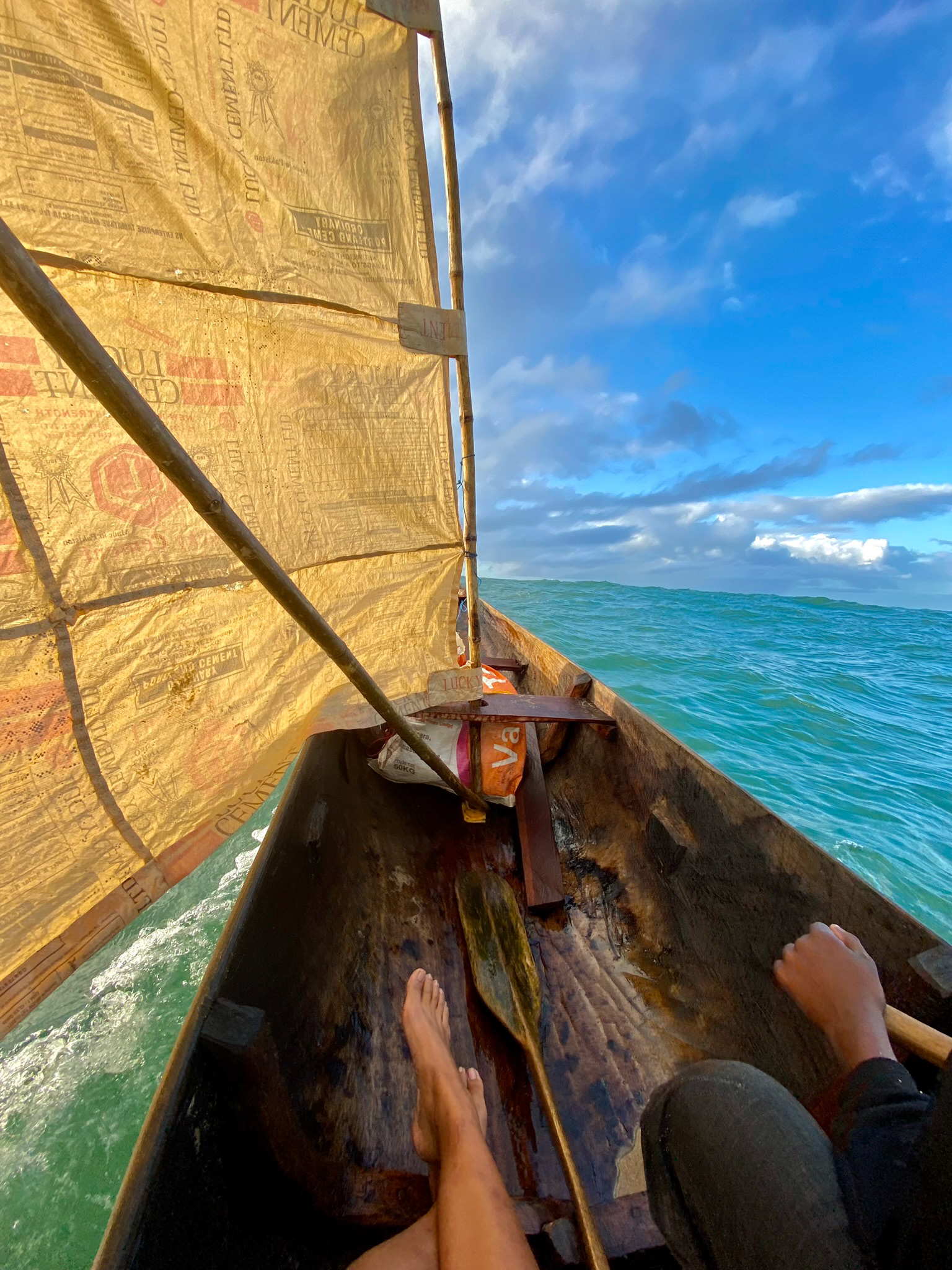
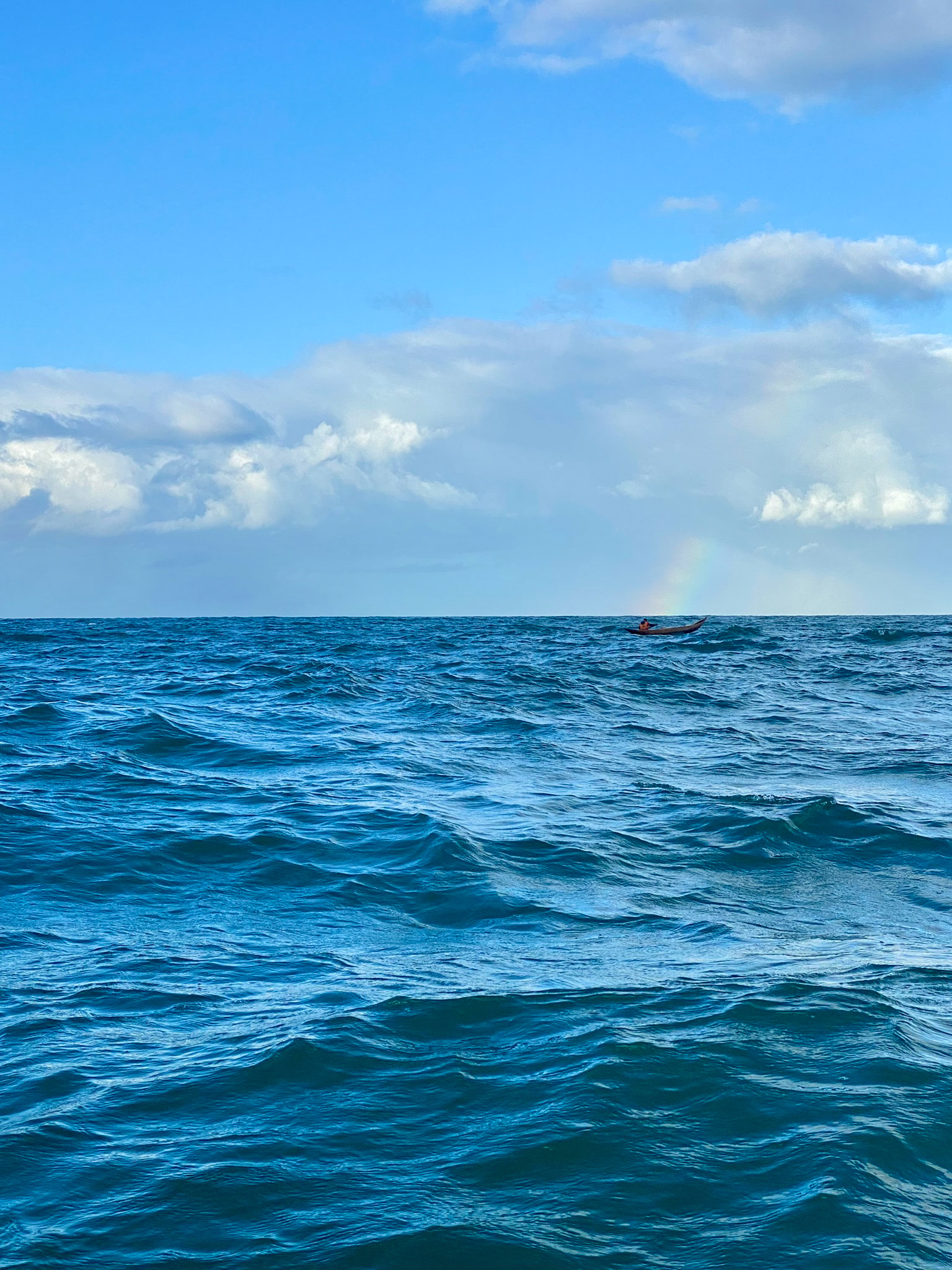
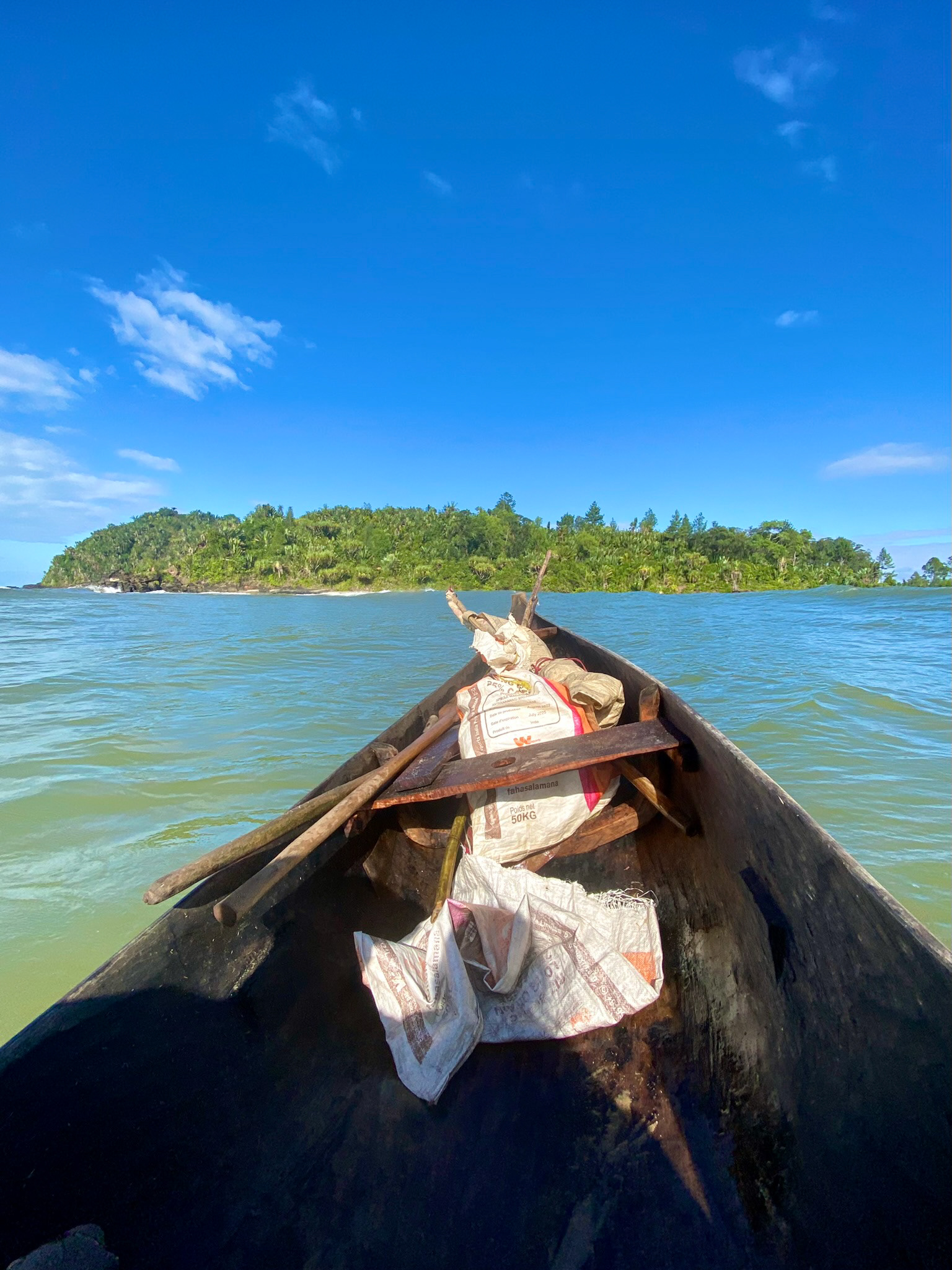
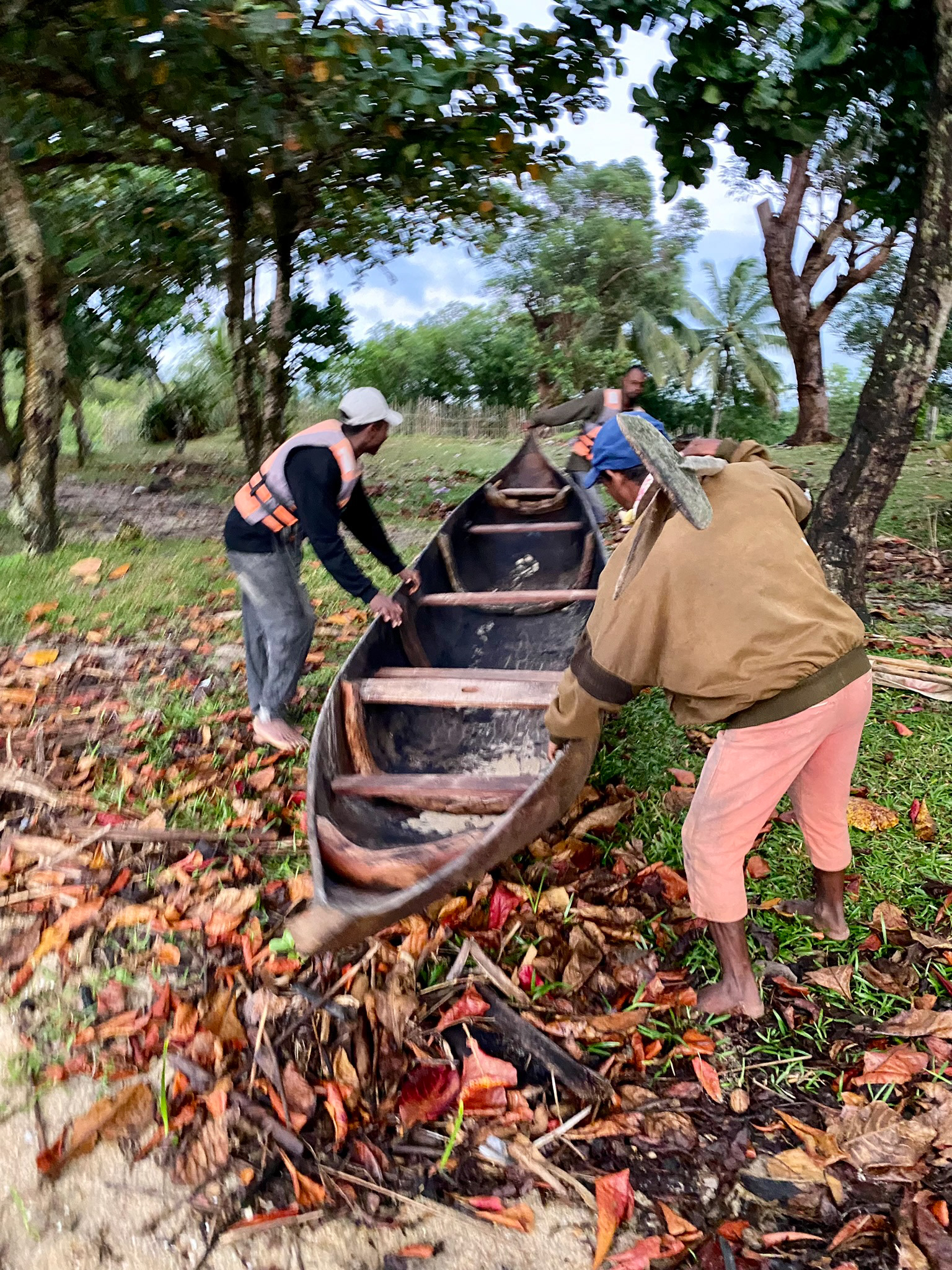
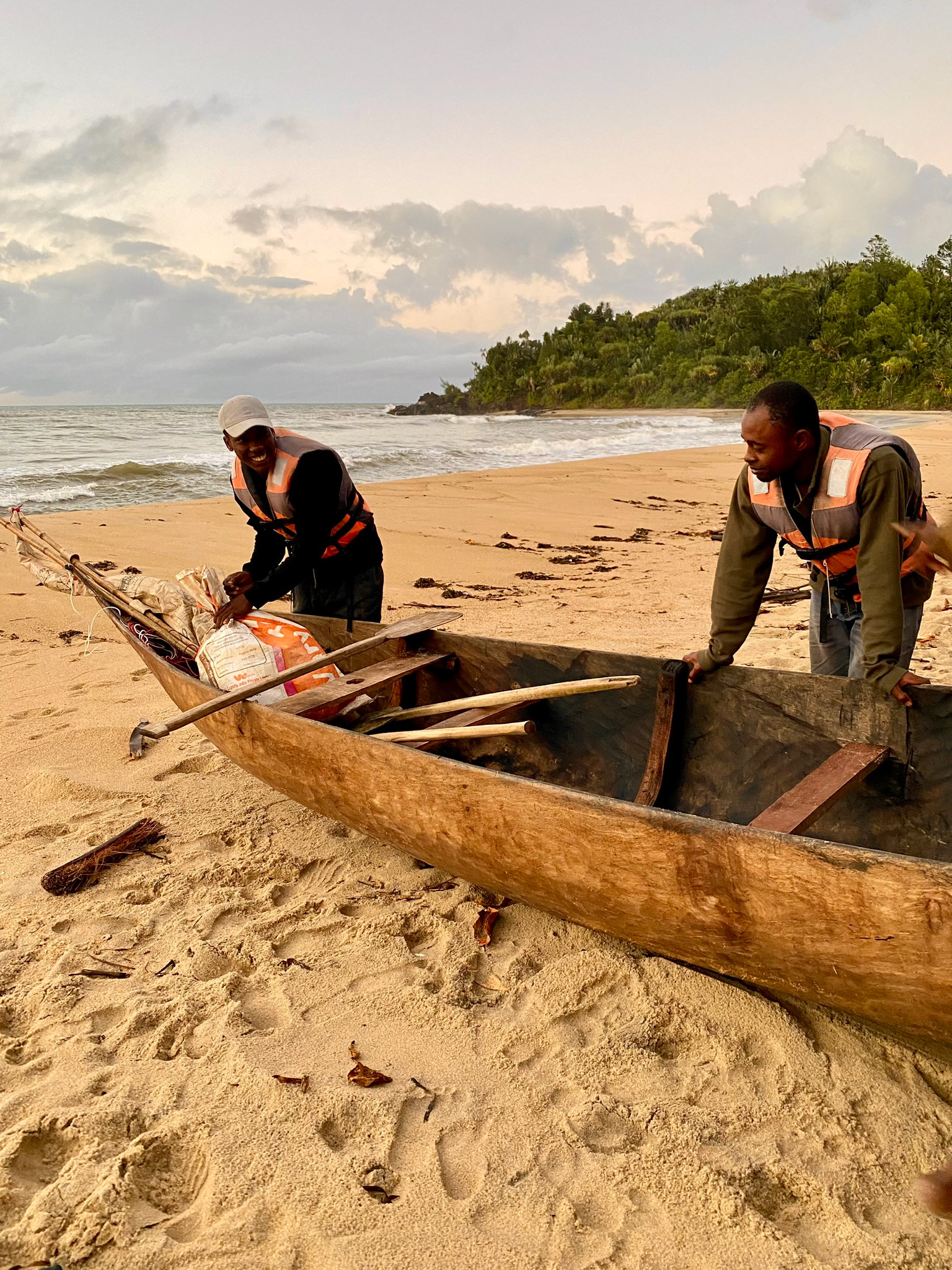
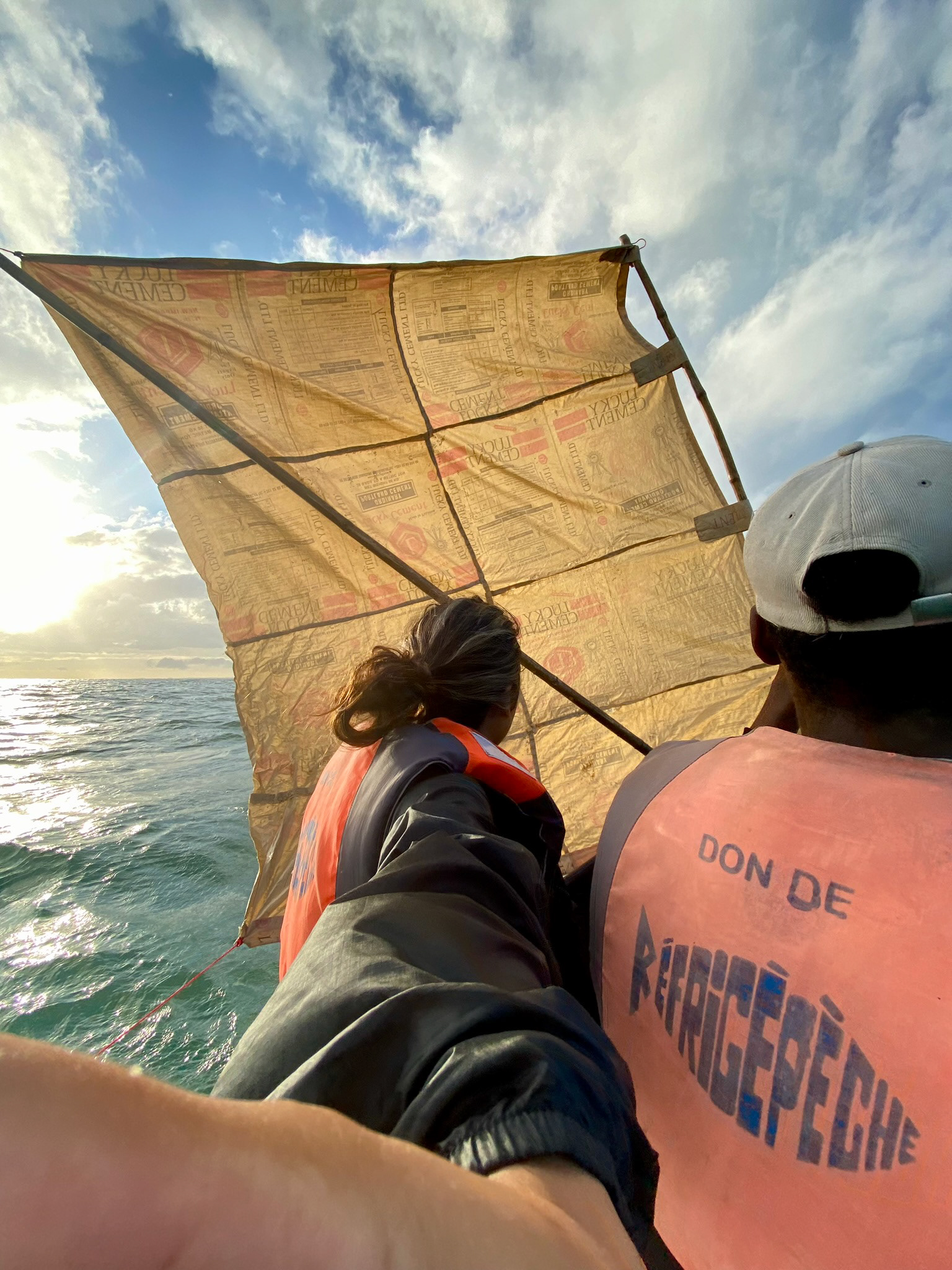
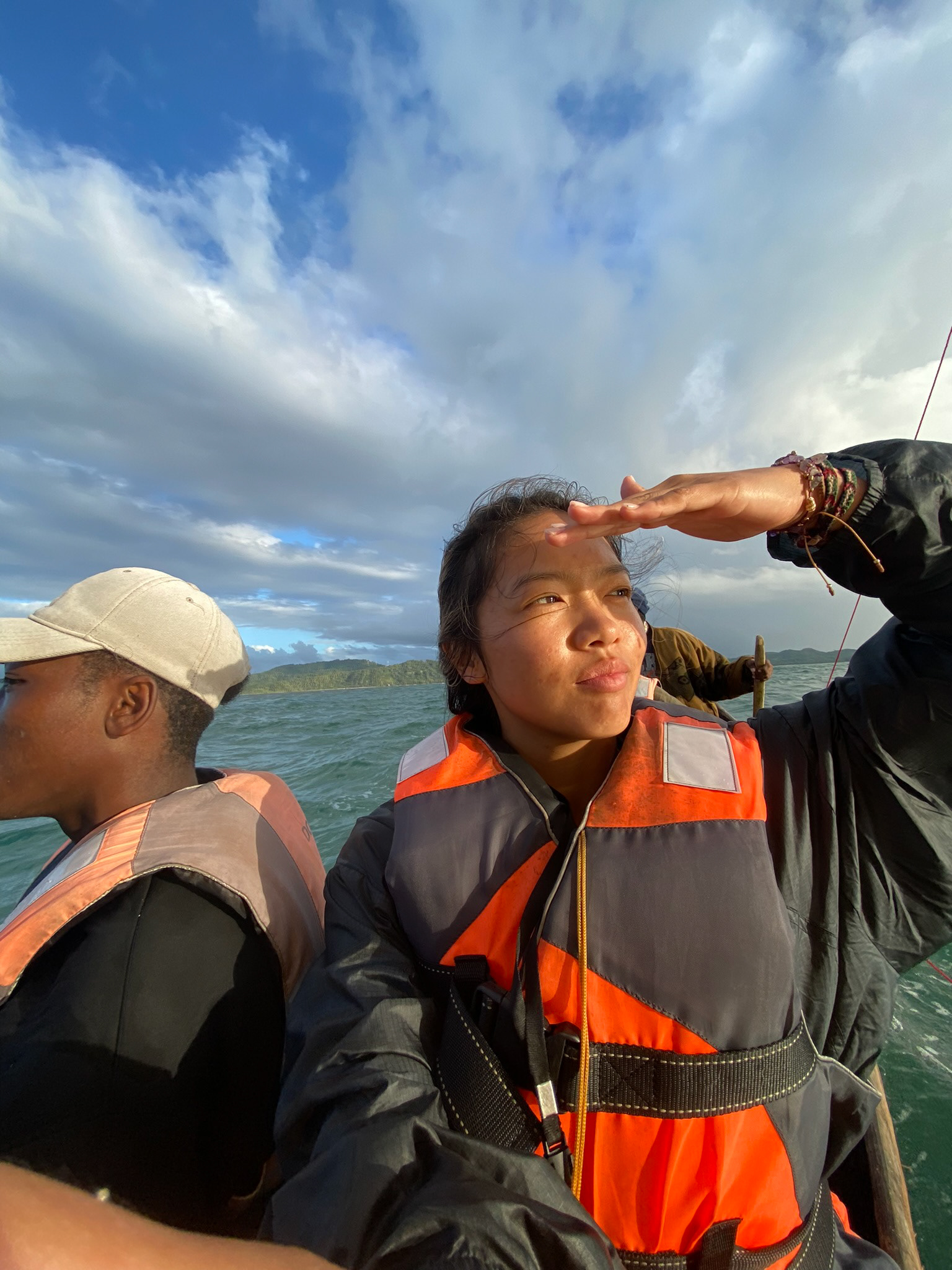
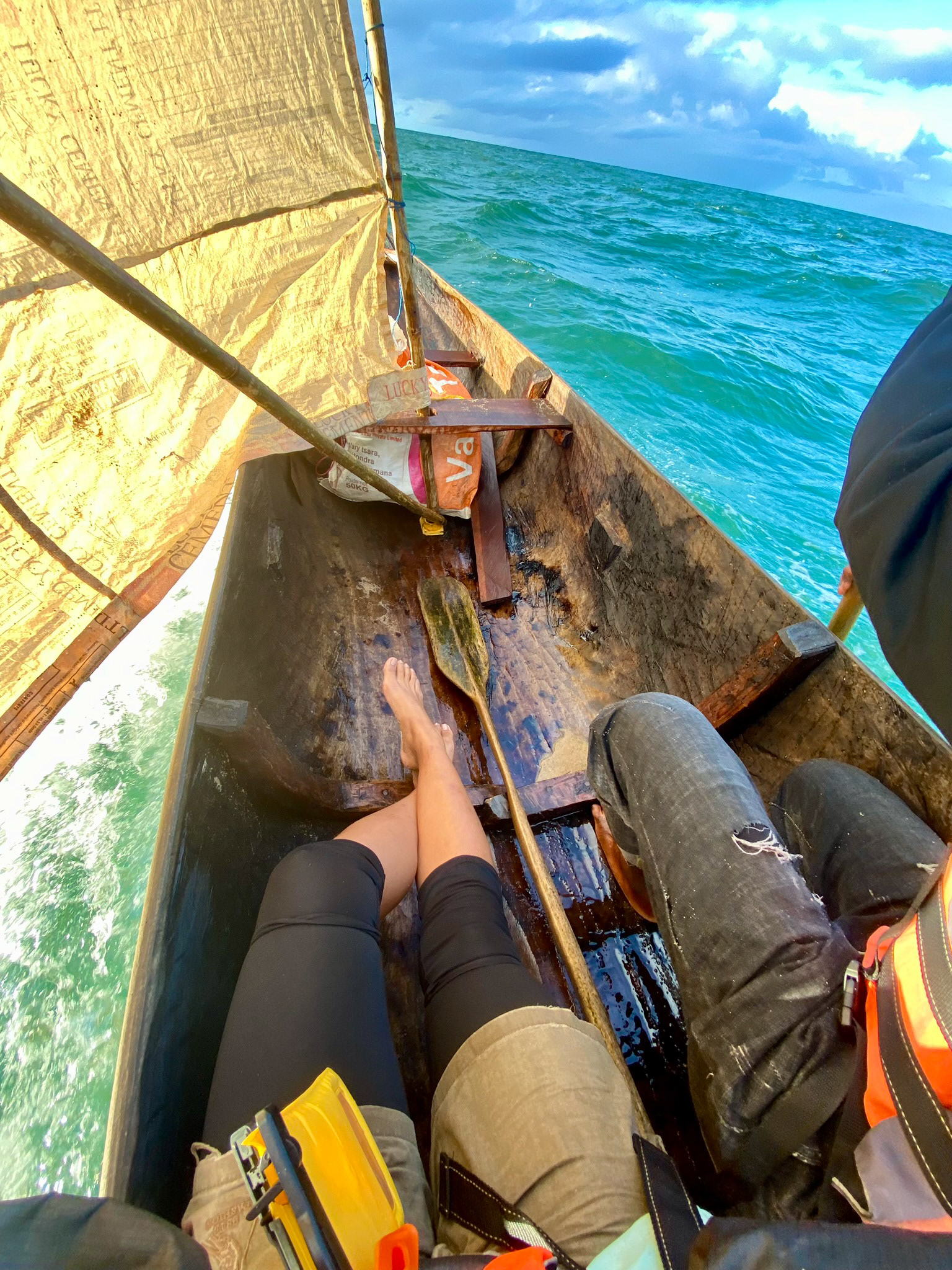
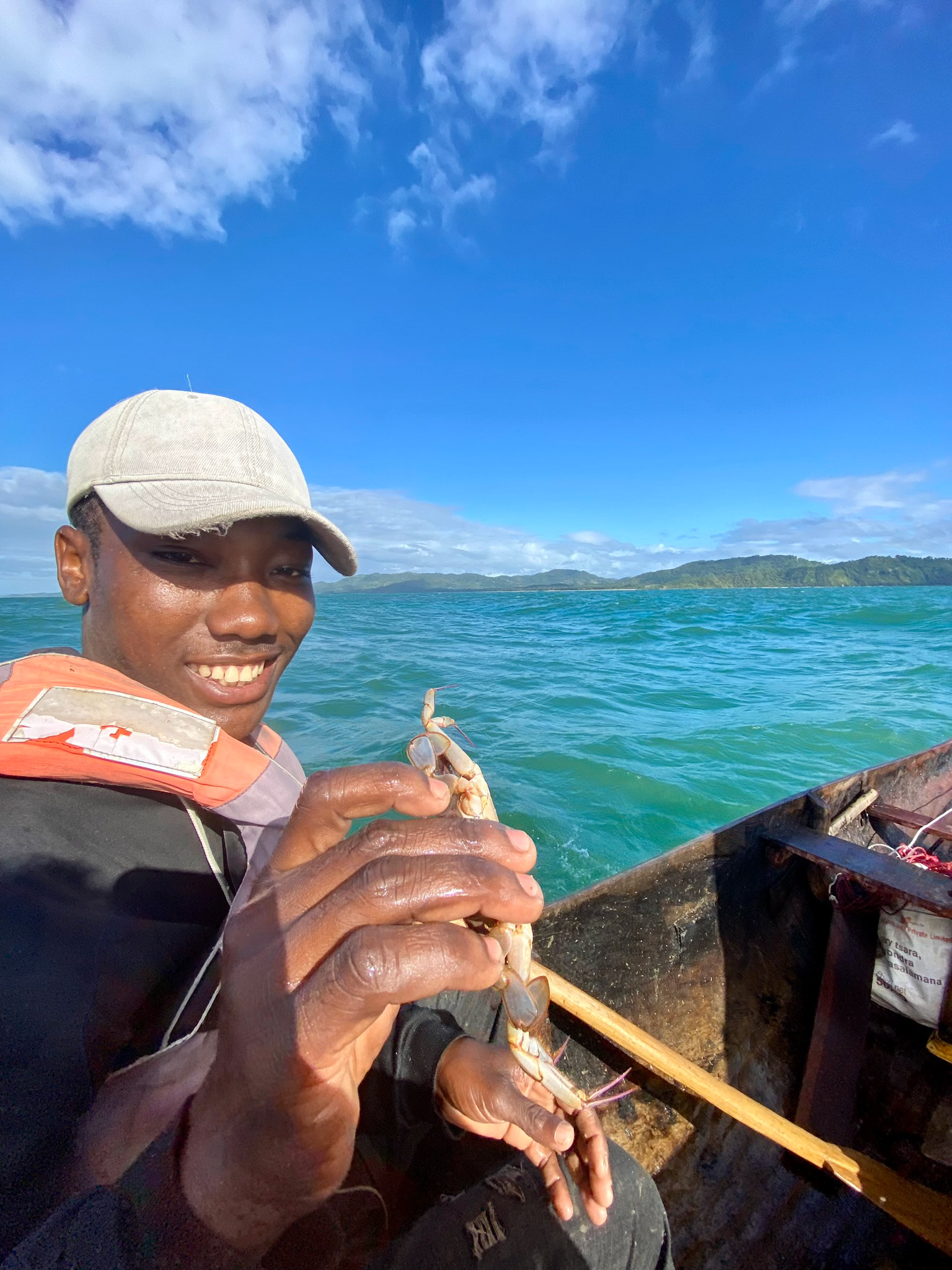
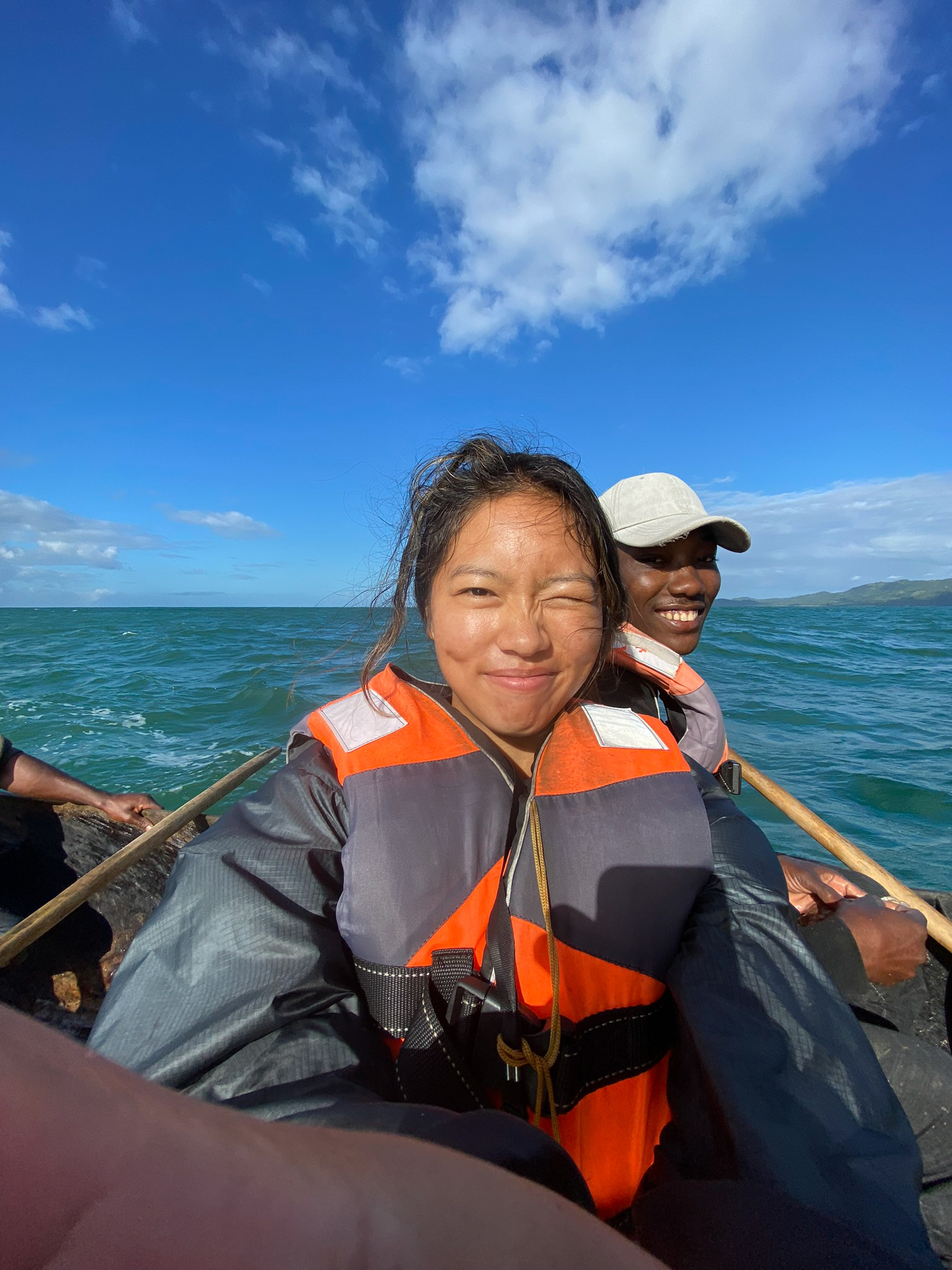
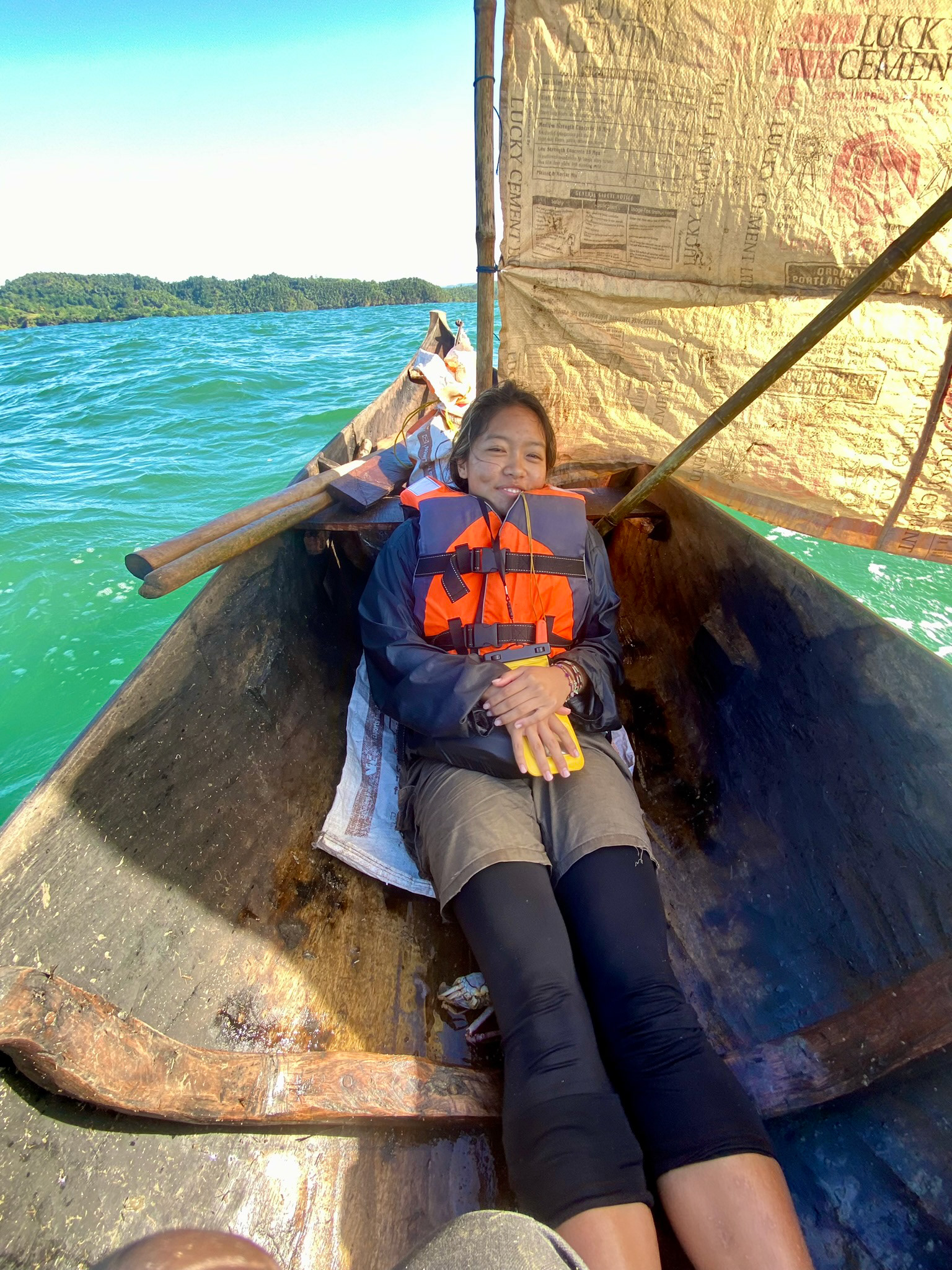
My idea for this project began when I started getting close to the people of Menatany's fishing community. They wake up as early as 4am to be on the sea by 5am. I noticed that women in the village typically do not go out on the boats but stay by shore to sort and sell the fish as they come in. Fishing immediately struck me as a place start discussion around gender roles in the community as it is the main source of income generation here, and a staple activity for all the families. As I collected information about the fishing tools, practices, and costs, I realized the potential that bamboo boats could have on the community. I wanted to get a Peace Corps grant for it, but knew I needed a working product to justify receiving money for it.
I spent a good couple of months researching the types of bamboo available close by and the current practices in using them. Some houses are built with bamboo so I learned as much as I could from the people who built them just to get a feel for working with the material. I can understand why the familiarity with regular wood types makes it harder to venture to work with new material. The techniques in using bamboo are very different, and there is a bit of a learning curve to working it. Techniques also vary depending on the species of bamboo you are using. I learned that while material costs may become much for affordable when using bamboo, the overhead costs of manufacturers and transportation bring the price of bamboo products up.
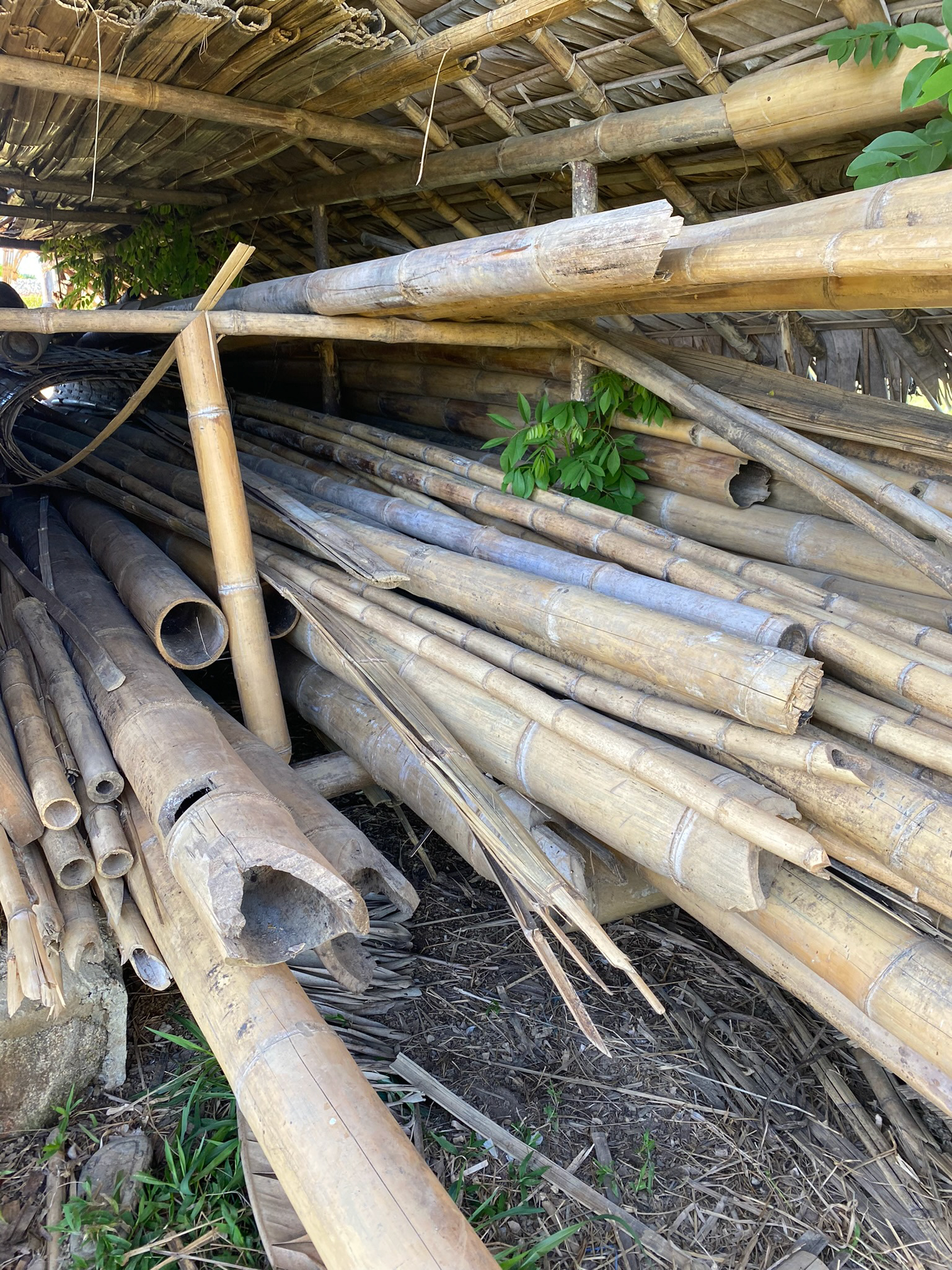
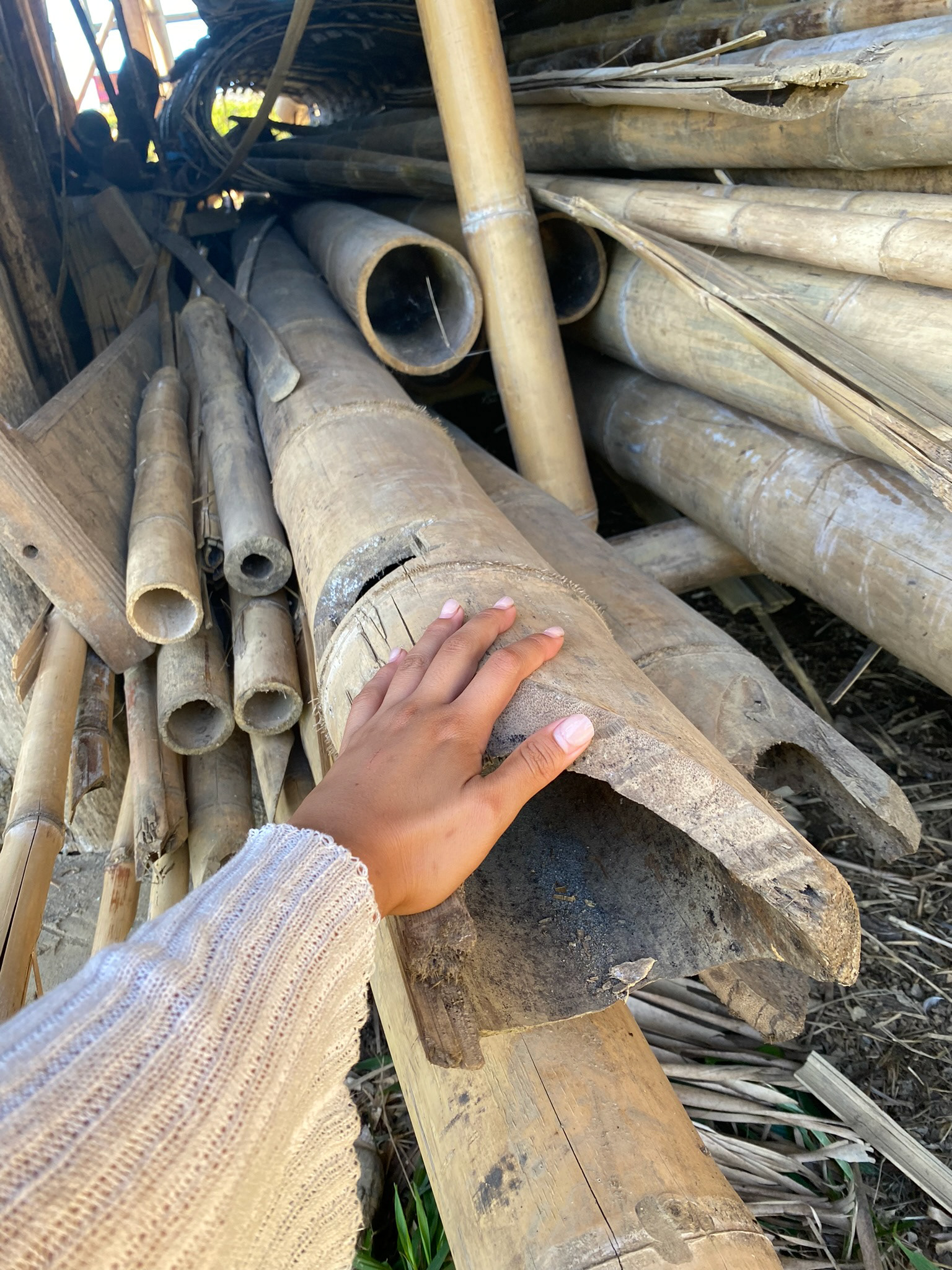

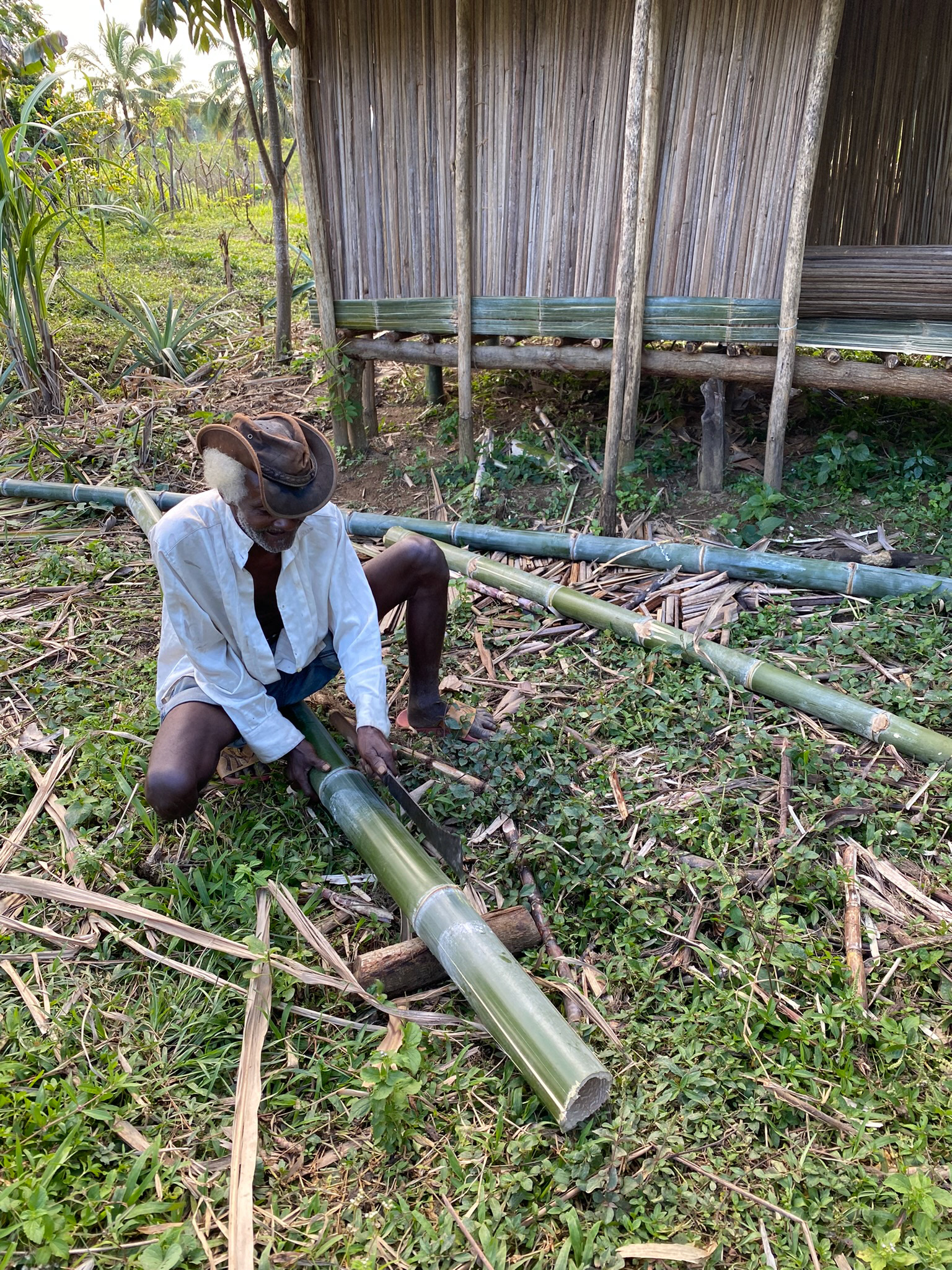
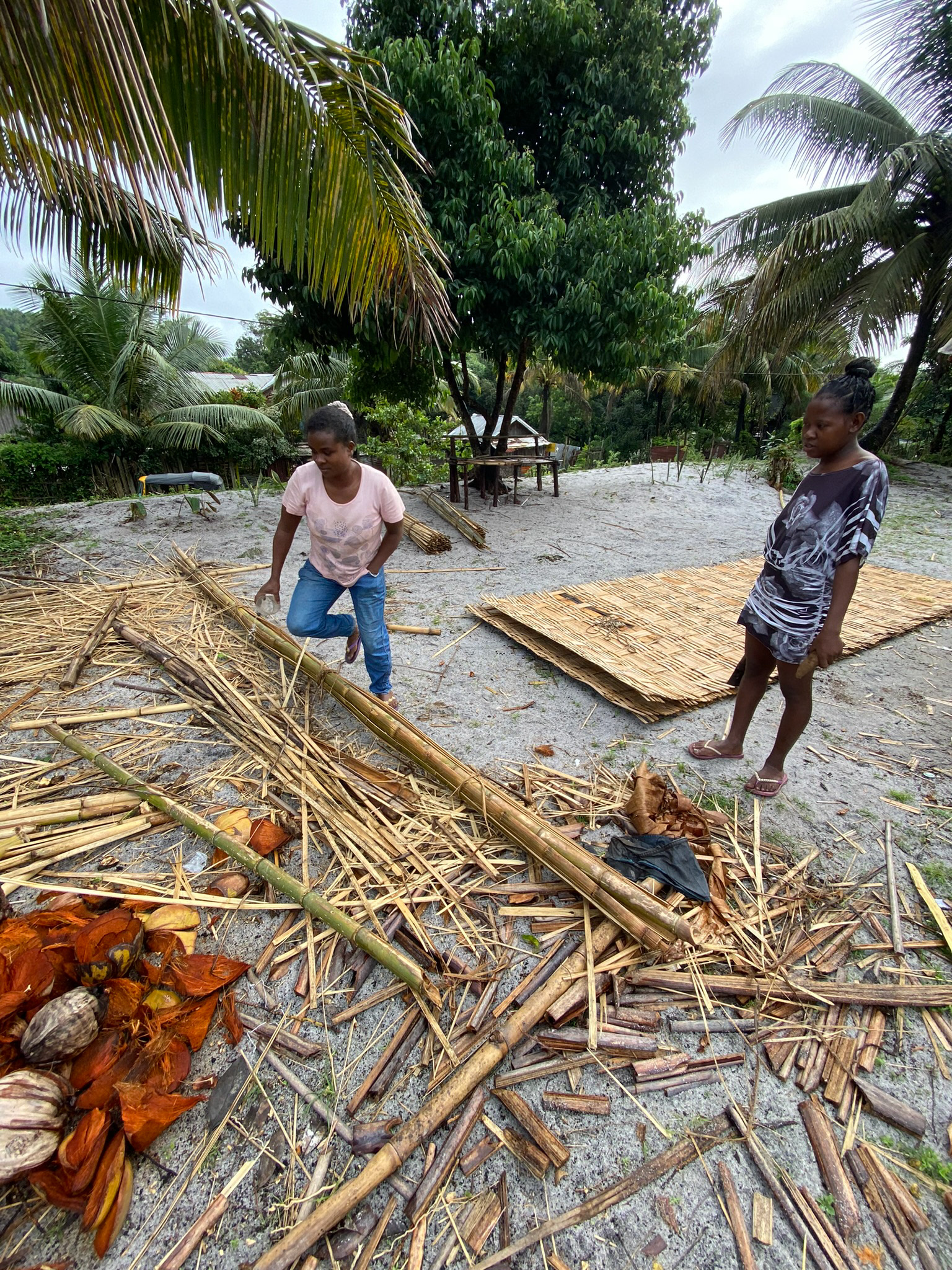
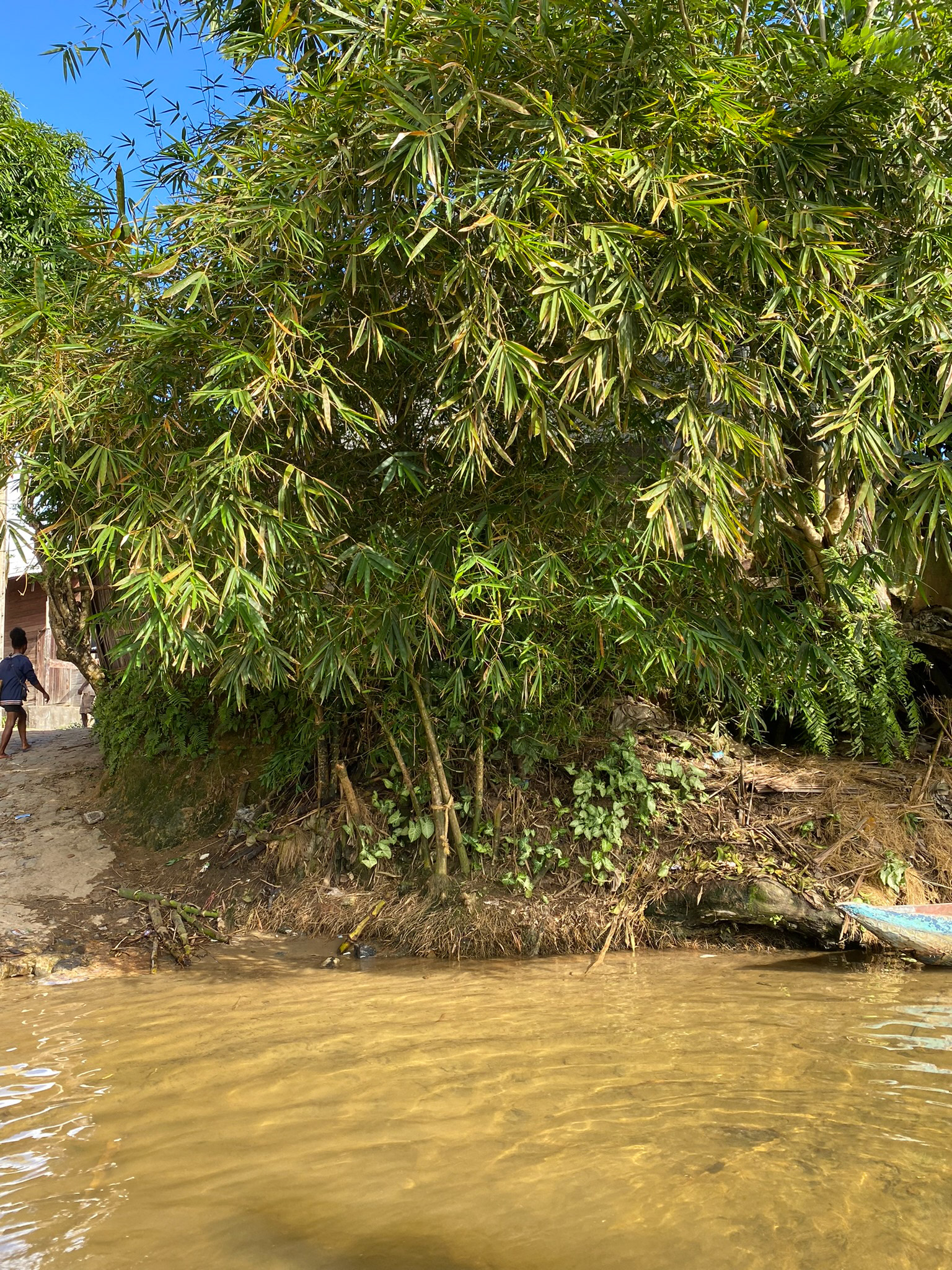
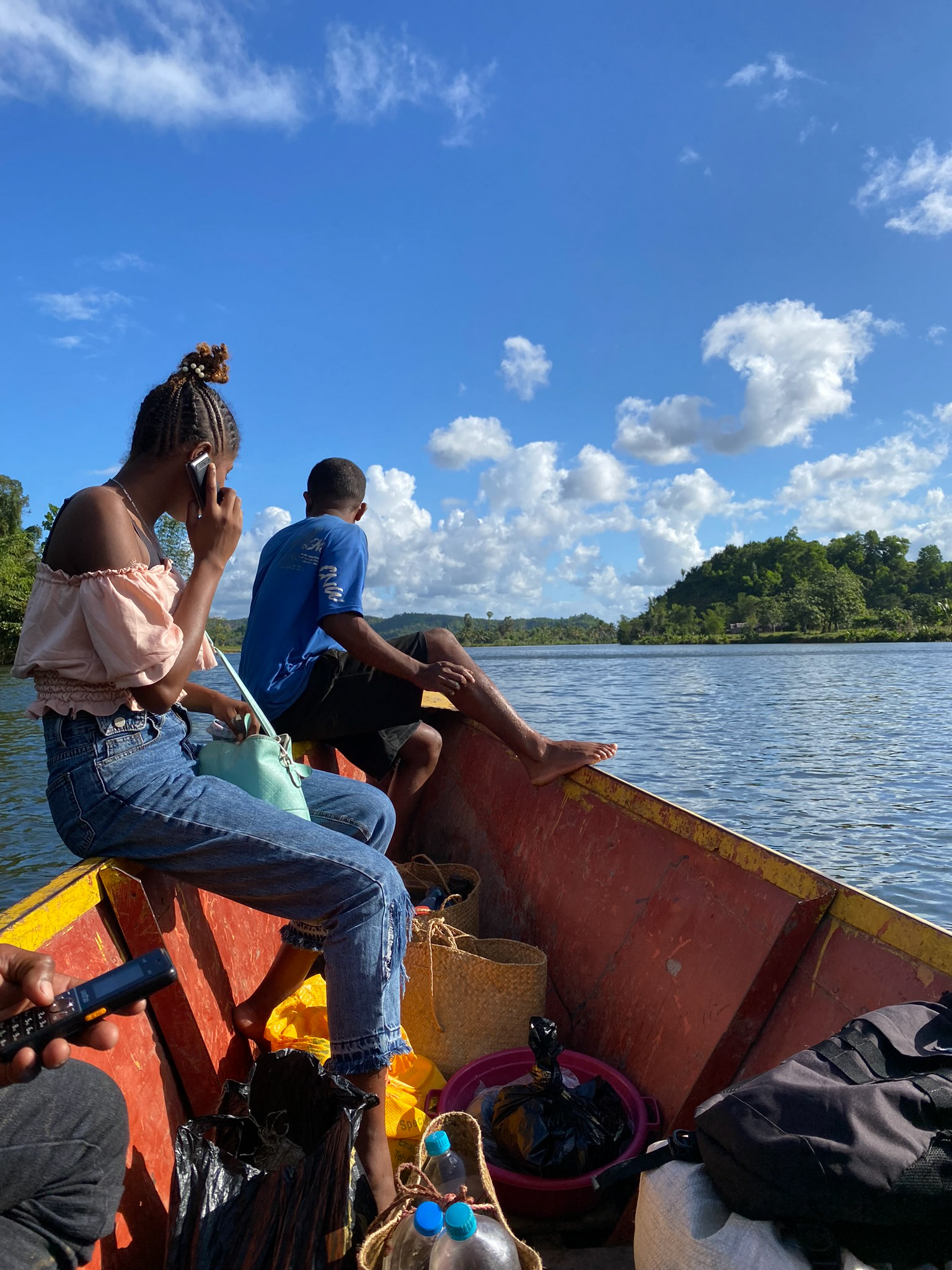
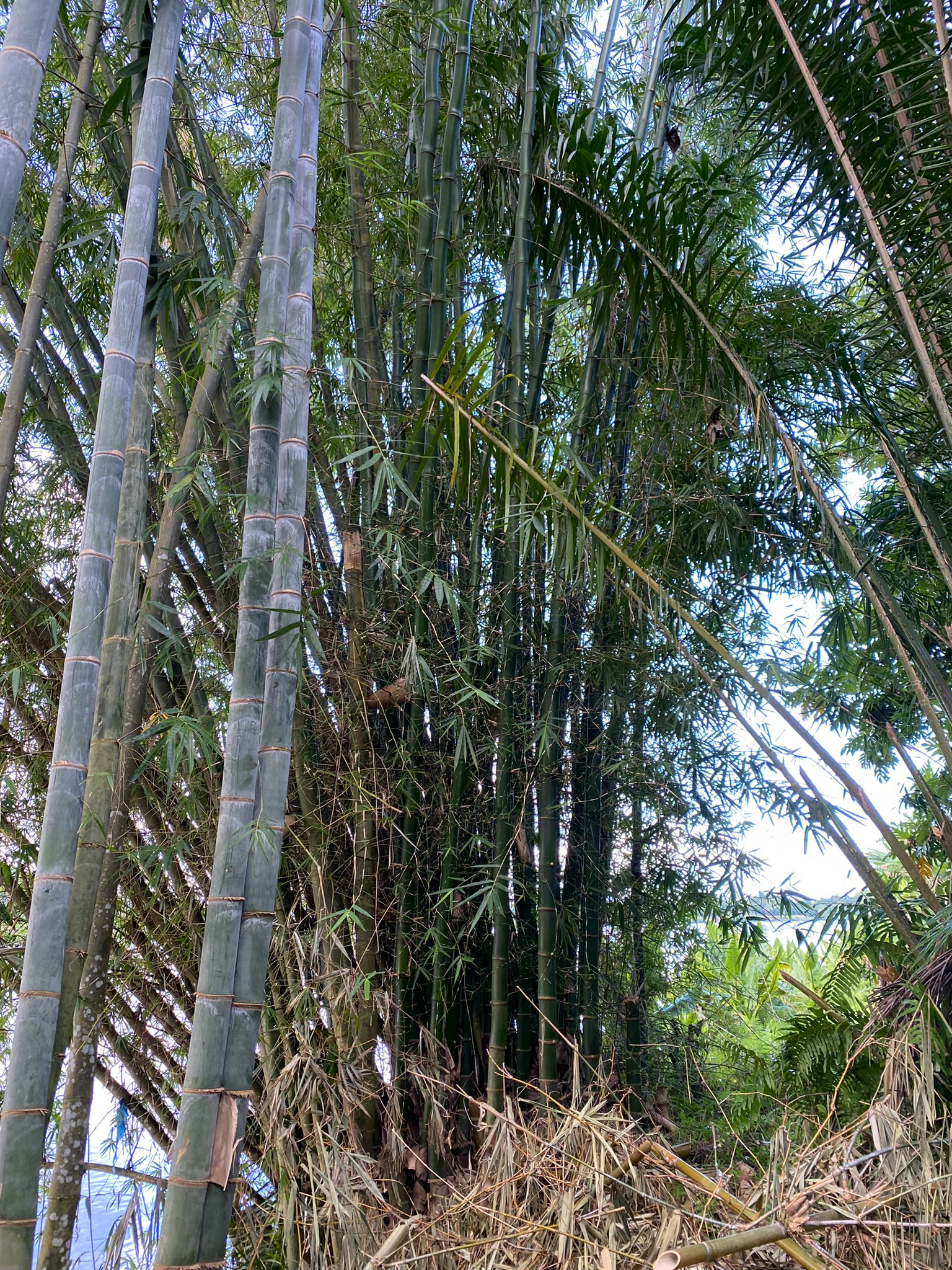
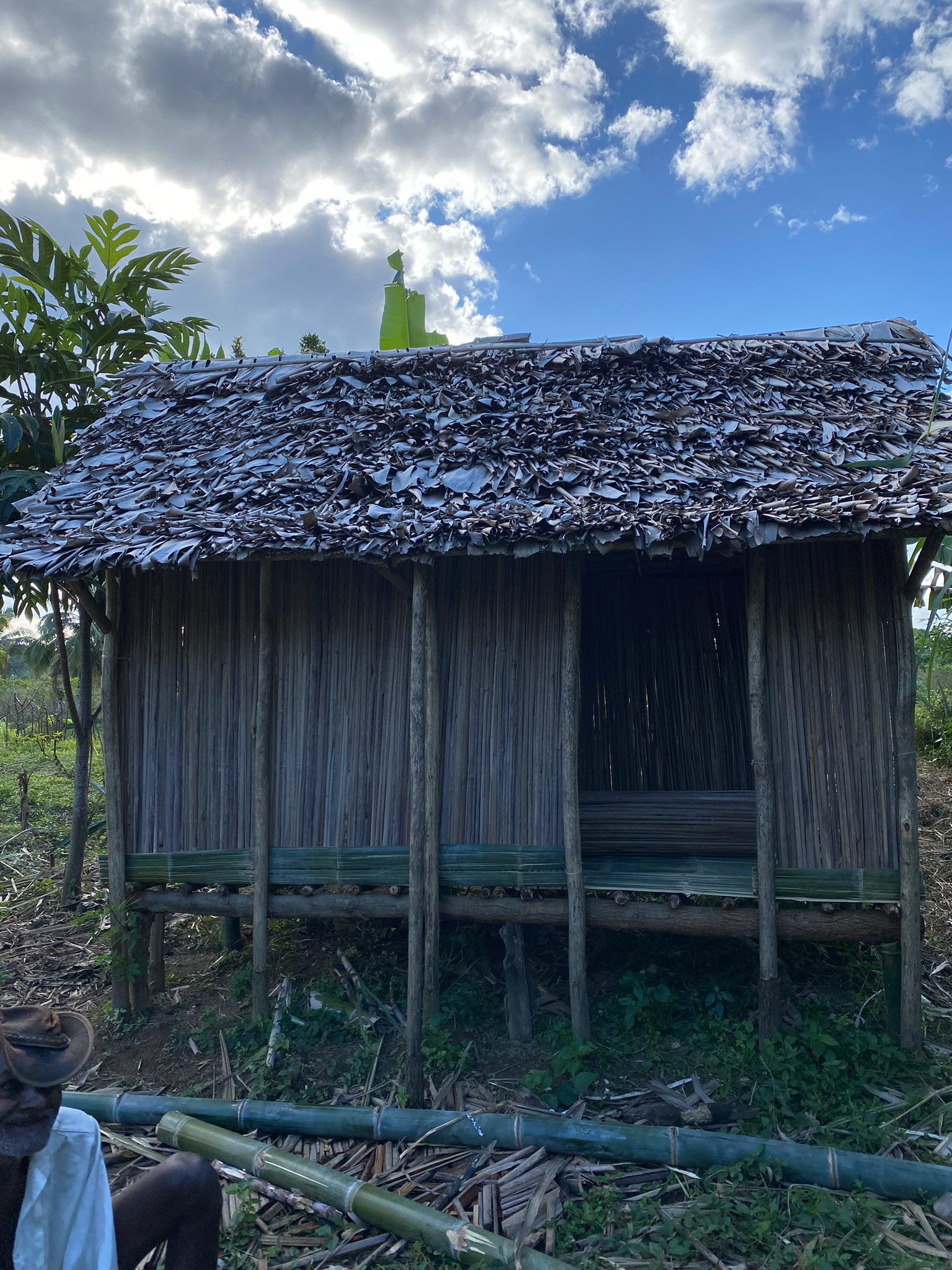
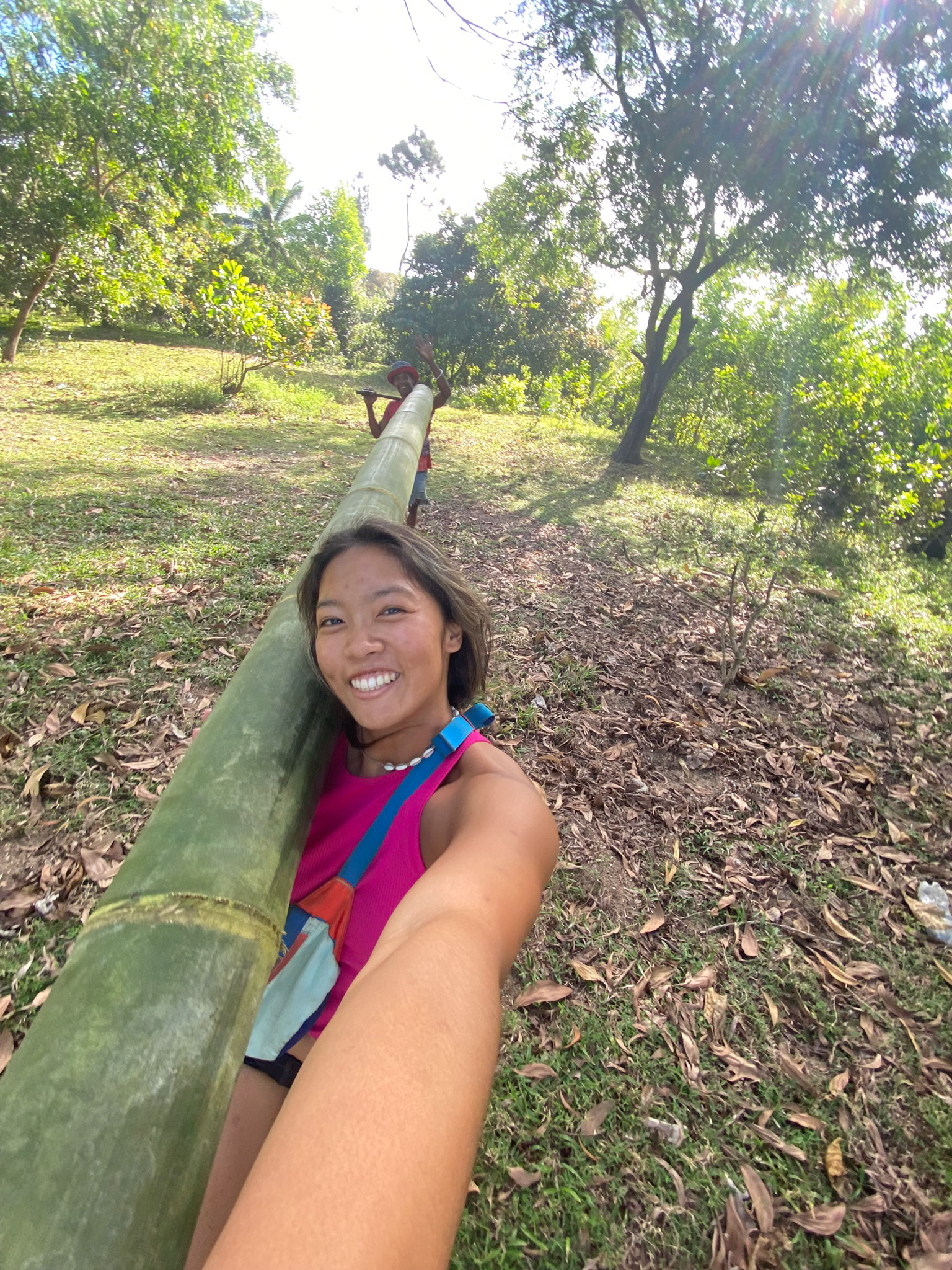
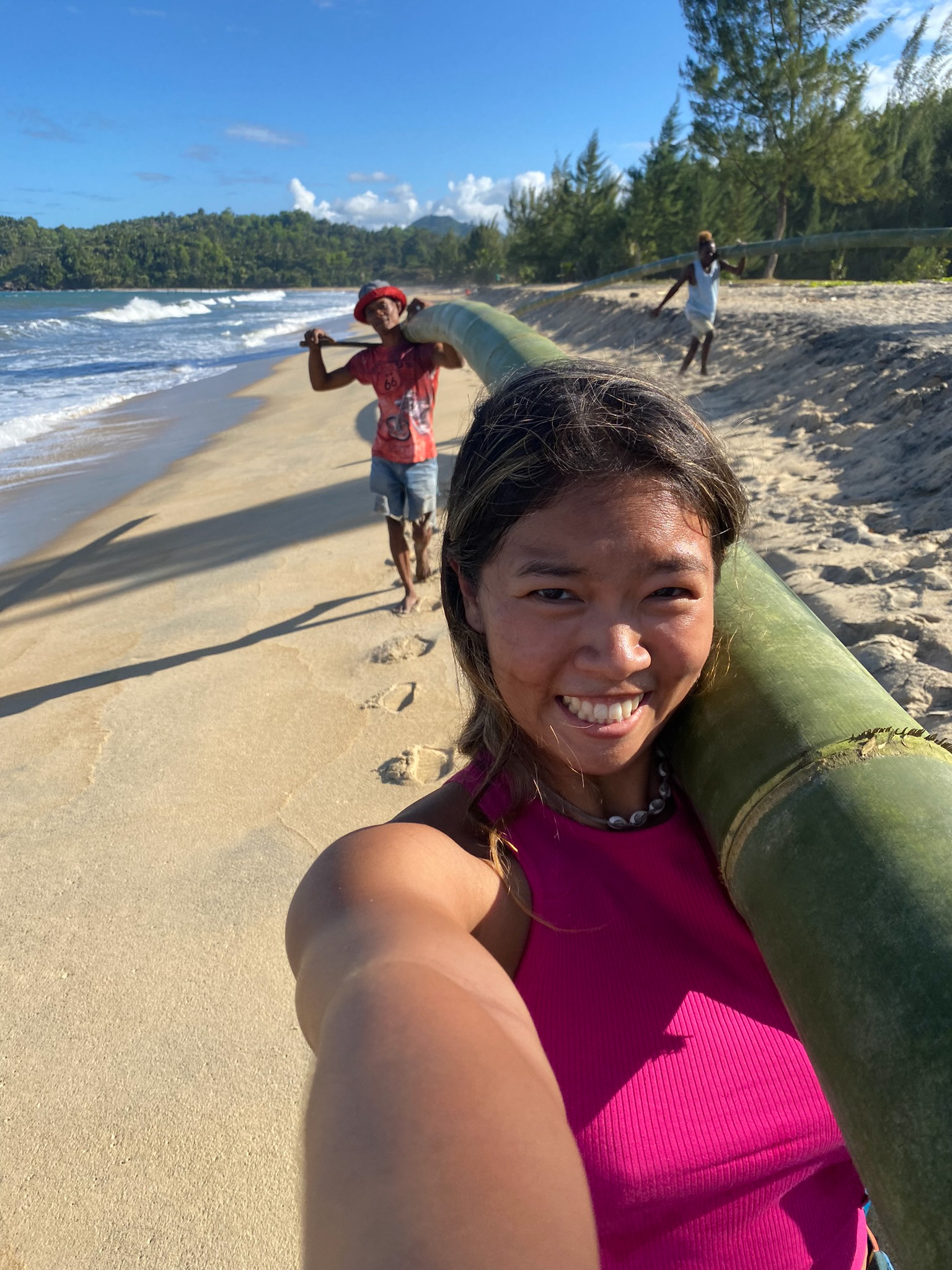
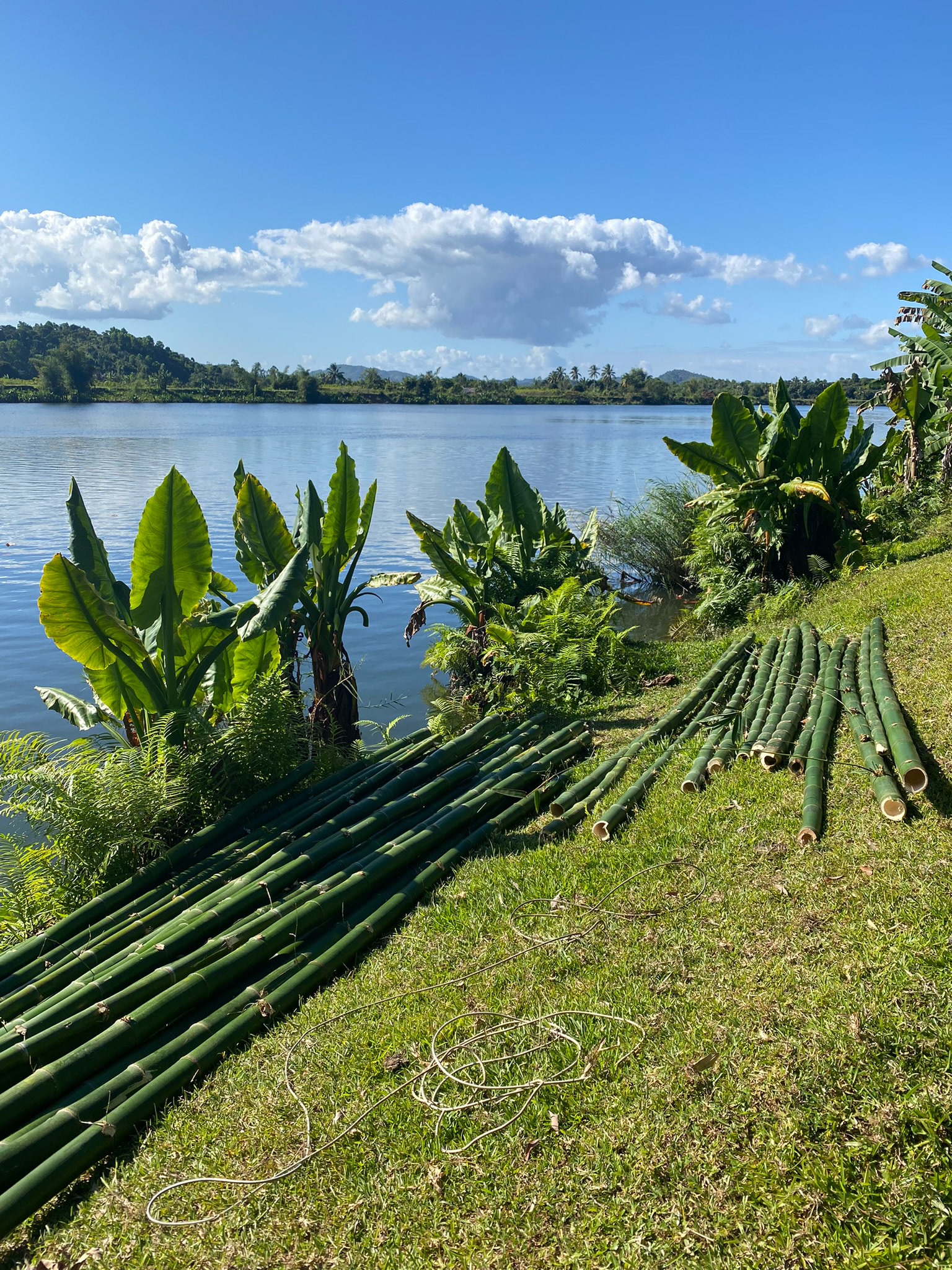
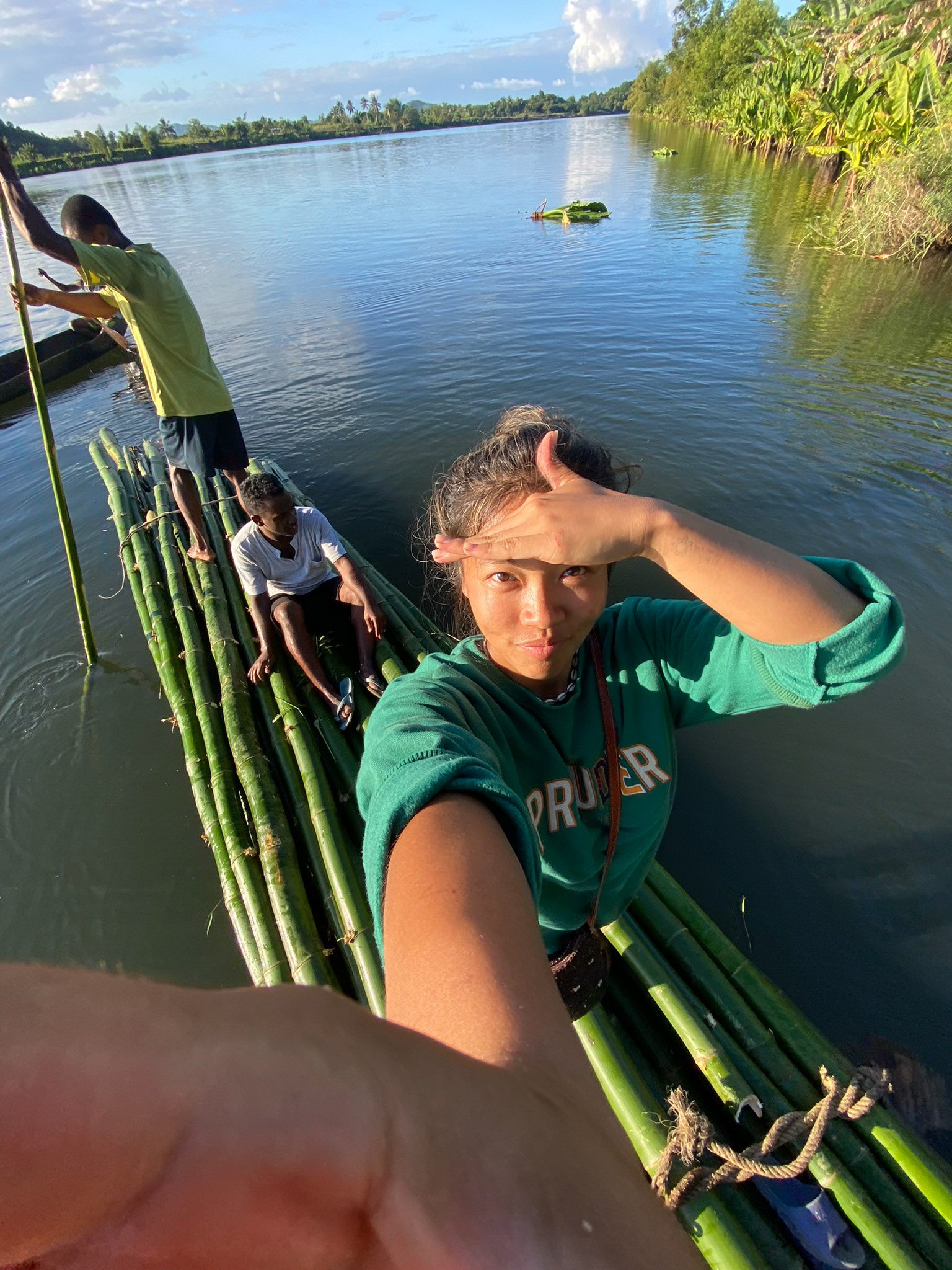
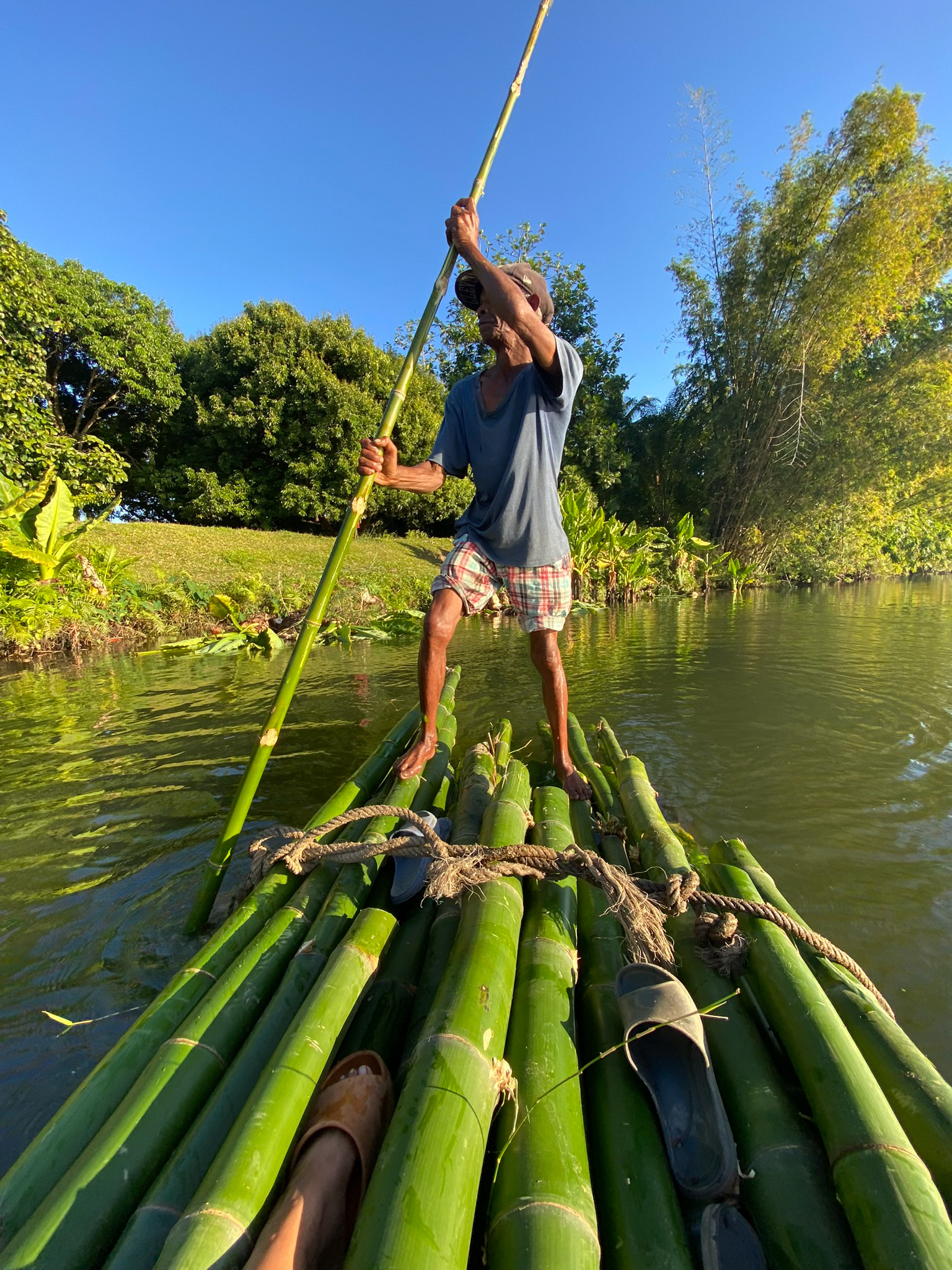
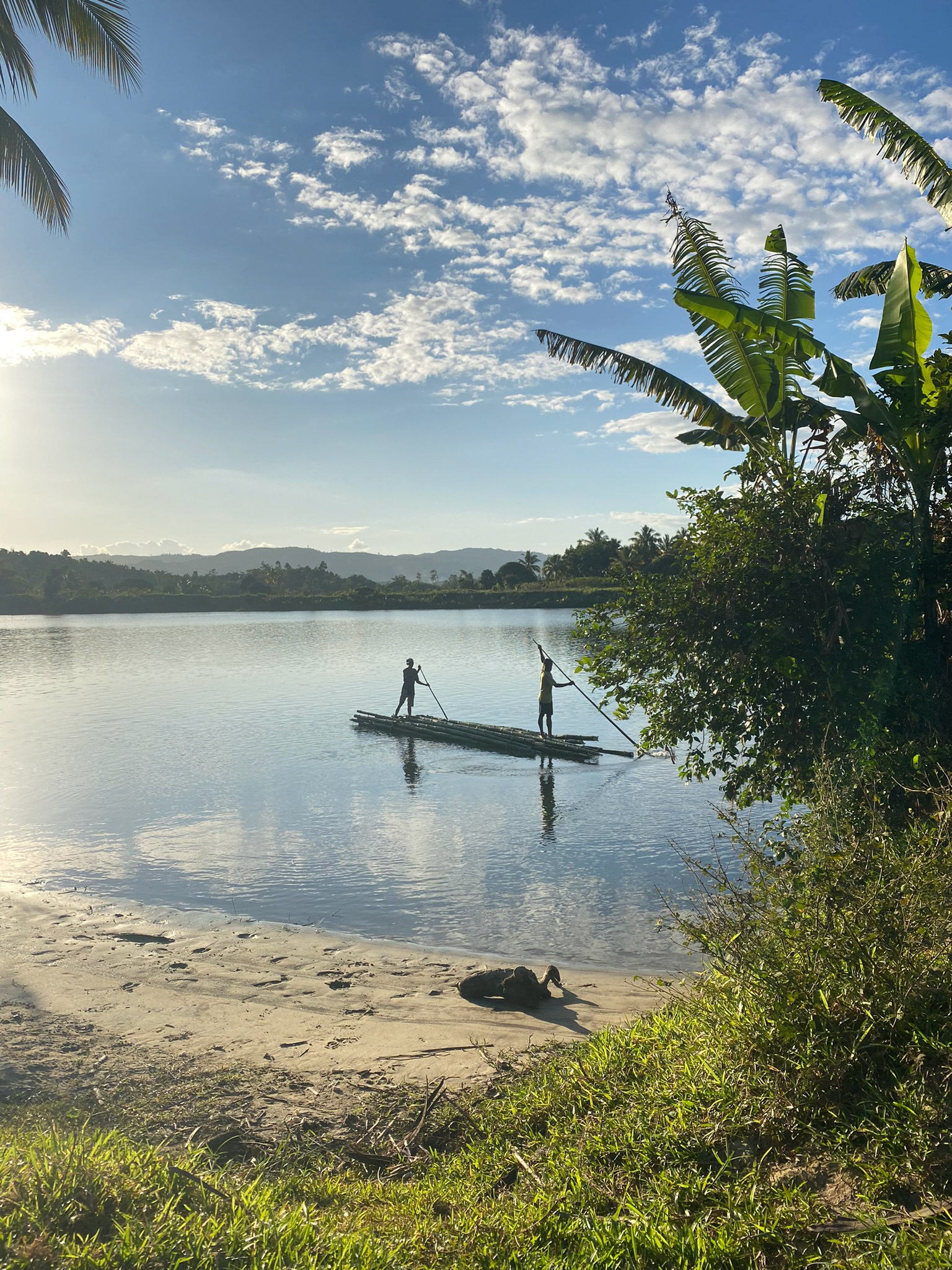
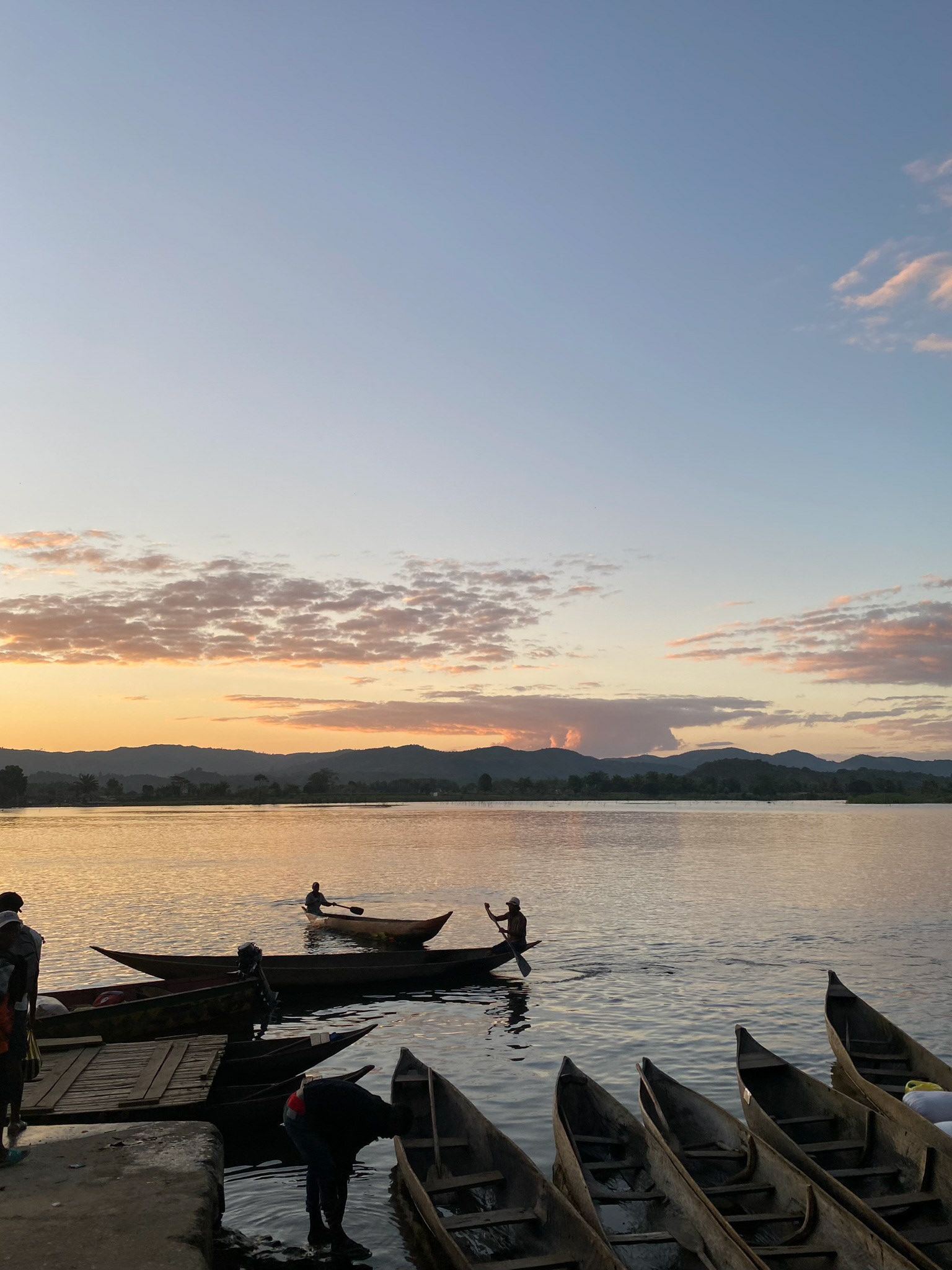
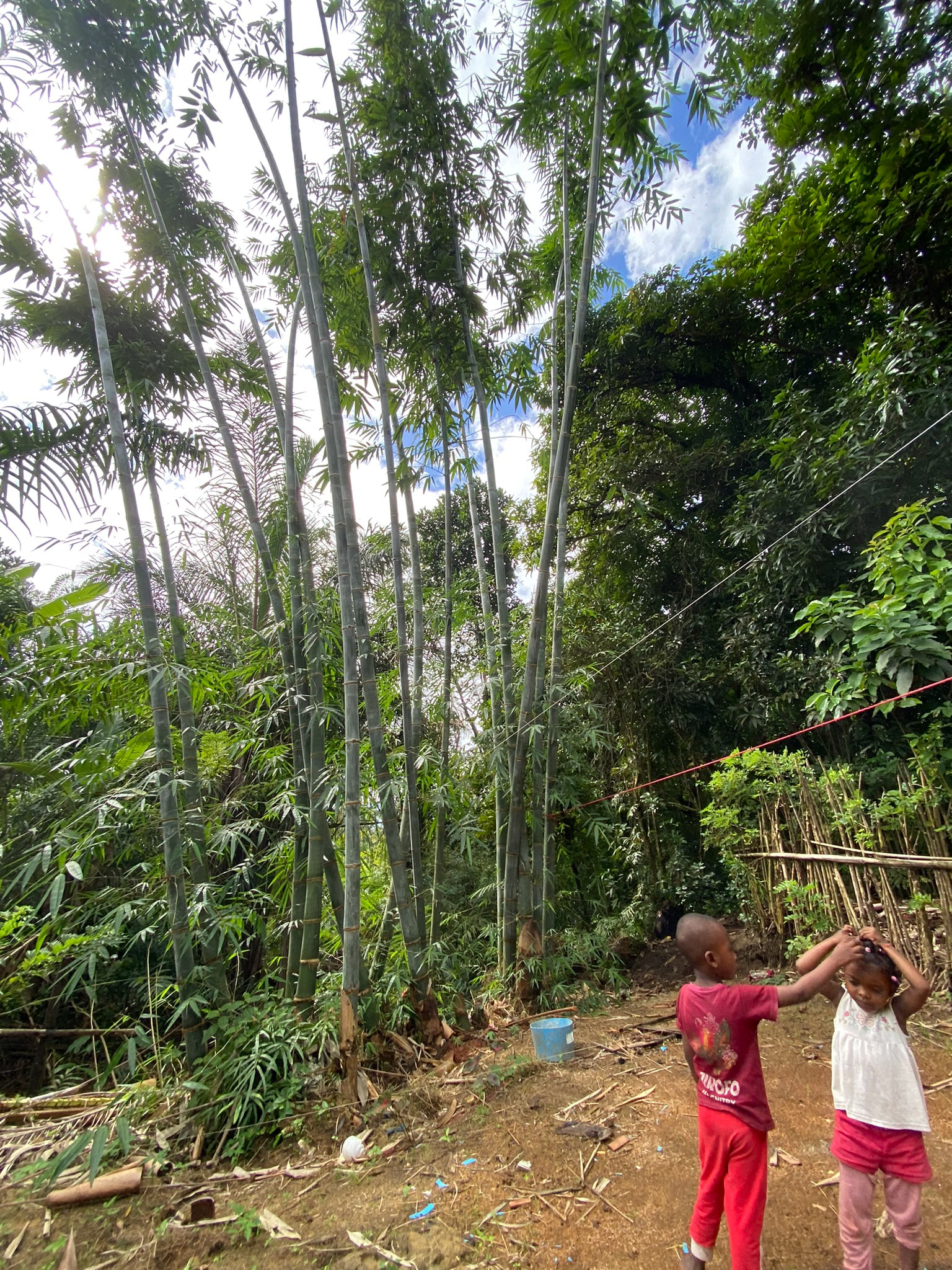
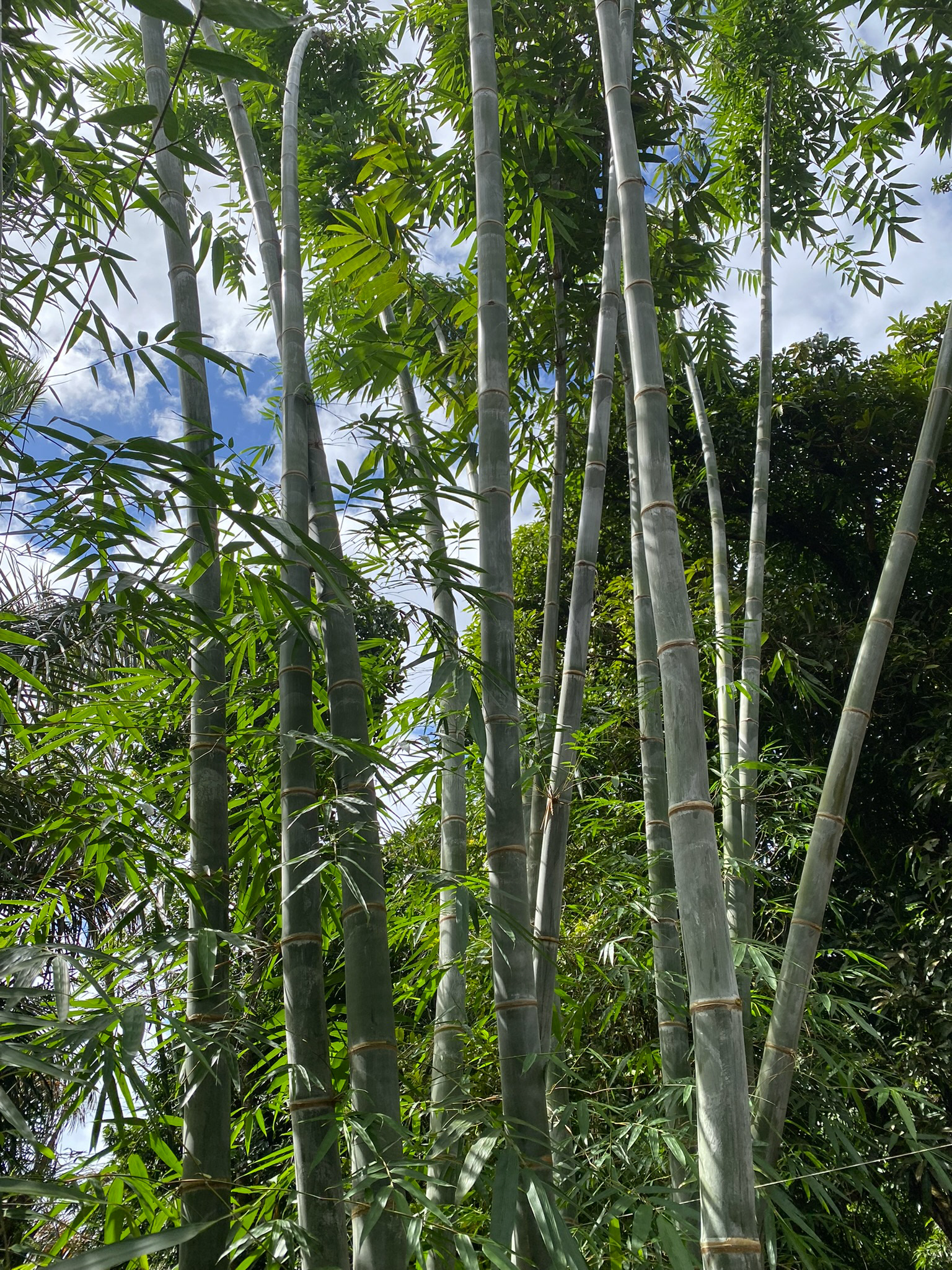
To really understand the physical labor it would take to make a business like this possible, I cut down and transported the bamboo I needed to make the boat with the help of my friends in Menatany. Going through forests, beaches, and rivers to finally get it to my worksite took a few days, which made me think about how useful it might be to start a bamboo nursery in the village so that it's more accessible. The climate of Menatany is also perfect for bamboo so I think it would be a worthwhile effort!
Cutting the bamboo into strips and shaping tem alone took a lot of manual labor. I started off the project working with a bamboo carpenter who had previously made his own house out of bamboo, and a local fisherman who had made wooden boats. Together, we made the frame for the boat, with a form and weight distributions that was similar to existing fishing canoes. There was a lot of debate between us three about the methods of building it, but it was very clear that our unique perspectives made for a strong product.
After building the main frame, we sewed rice sacks on the outside of the boat. The original plan was to then melt tar onto the sacks to seal it, because this is a common practice in other countries that make bamboo boats. However, in testing this method, I wasn't a fan of the emissions produced by burning the tar and was worried about it falling off the boat and into the ocean, as the adhesion to the rice sacks weren't as strong as I had expected.

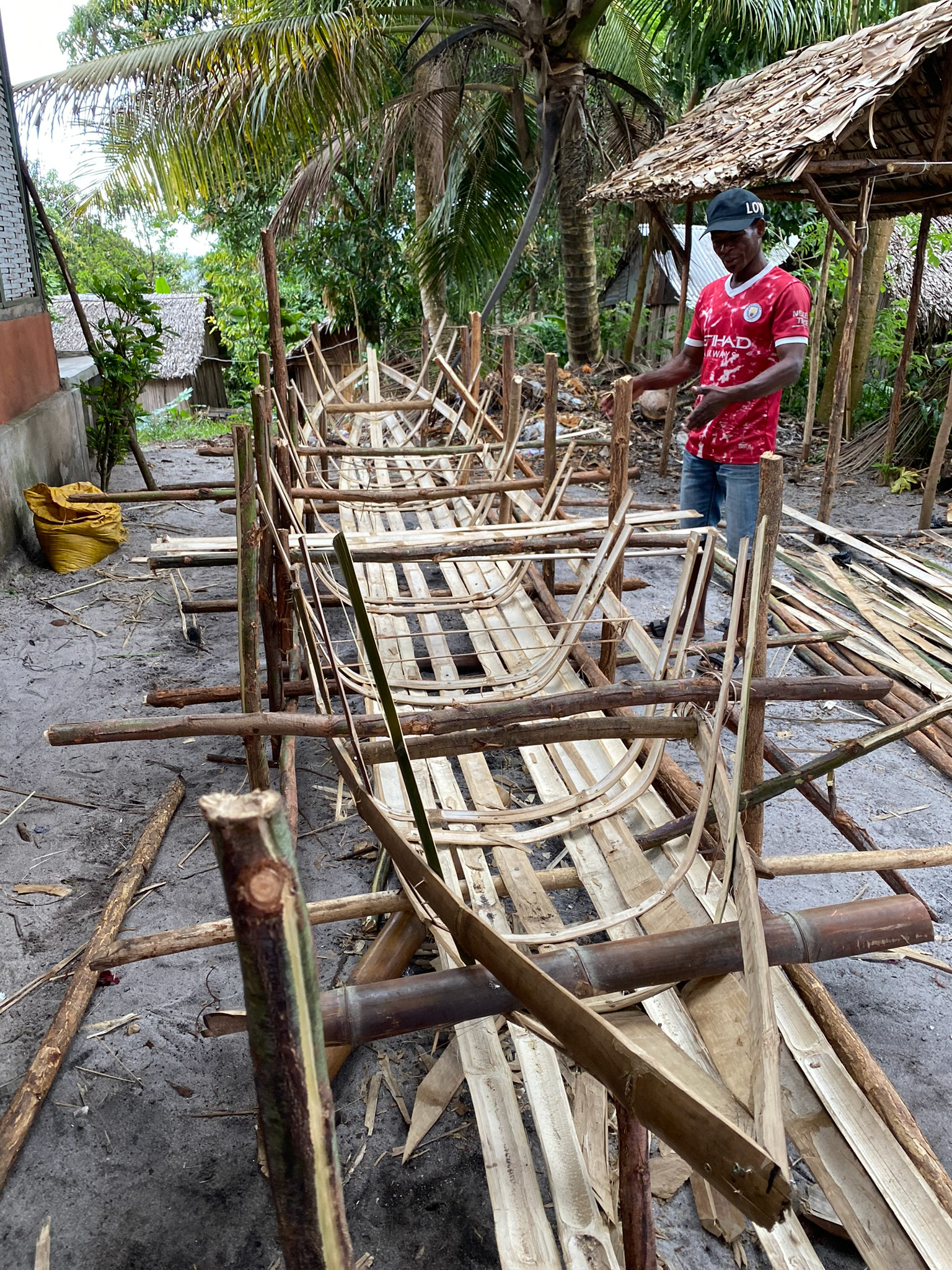
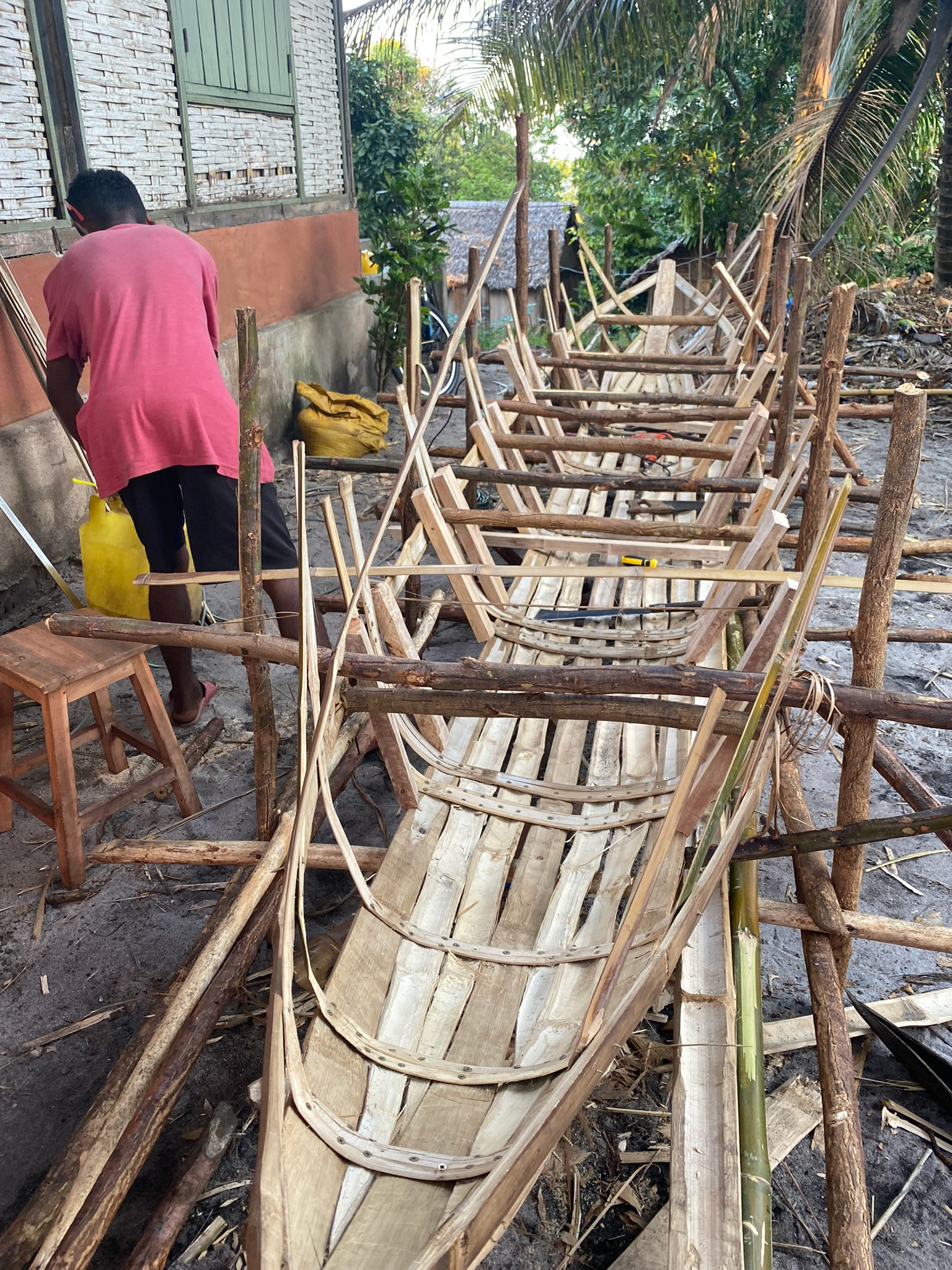
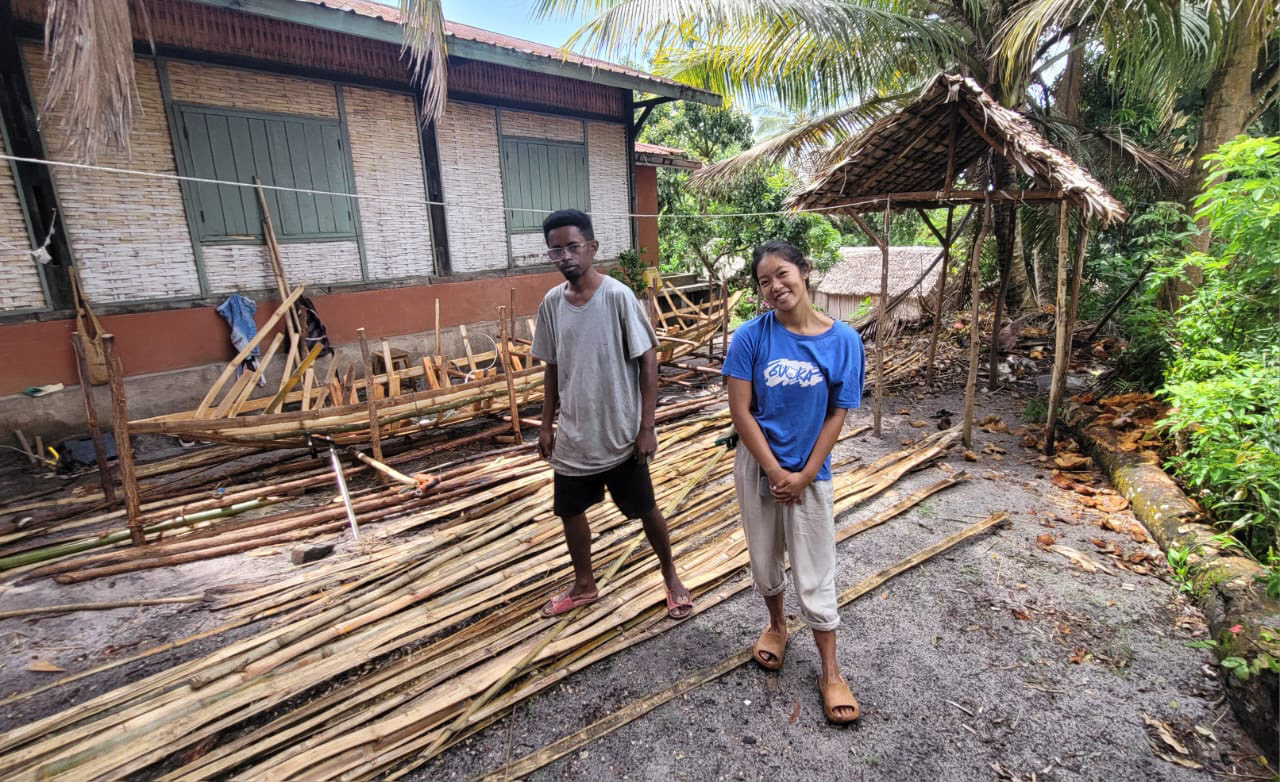
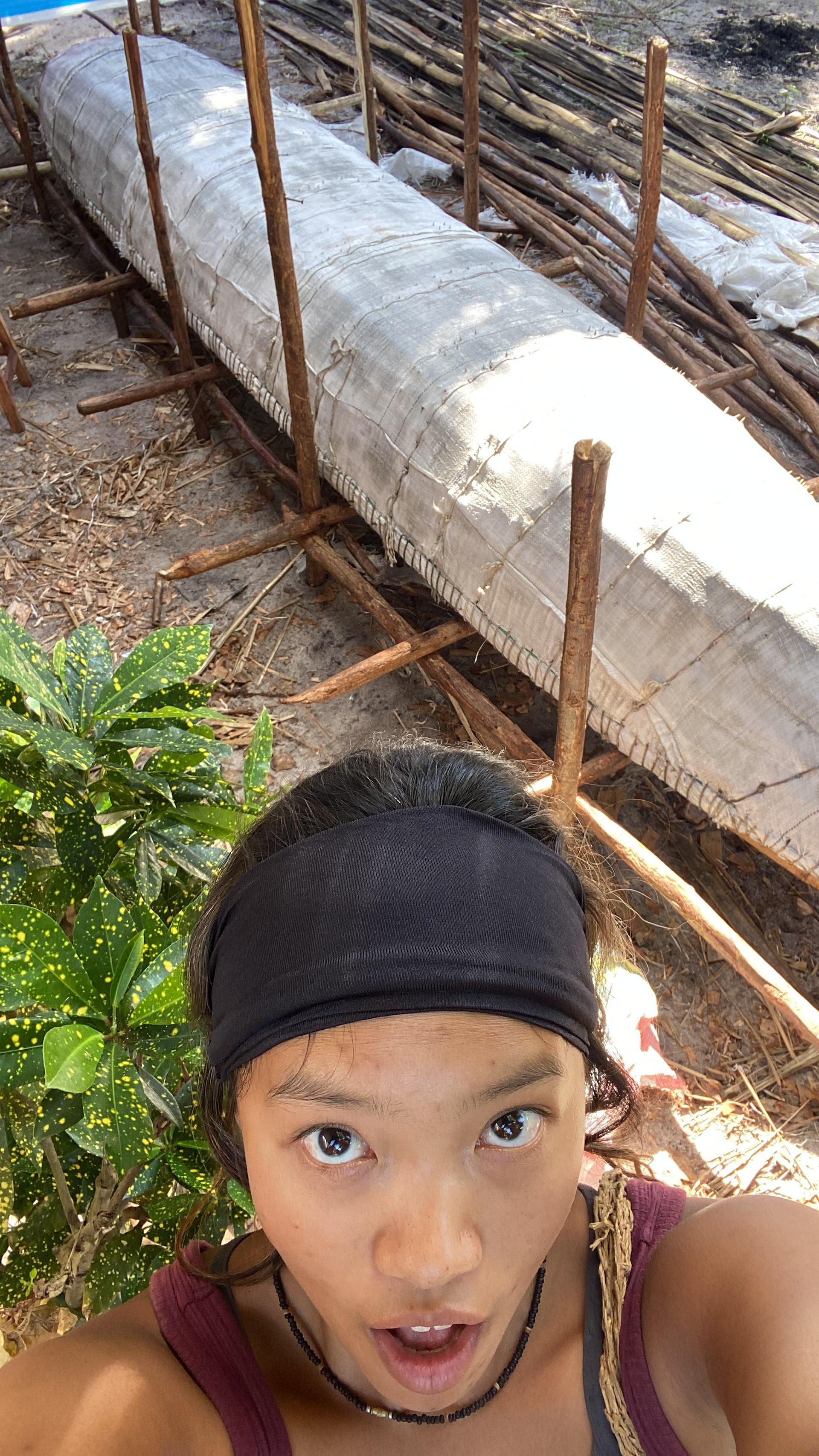
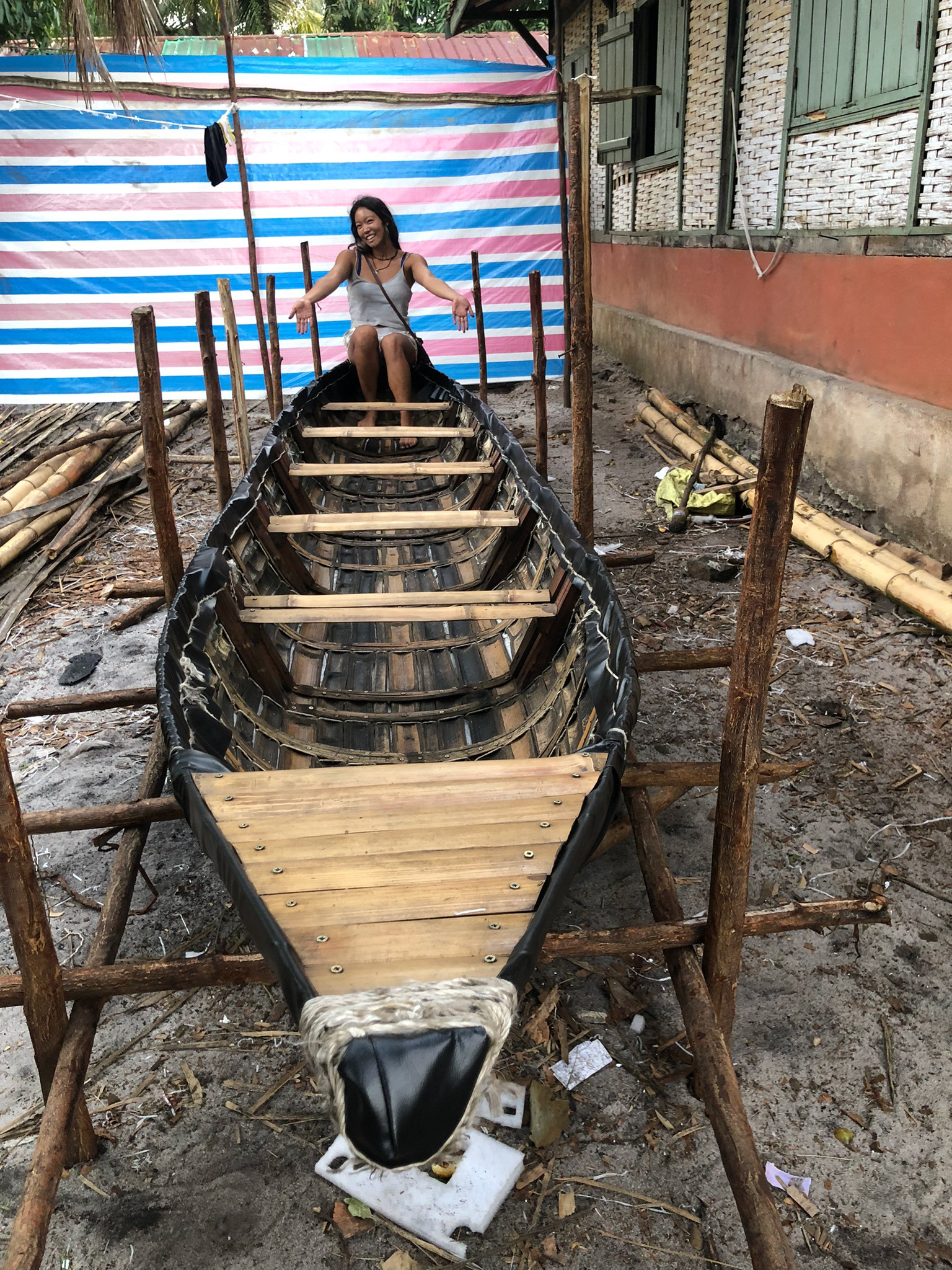
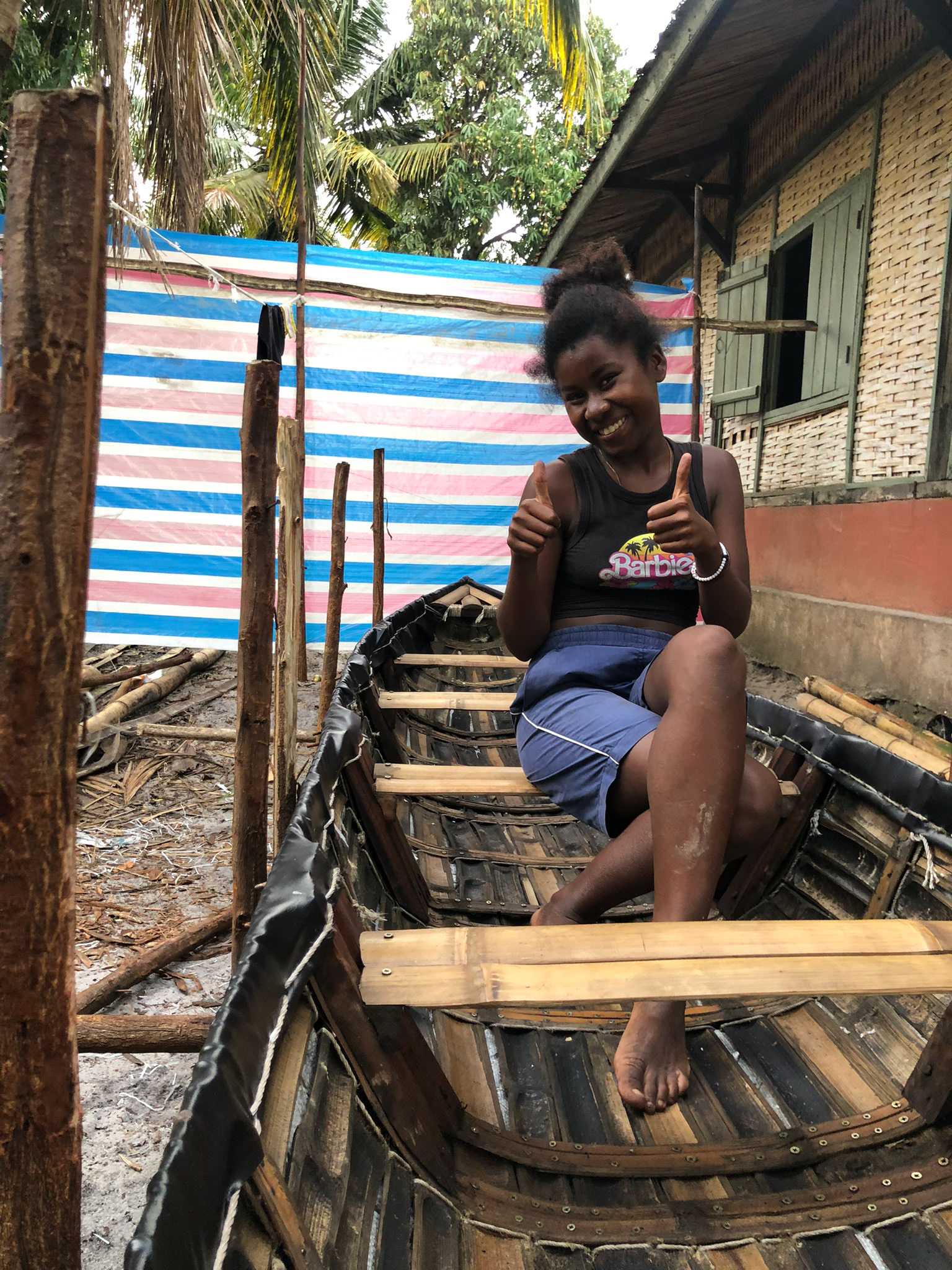
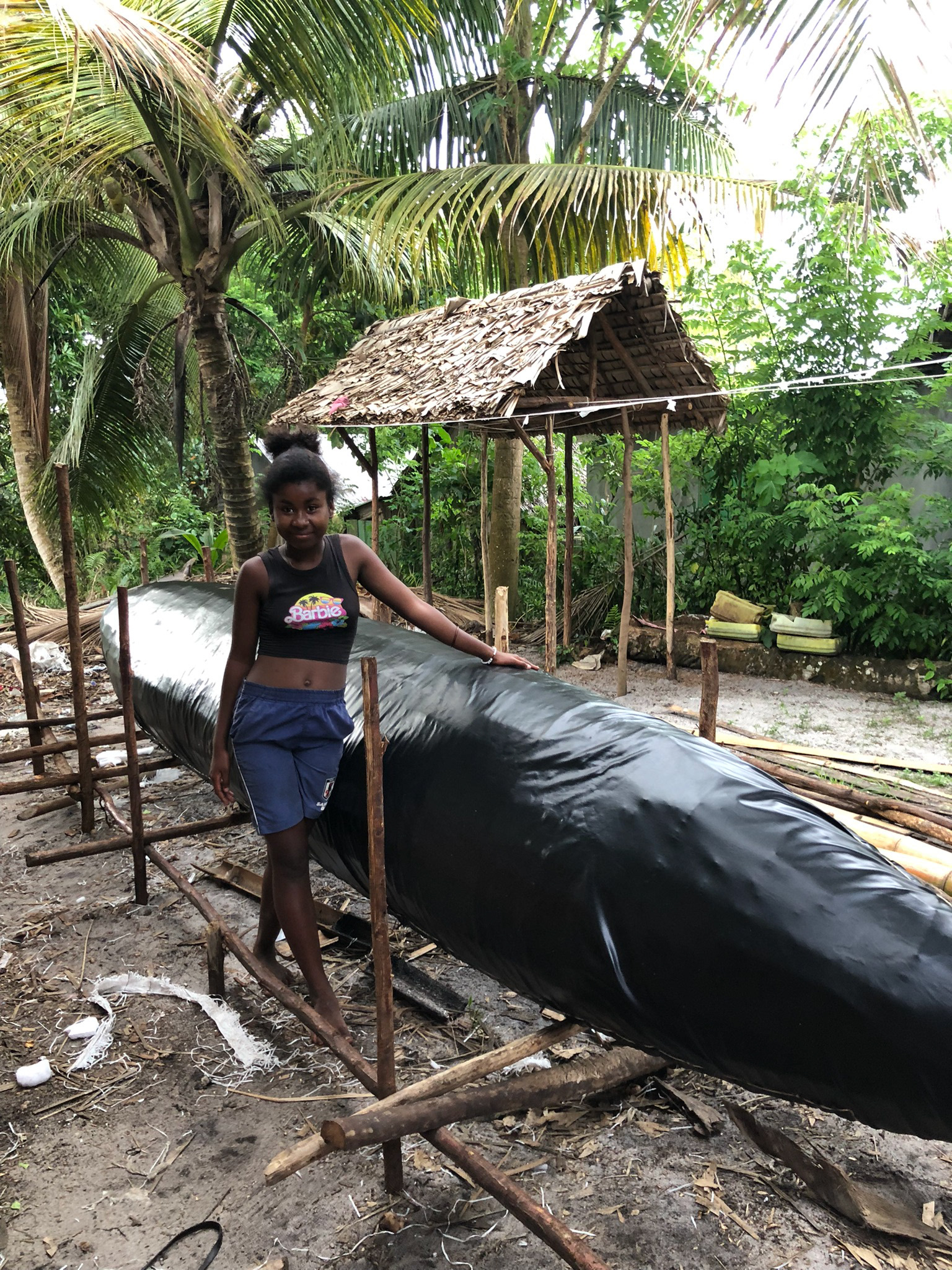
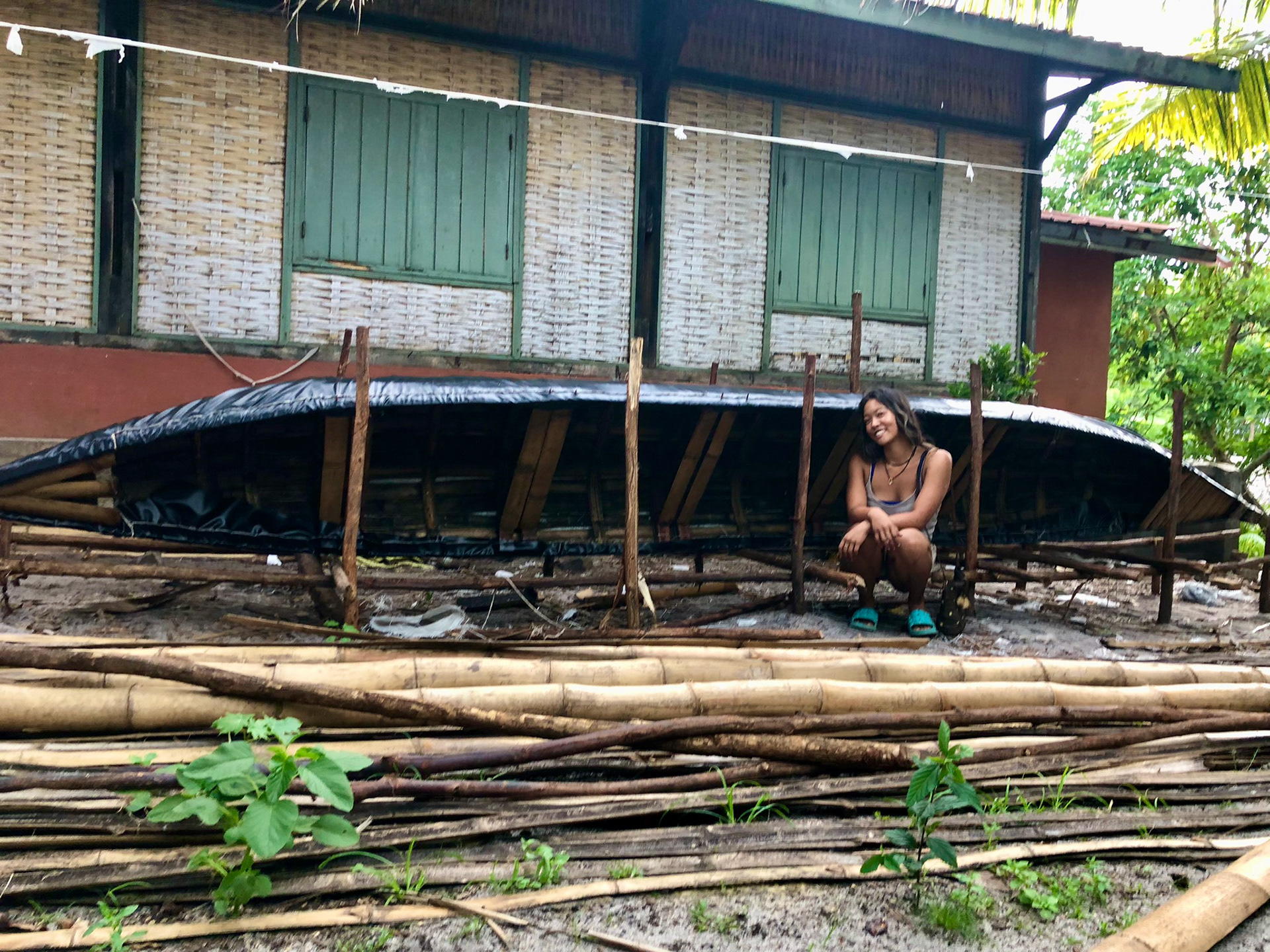
In order to seal the boat, I used a water-tight tarp material as the final layer. In addition to sewing it between the bamboo planks, I felt another adhesion material was necessary. I ended up experienting with melting and burning different discarded trash, and found that I could melt styrofoam with diesel (a common technique for fixing rooves in Madagascar) to create an epoxy-like material strong enough to secure the tarp onto the woven rice sacks. It turned out to be an incredibly quick and simple process.
In addition to learning about crafting techniques, I learned a lot about managing my work relationships. I ended up having to fire one of the co-workers I worked with since the beginning of the project as he was creating a hostile work environment for the young women who were being trained on how to make the canoe as well. As much as the product's success was important to me, maintaining the safety and emotional well-being of my friends and community members is first and foremost. As I continue to make more boats, I teach these skills, technical and interpersonal, to the young women who work alongside me. There are no women carpenters, house construction workers, or boat builders in Menatany, despite the interest of many young children. Countless of times throughout the project, people would tell me that I wasn't capable of making anything like this, or would credit my male co-workers for the idea. I hope to work towards changing this mindset. It is a field I hope to introduce more women into as I work here for the next year.
No words can explain the joy I had when taking the canoe out for it's first ride. The process of building it took two and a half months, and my best friend Winnie and I shared the biggest hug when it proved to work!!!! She and I were elated when more people from our community asked to go on rides up and down the river, excited to be some of the first people to ride Menatany's first and only bamboo canoe.
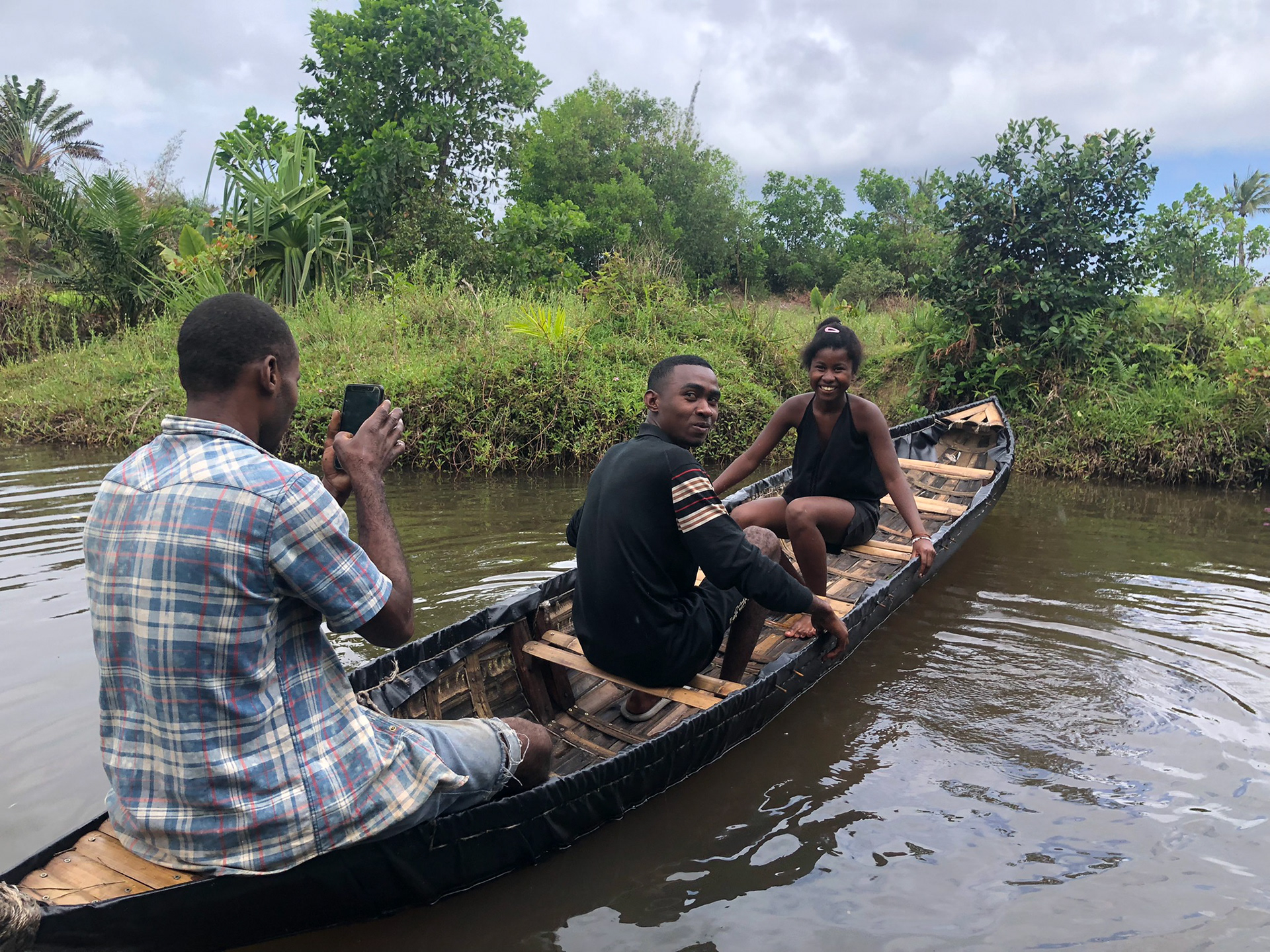
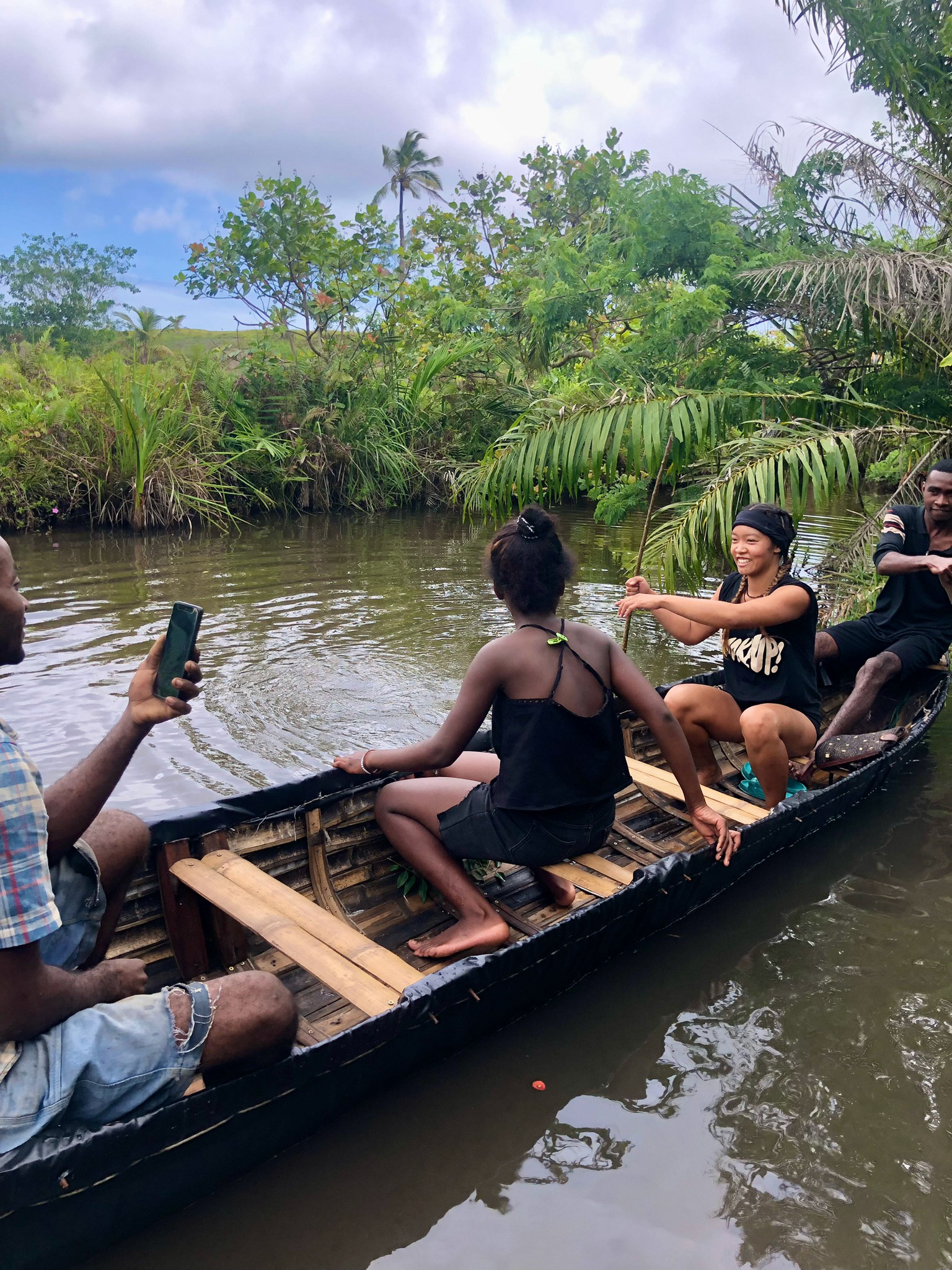
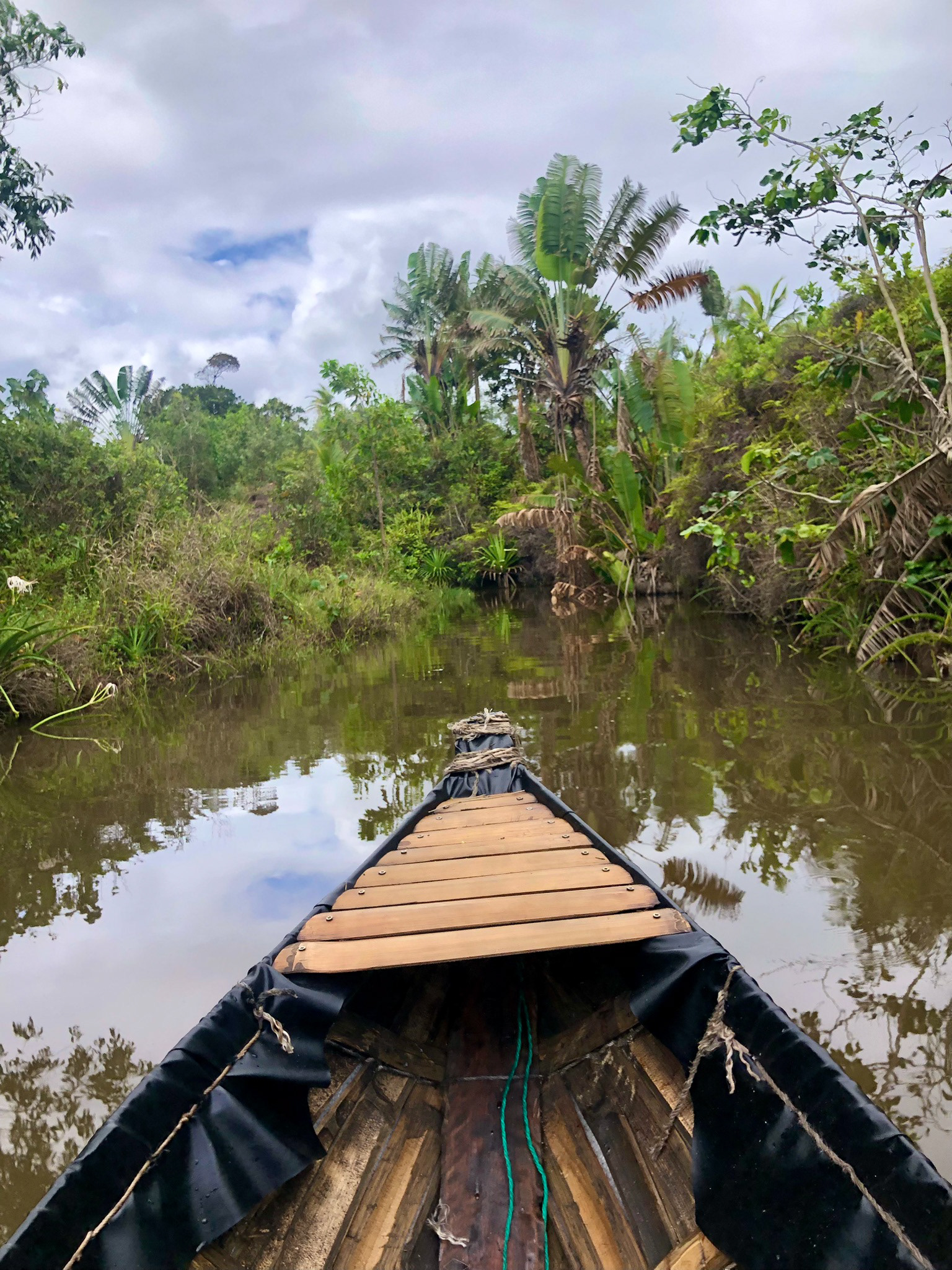
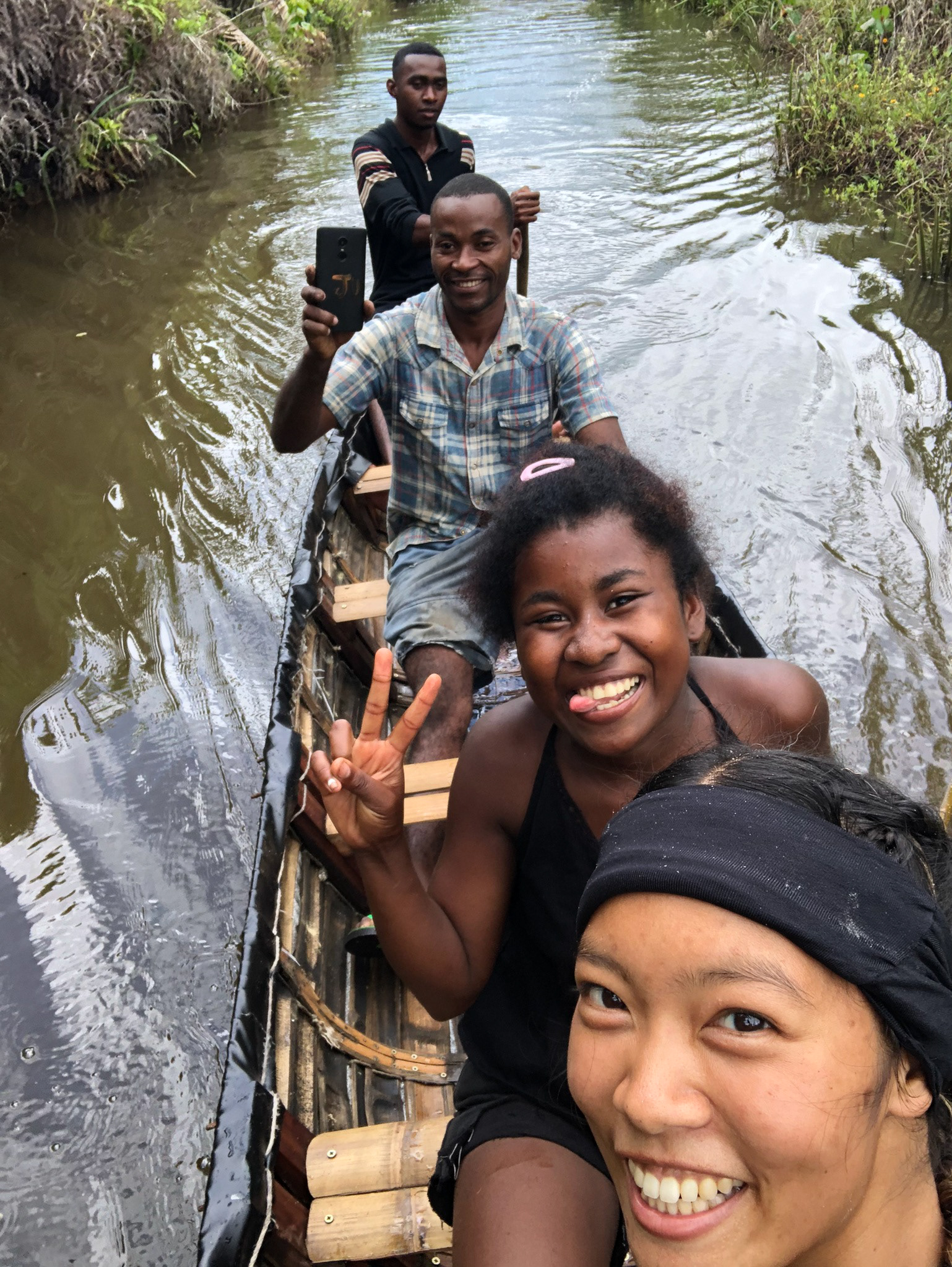
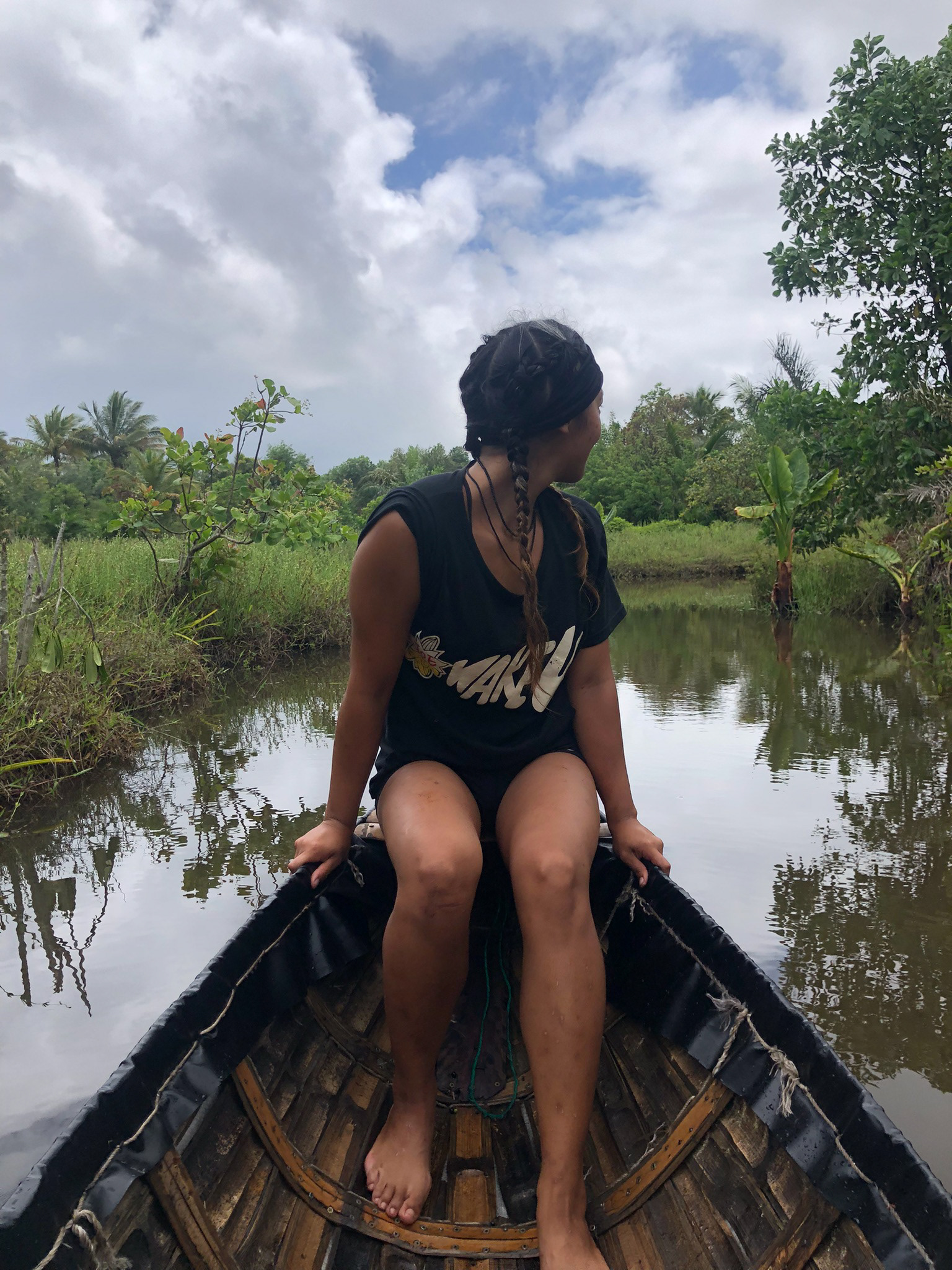
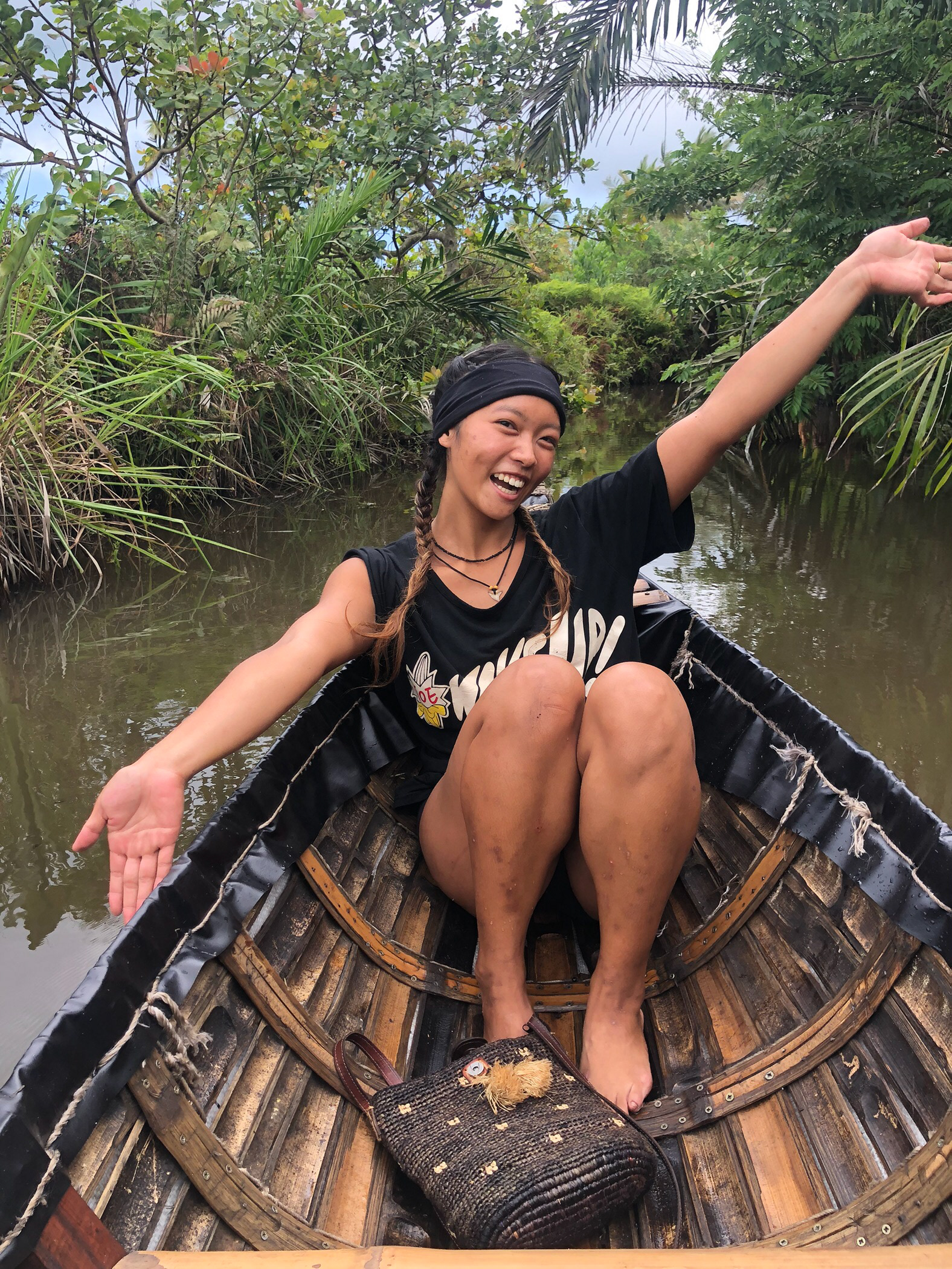
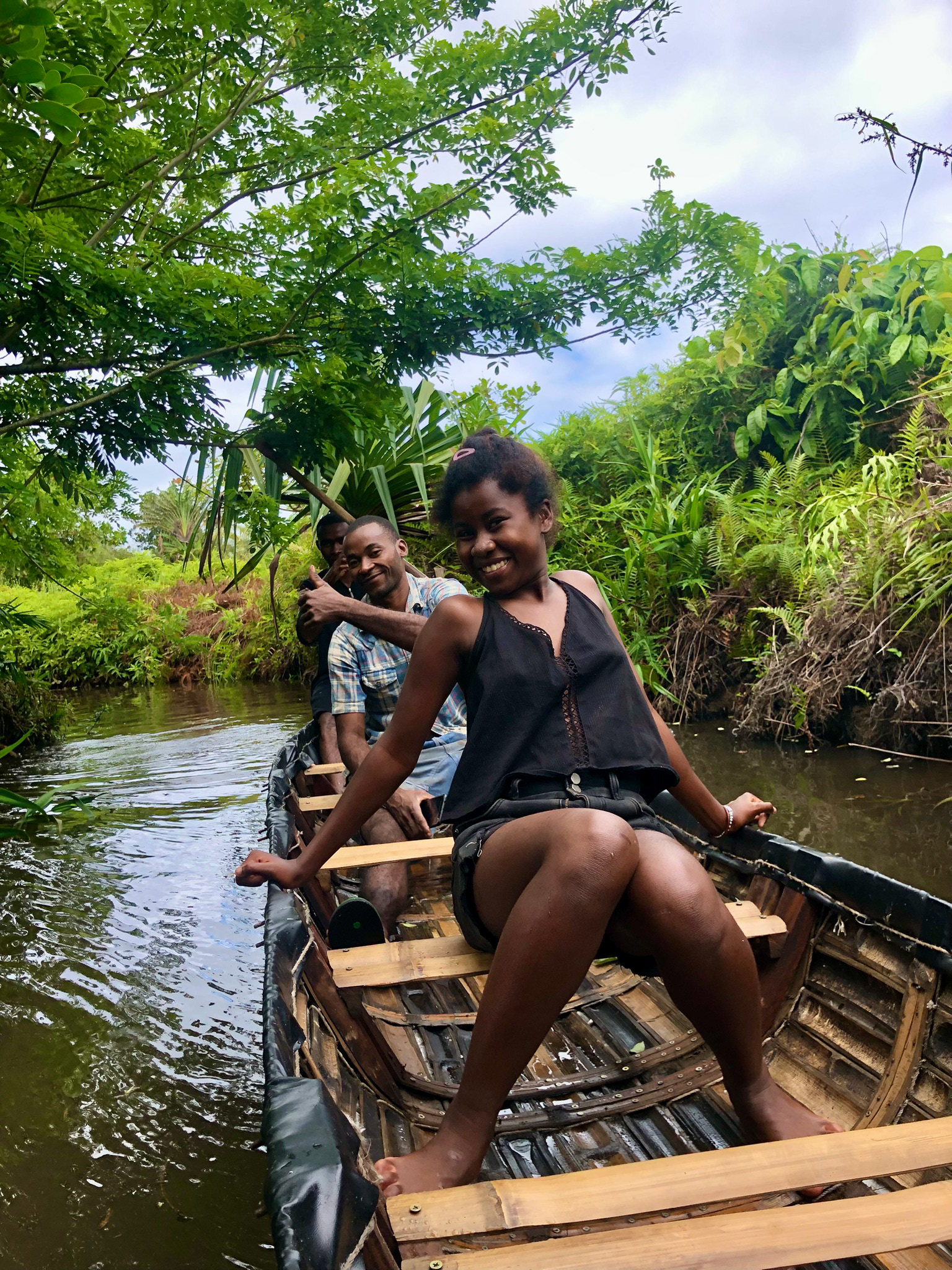
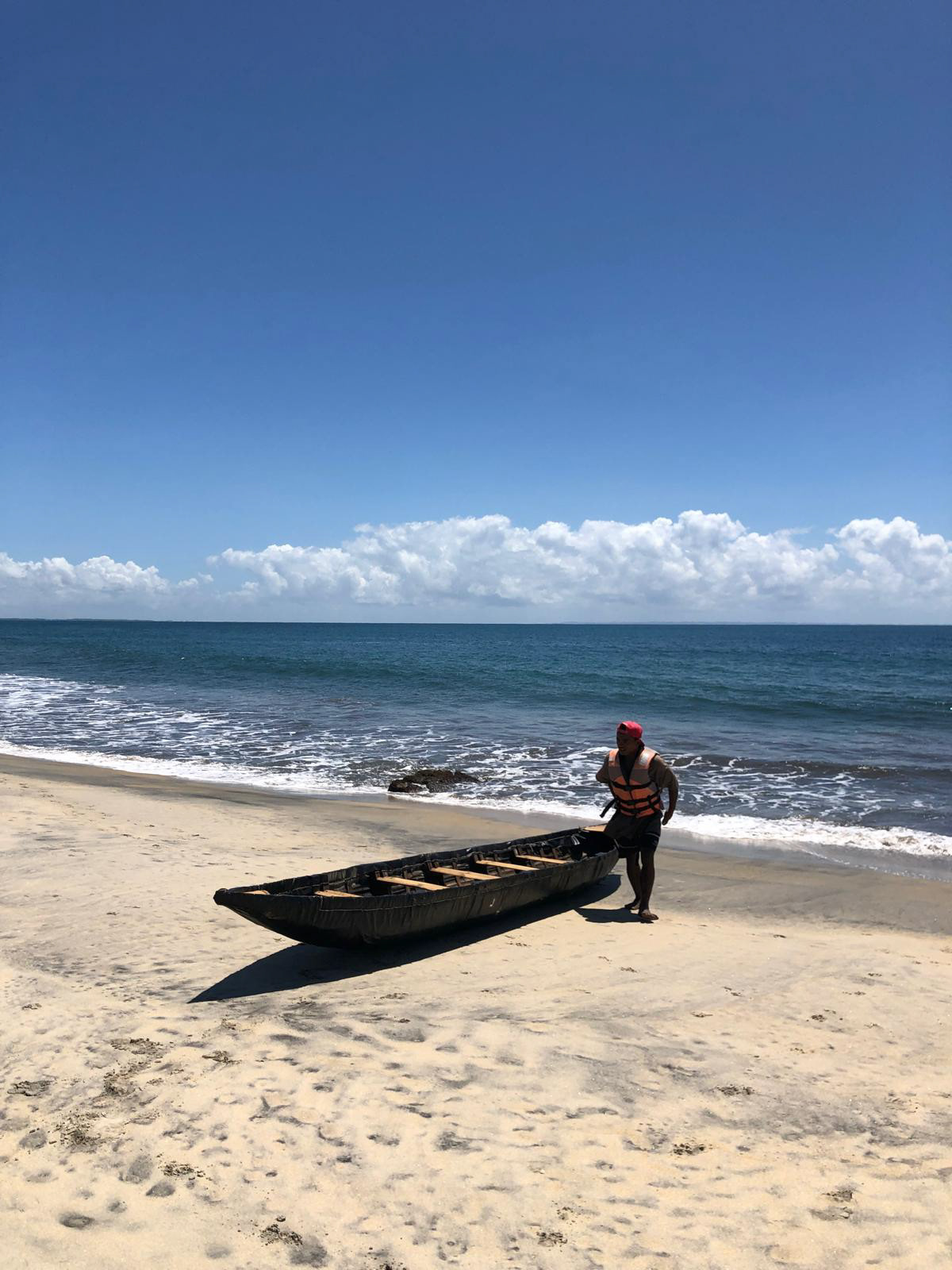
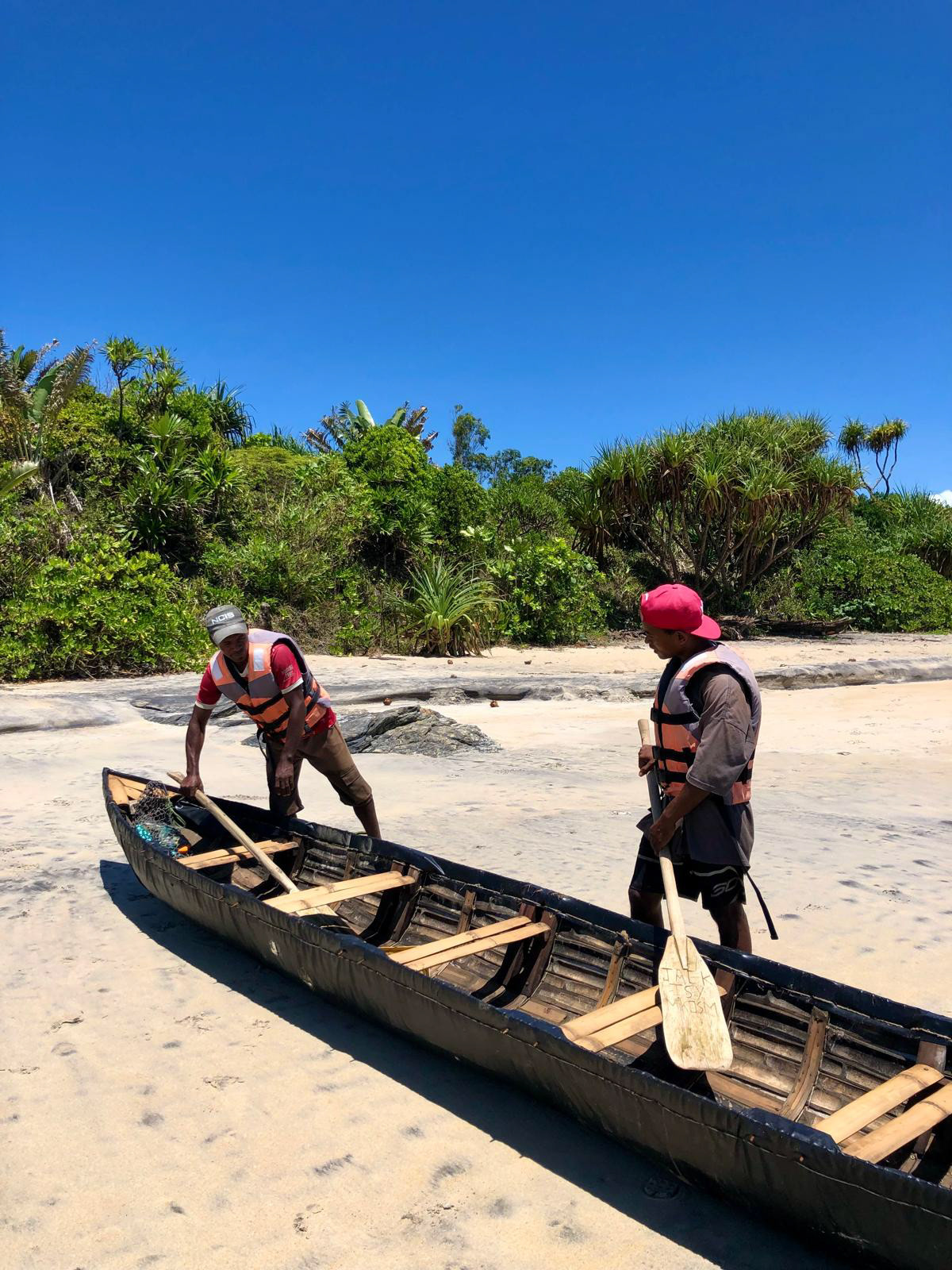
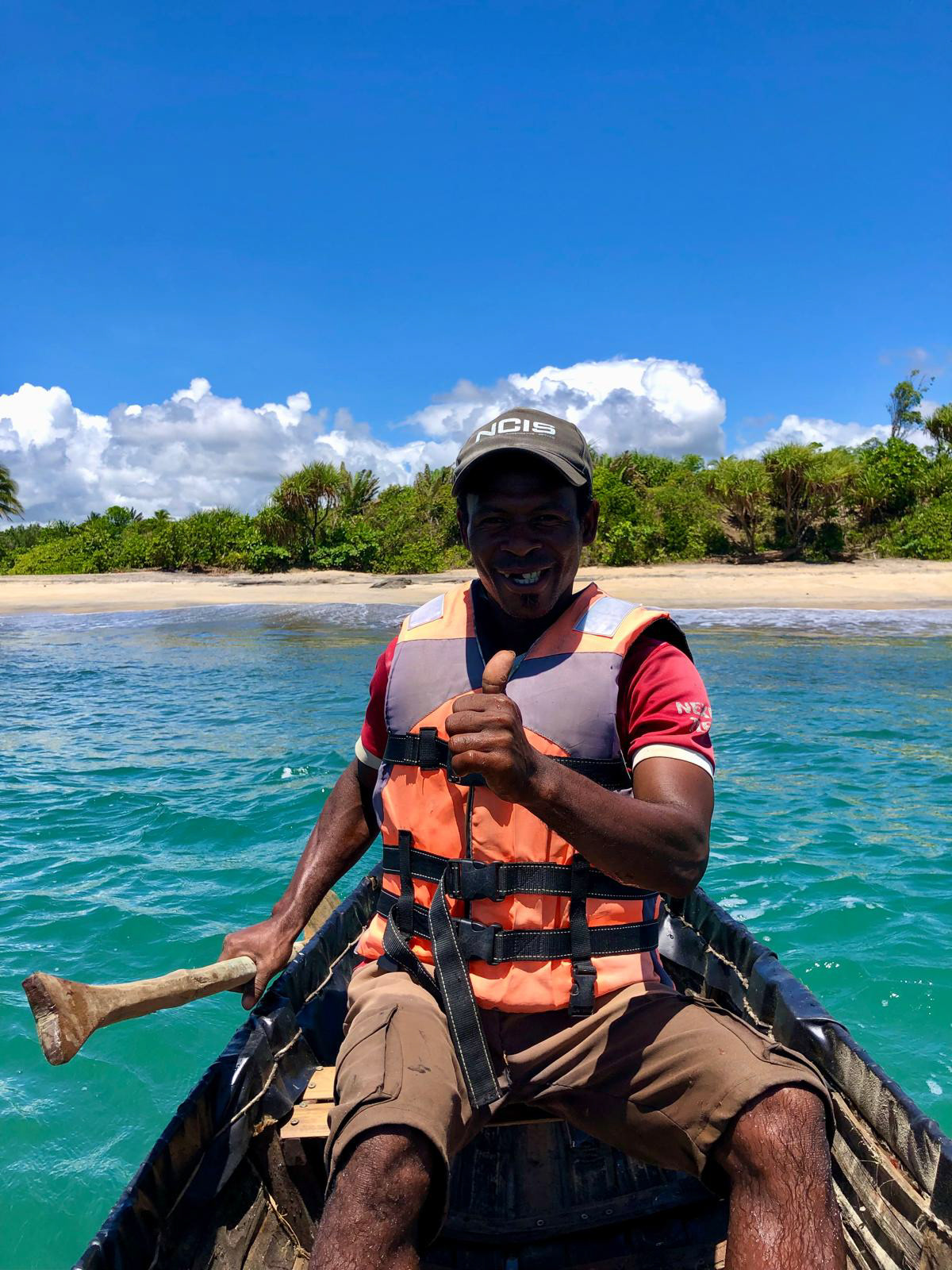
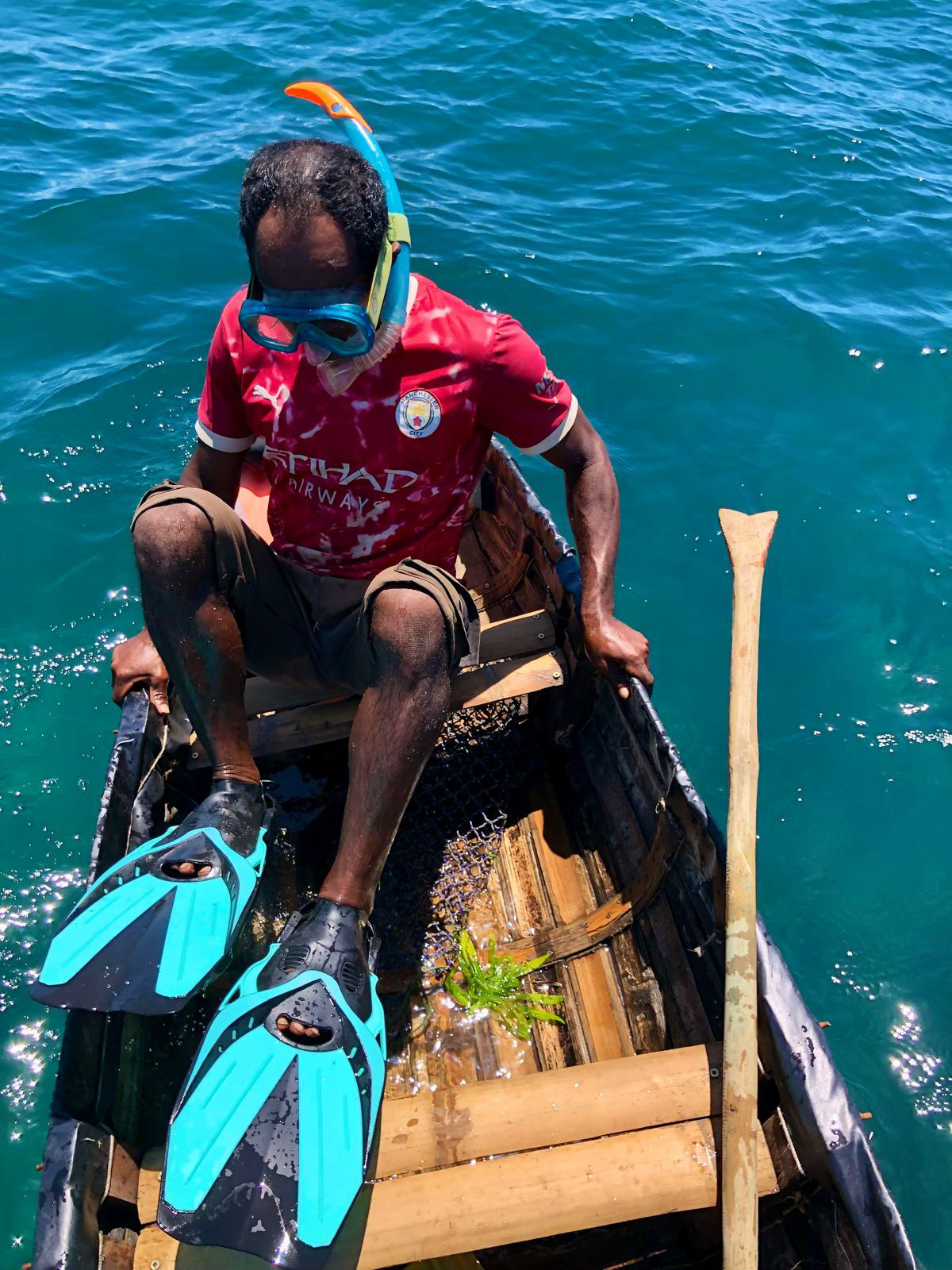
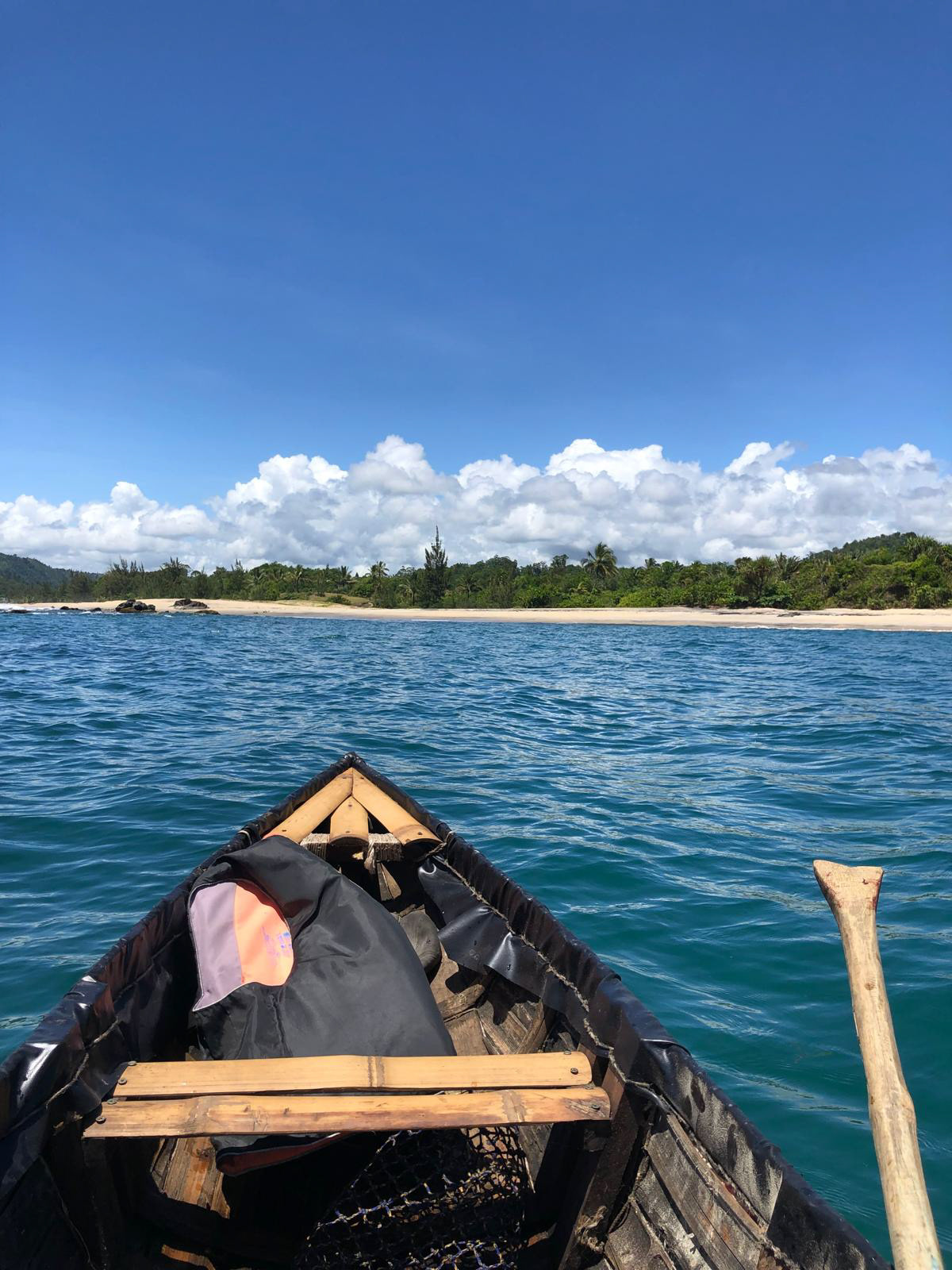
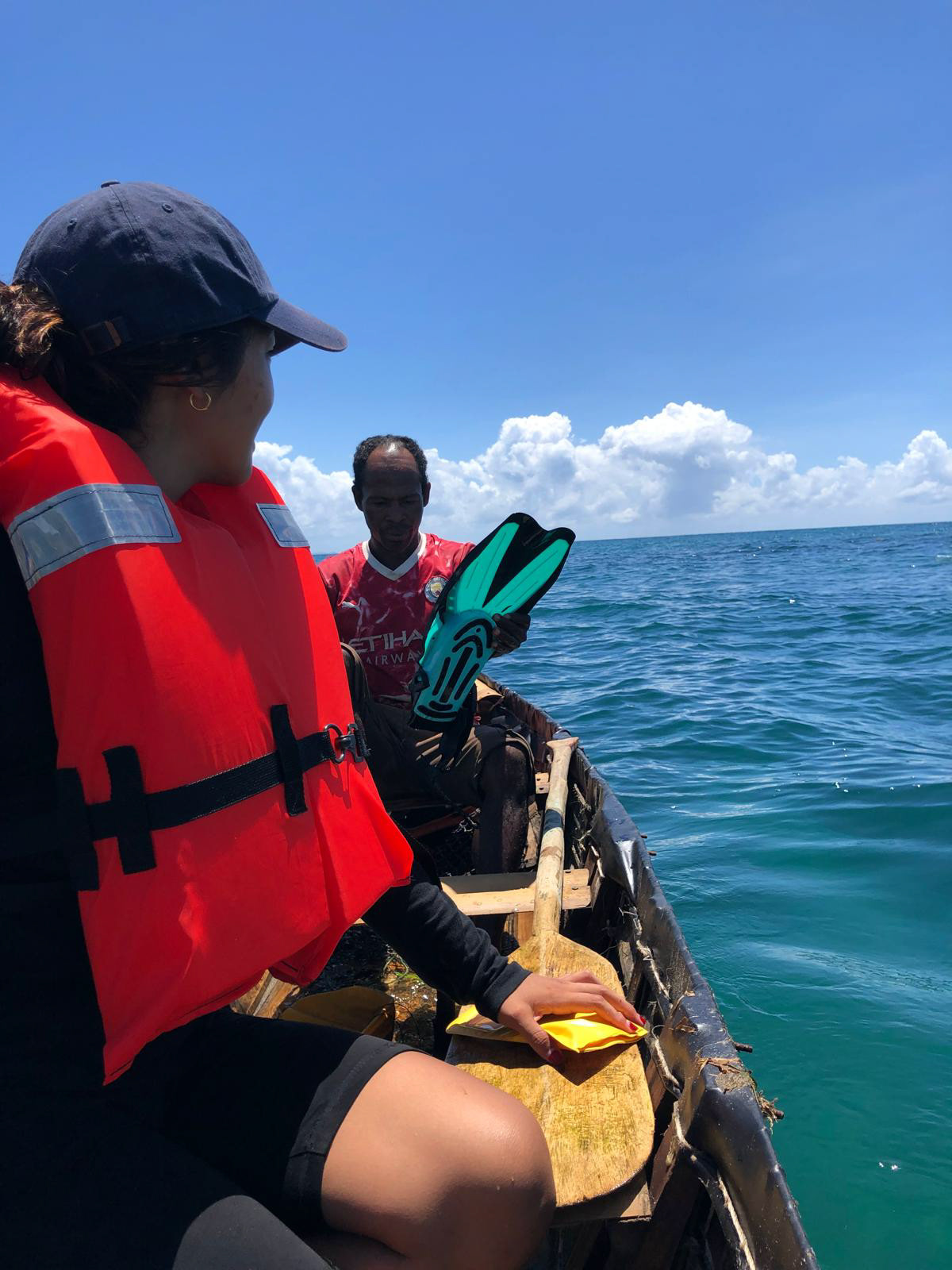
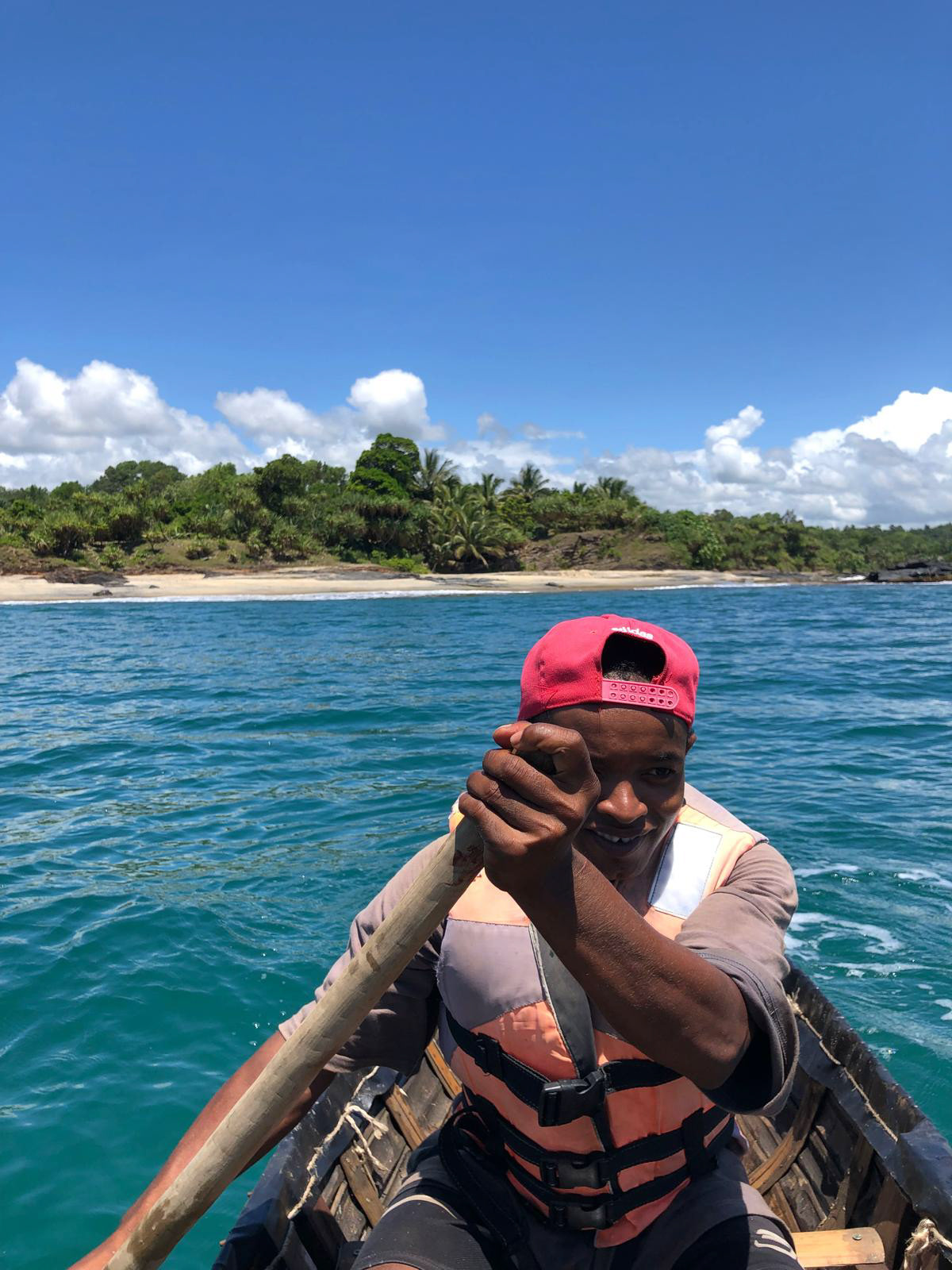
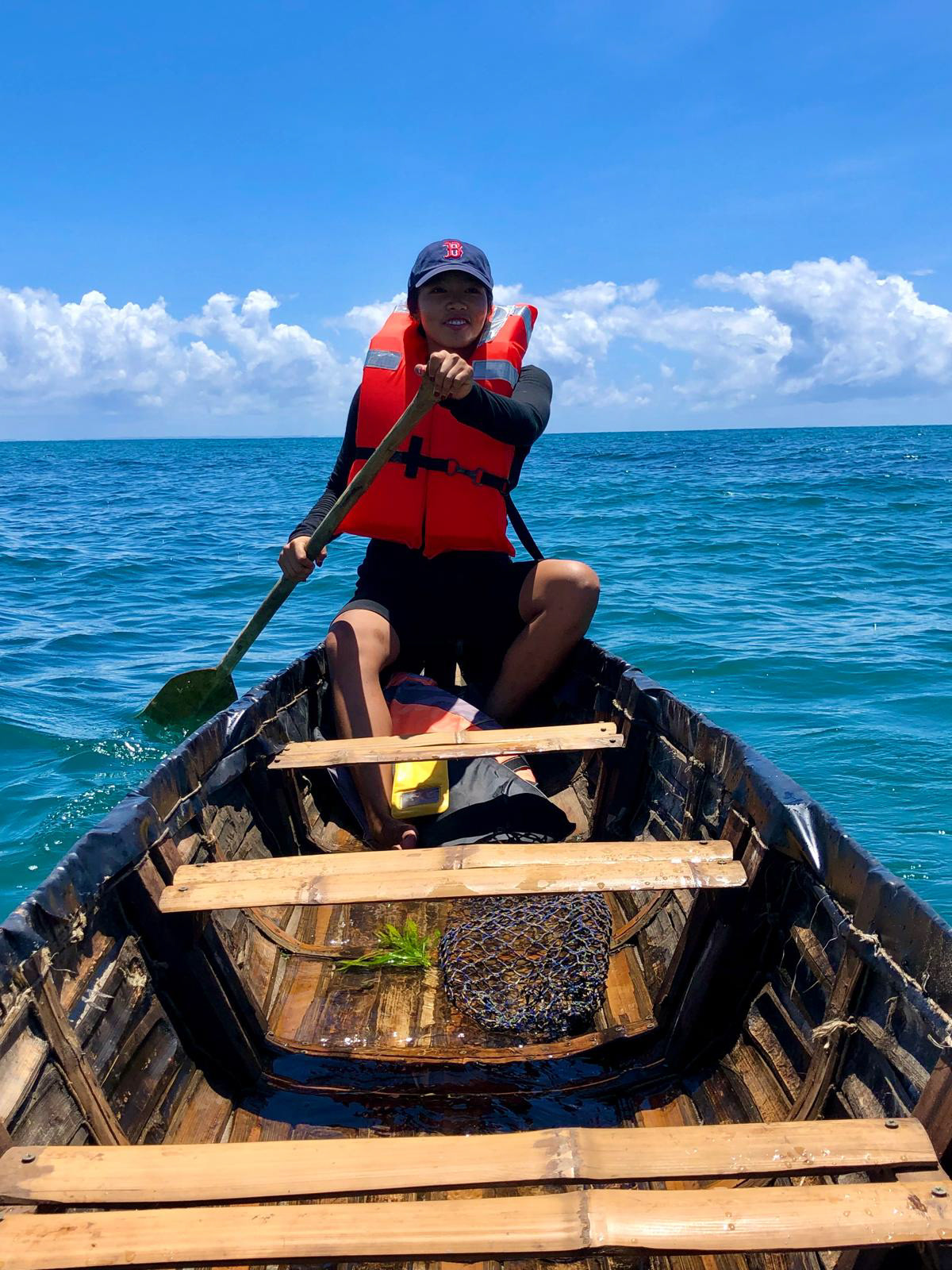
We finally took her out for a spin on the ocean! Prior to this excursion, some kids from the neighborhood decided to carve their names into the bottom of the boat with a knife while I was gone. Lesson learned - this boat is more susceptible to sabatoge than the regular wooden boats. I found a way to seal the holes, but there was water still seeping from the bottom when we went out to sea. I will have to find a better material for covering the bottom that is less slashable, but luckily, the only rips in the material were from the ones intentionally made. It survived the trip in the ocean even after being dragged across the sand. I would also like to weigh the boat at some point, because it is significantly lighter than the wood canoes.
While out, my friend went diving for lobsters. We didn't catch any because we weren't in the right area, but he says during different times of the day, there are more where we are. The boat was very sturdy and was able to hold all three of us plus other materials without any issue. Next time we're on the boat, I will be going fishing!
In the meantime, I'm learning how to make nets for fishing. To catch fish and lobsters, my friends and I survey various parts of the ocean along the coast for optimal places to set up nets. They are set up in the form of a wall and their positions are marked by buoys we attach. We leave them out in the ocean overnight and then check early at dawn to see if any have been caught. Right now, we have about 10 nets, all of which were handmade.
In the following pictures, I am restoring broken nets and making new ones, as well as taking them from the water to see our catch. When we catch lobers, we place them in a lobster cage my friend previously made to harvest and sell them later.
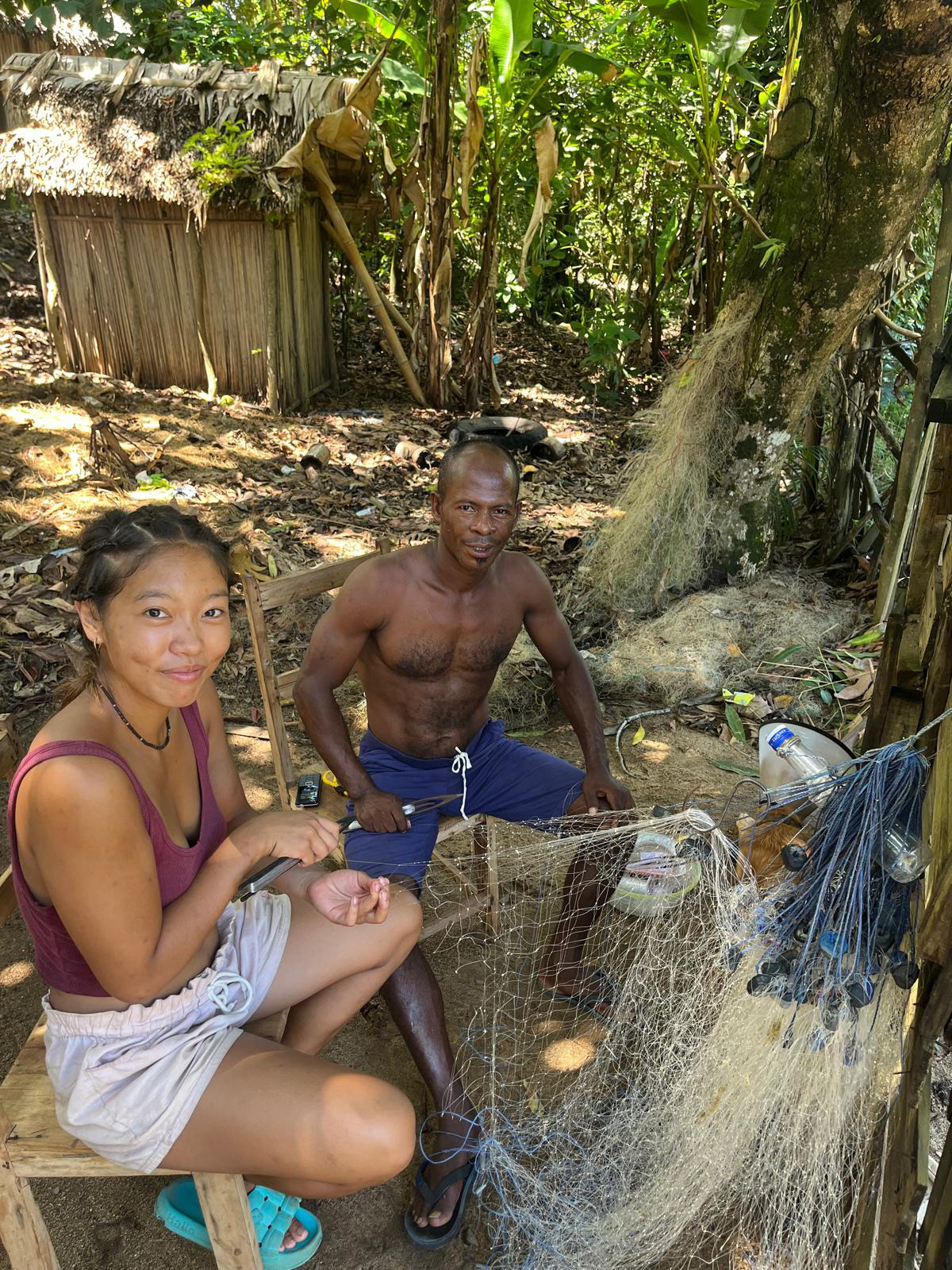
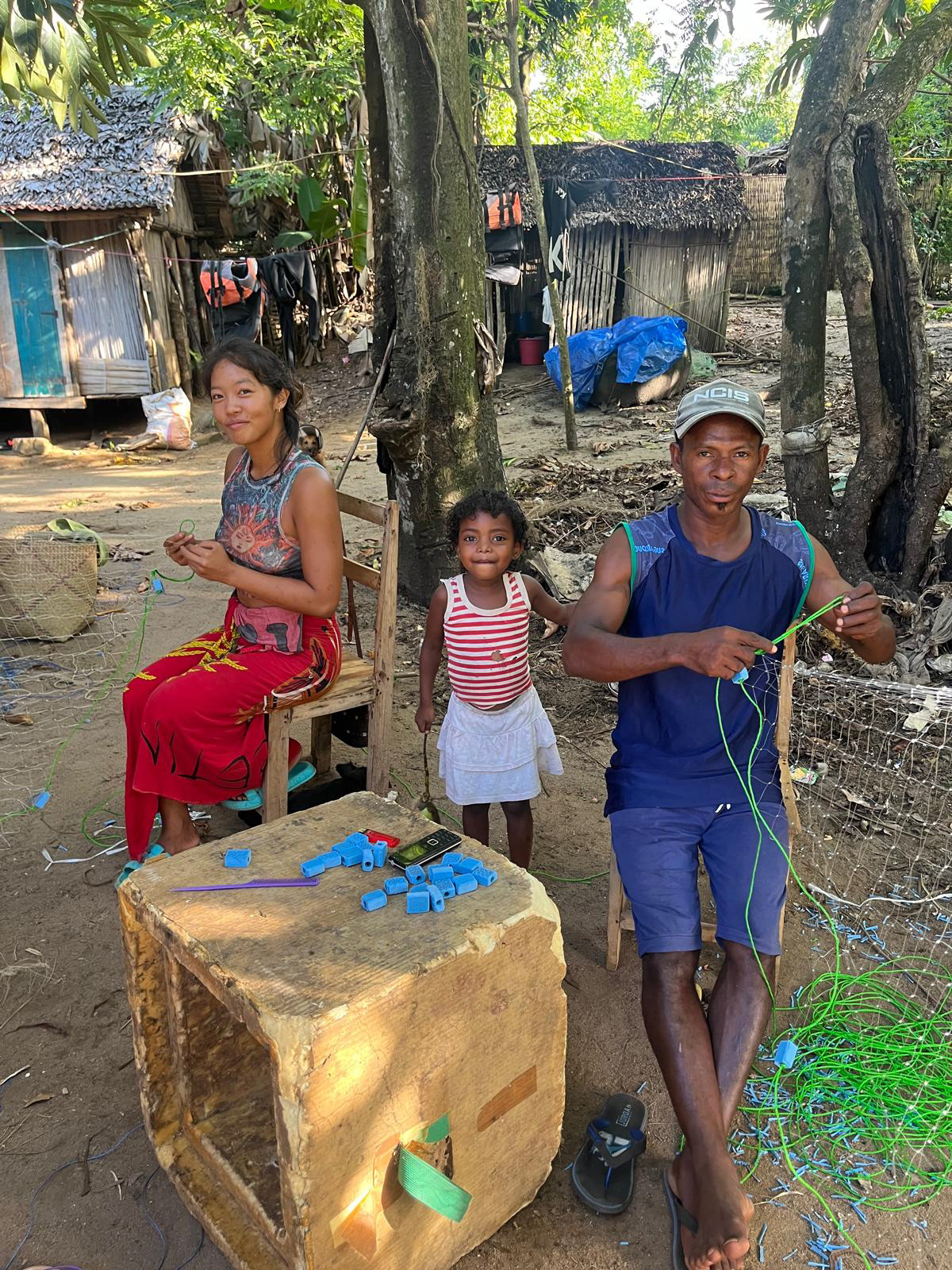
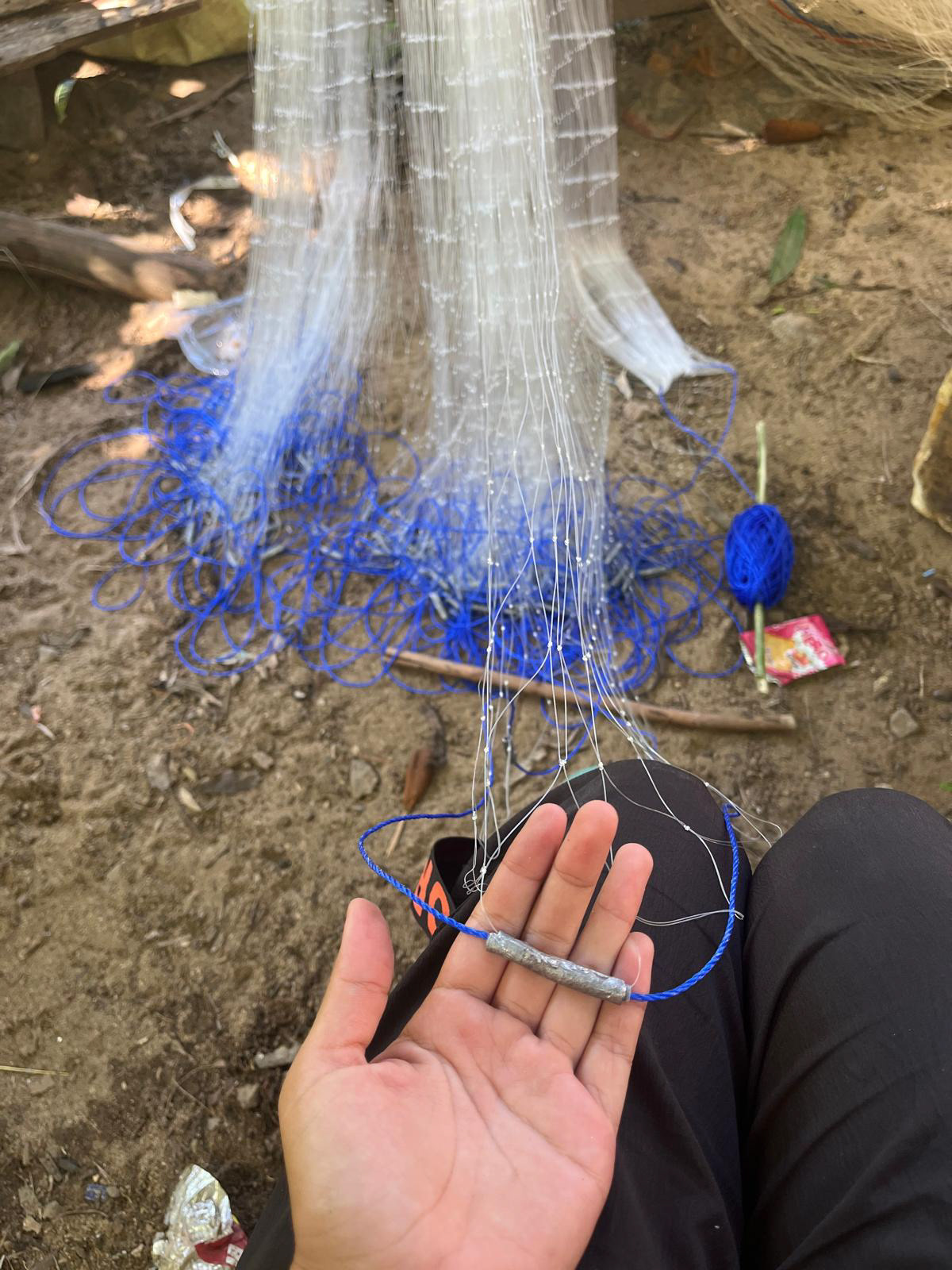
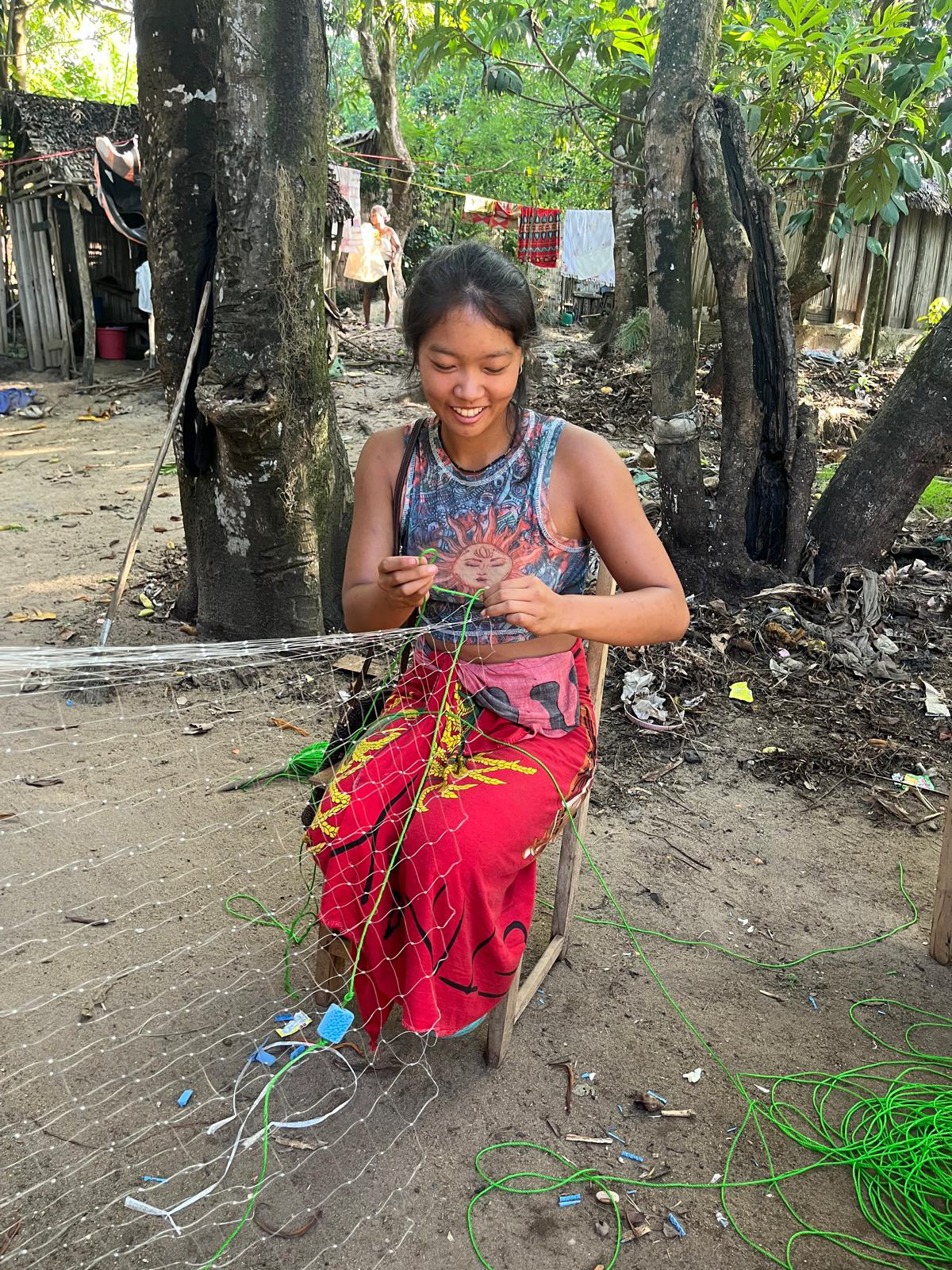
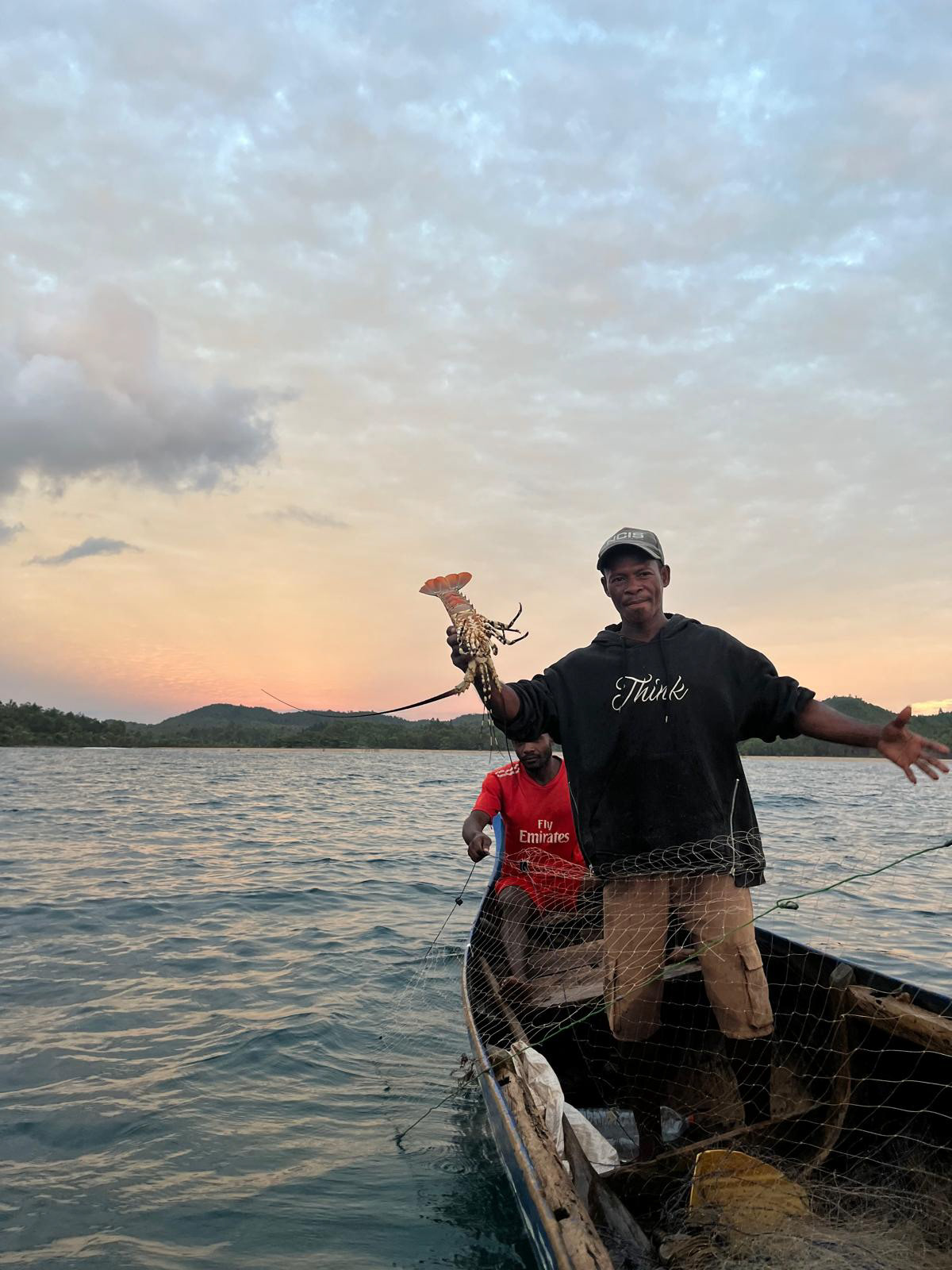
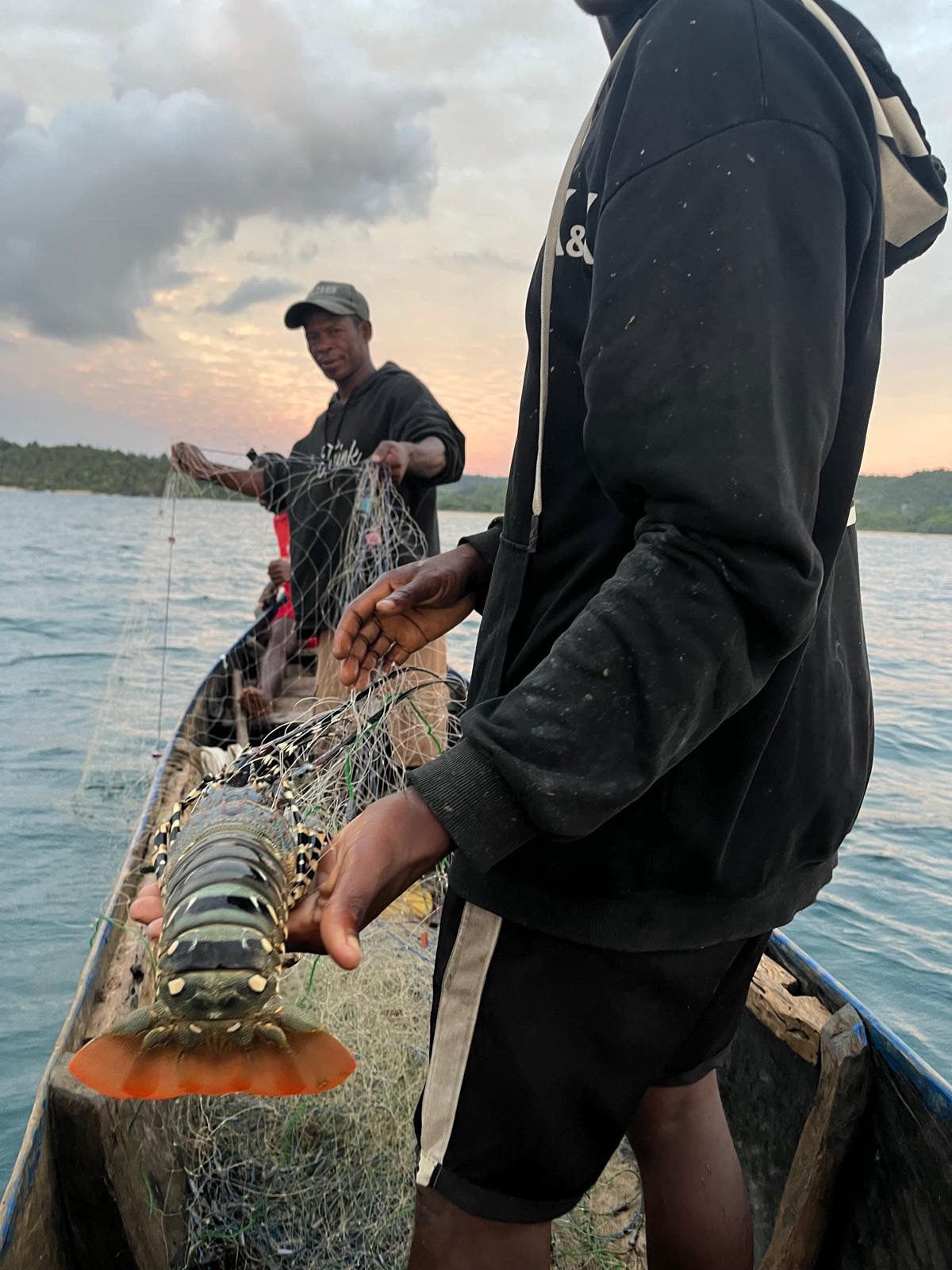
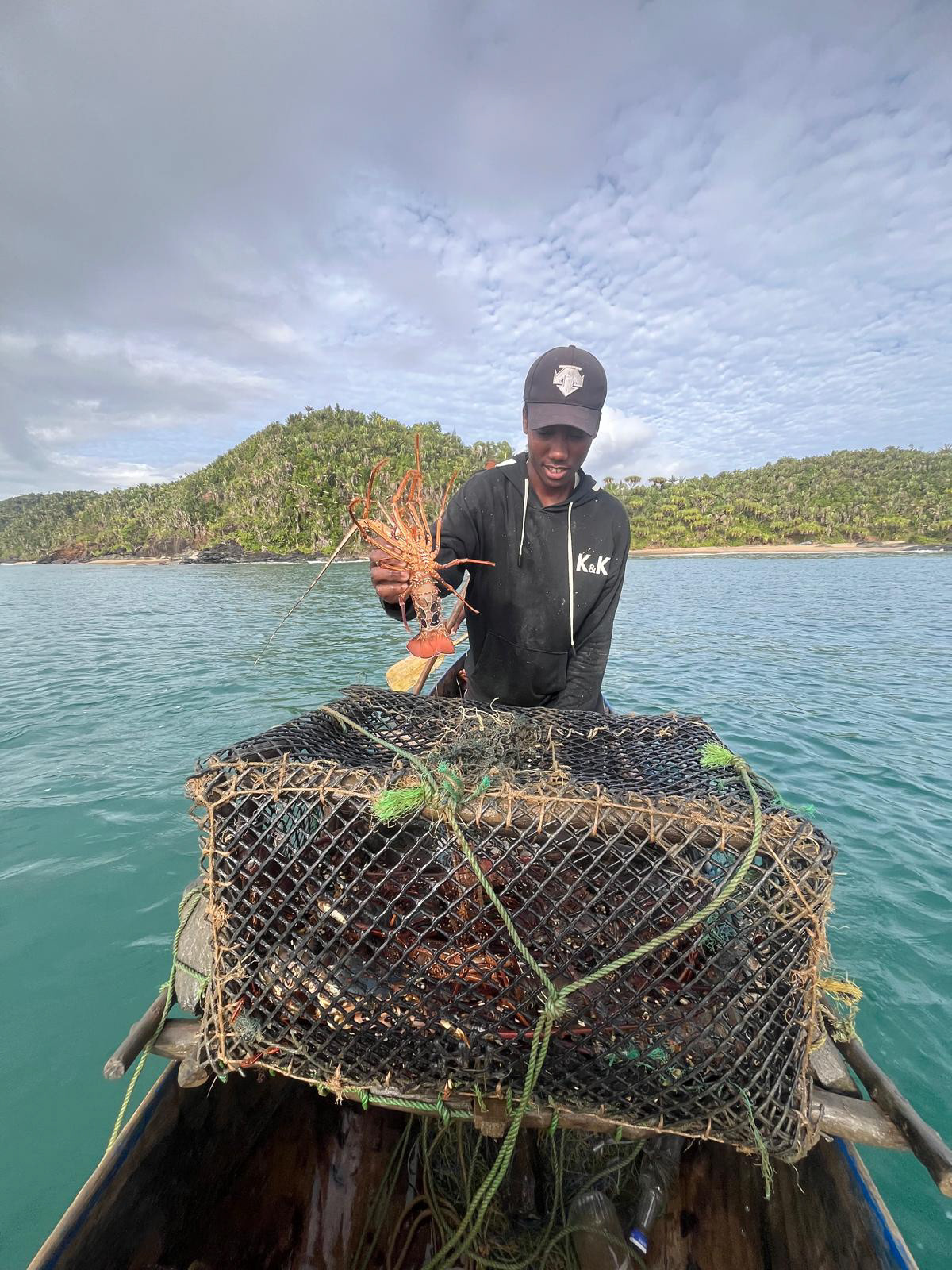
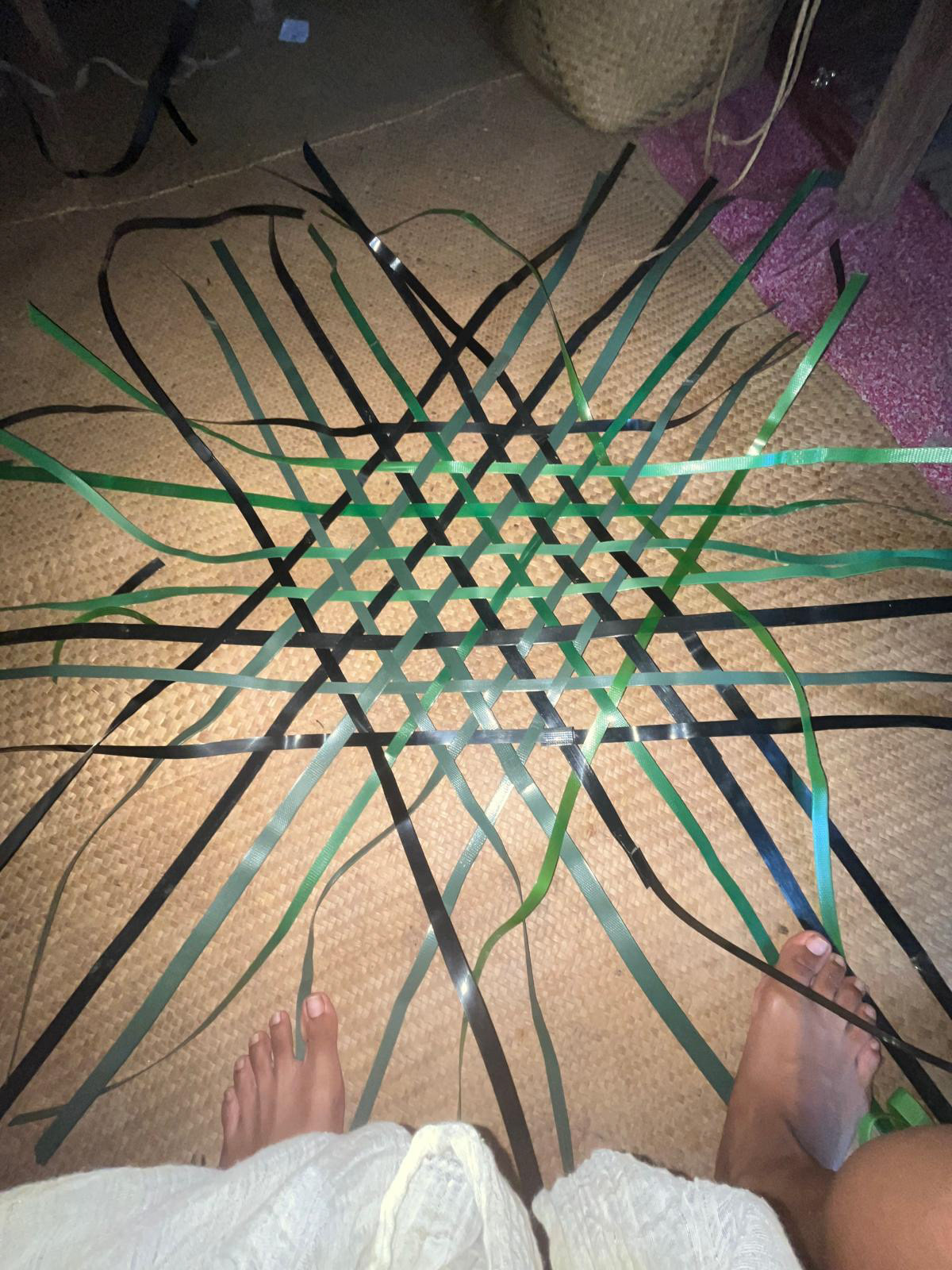

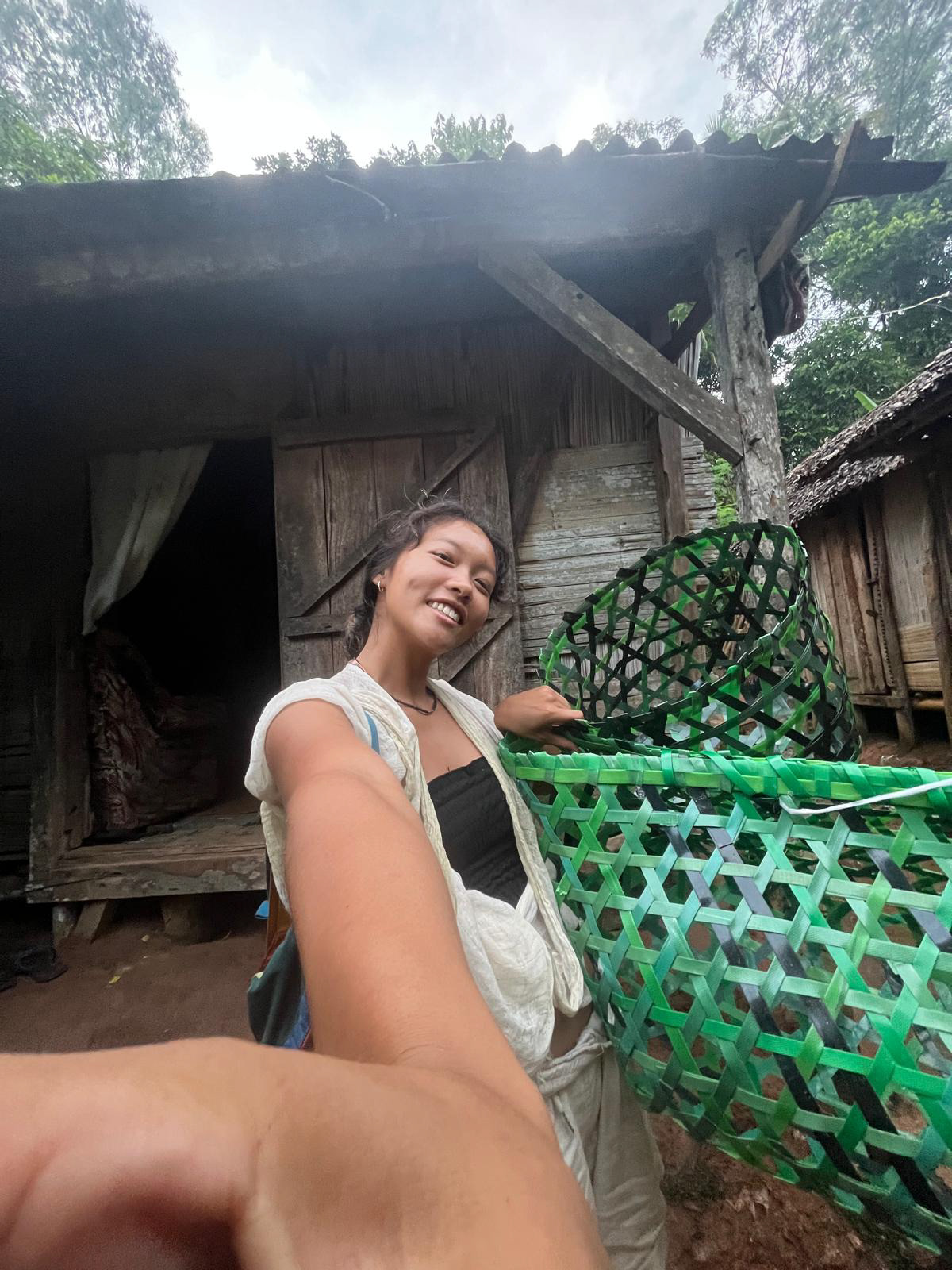
In addition, I am learning about making woven baskets because I want the second boat I make to be able to be done by a single person and weavable within a week. By using techniques that people are already familiar with, I'm hoping to introduce a method of making boats that is already familiar and not so intimidating to community members of all ages and genders.
I scheduled a meeting with the Presidents of Fishing Groups from various villages along a east coast, as well as the Director of Fishing in Fenerive Est, my banking town. We gathered to present and discuss coastal projects in Menatany, for which we need licenses and authorizations from the bureau to start.
In the beginning, I was having a difficult time finding my voice in the meeting because I was the only woman present, but as soon as my counterpart, Bosco, the president of my fishing in my village, started talking about the projects I've been doing in Menatany, the other presidents started taking interest in what I had to say. I was able to propose the building of bamboo boats in other villages, which was of great interest to everyone, so much so, that we changed the meeting location to see my boat in person. The presidents expressed an interest in starting initiatives to build their own bamboo boats in their respective villages. They were super impressed and even asked to hear about what my plans for coastal projects would look like if I had full control.
I ended up proposing my idea to make artificial reefs and fisheries along the east coast. Currently, it is cyclone season in Menatany which means that the ocean is dangerous and there is a smaller supply of fish available. Children have died from riptides and people have resorted to using beach seines which is really bad for the undersea landscape as it drags up kelp, coral, and other growing sealife that holds down the sand. Hauls have yielded tinier and a smaller diversity of fish compared to previous years.
I think that by creating underwater 3D structures and transplanting life from healthy reefs in nearby tourist spots known for calm waters, we can do our part in making sure the beaches of Menatany can provide for its community for decades. I have even been in touch with NGOs and kelp farmers about how to bring experts from their organizations to our small community. They have displayed interest in such a program, so we are now waiting for grant money to be unfrozen so we can move forward with this idea. In the mean time, I'm working with all the presidents to prepare a demande for project licenses to do this. More updates coming soon :D

